P.64 WHAT’S BREWING?


Caffè Vergnano’s CEO spills the beans on trends influencing coffee culture



















P.68 D(E)LUXE DRIVE




The 2024 Mercedes-AMG EQE is pushing the barriers of luxury and performance
BY EXAMPLE LEADING



INNOVATION, CUSTOMER VALUE AND SUSTAINABILITY ARE POWERING THE PROFITABILITY OF THE SMART DEVICE BRAND, SAYS OPPO MEA’S PRESIDENT CHI ZHOU


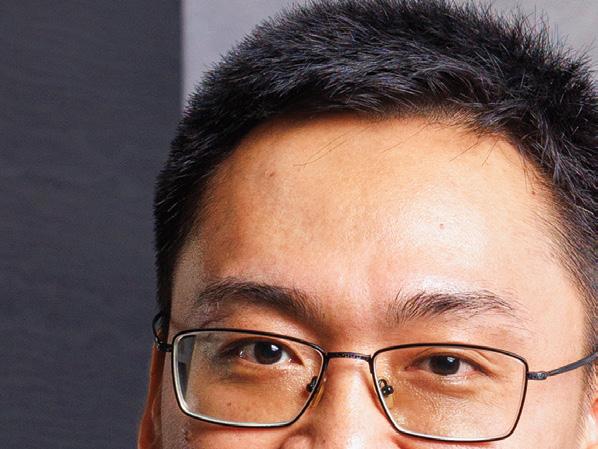
SPECIAL REPORT: TOP REGIONAL STARTUPS TO WATCH IN 2023 gulfbusiness.com / AUGUST 2023 BD 2.10 KD 1.70 RO 2.10 SR 20 DHS 20
Calling all podcasters and content creators!










Whether you are looking to record, edit or manage your podcast, our fully equipped podcast and video recording studio has it all.

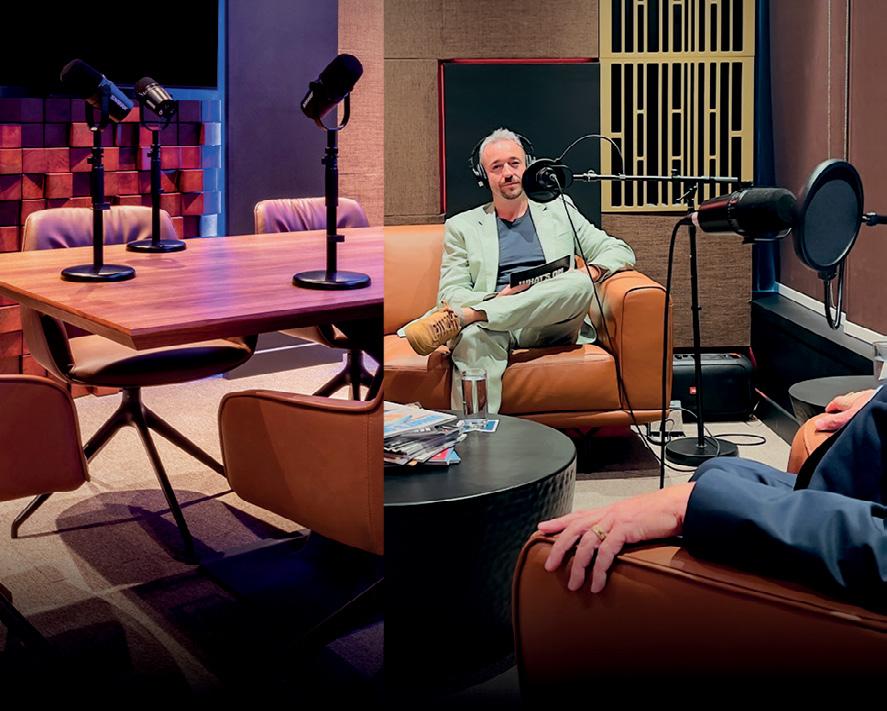

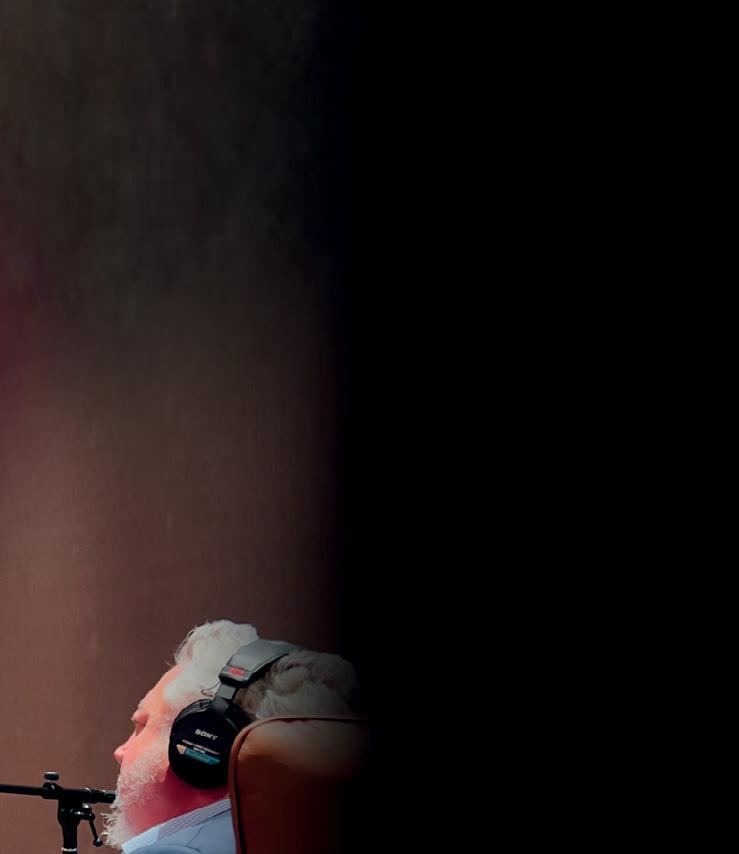
+971 4 427 3000 | podcast@motivate.ae
YOUR STUDIO motivatemedia.com
BOOK
Gulf Business
05
The brief
An insight into the news and trends shaping the region with perceptive commentary and analysis
43 Special report
Startup showcase: We shine the spotlight on 12 of the region’s promising startups. Also, meet the founders of three companies that focus on value creation with their innovative offerings
28 Innovation driven by inspiration


OPPO MEA’s new president Chi Zhou shares how the smart device brand has boosted its competitive edge in the region

gulfbusiness.com August 2023 3
CONTENTS / AUGUST 2023
Illustration: Getty images/Stockbyte
Illustration: Getty images/Jordan Adams
Pics: Supplied





Cherish those shoes: How Golden Goose is adding an artisanal touch to sneakers p.60



Dr(e)am drive: On the road with Mercedes’ 2024 EQE SUV p.68


Work wonders: Latest laptops for business and creative professionals p.72
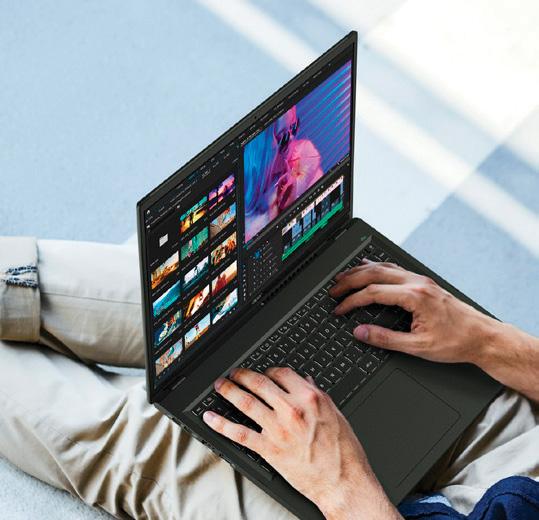

“Dubai has emerged as one of the cities with the fastest rates of adoption of new technologies and the highest uptake of their cutting-edge applications across the economy and government.”
Co ee, anyone?
Editor-in-chief Obaid Humaid Al Tayer
Managing partner and group editor Ian Fairservice
Chief commercial o cer Anthony Milne anthony@motivate.ae
Publisher Manish Chopra manish.chopra@motivate.ae
Editor Neesha Salian neesha.salian@motivate.ae
Digital editor Marisha Singh marisha.singh@motivate.ae
Tech editor Divsha Bhat divsha.bhat@motivate.ae
Senior feature writer Kudakwashe Muzoriwa
Kudakwashe.Muzoriwa@motivate.ae


Senior art director Freddie N. Colinares freddie@motivate.ae














Senior art director Olga Petro olga.petro @motivate.ae
General manager – production S Sunil Kumar


Production manager Binu Purandaran
Production supervisor Venita Pinto
Group sales manager Mansi Khatwani
Mansi.Khatwani@motivate.ae
Senior sales manager Sangeetha J S Sangeetha.js@motivate.ae
Group marketing manager Joelle AlBeaino joelle.albeaino@motivate.ae

Cover: Freddie N Colinares
CONTENTS Follow us on social media: Linkedin: Gulf Business Facebook: GulfBusiness Twitter: @GulfBusiness Instagram: @GulfBusiness
gulfbusiness.com 4 August 2023
Sheikh Hamdan bin Mohammed bin Rashid Al Maktoum, Crown Prince of Dubai and Chairman of Dubai Executive Council
59 Lifestyle
64
There is a growing appreciation for specialty co ee in the UAE, says Carolina Vergnano, CEO of the premium Italian co ee brand Caf è Vergnano / AUGUST 2023 HEAD OFFICE: Media One Tower, Dubai Media City, PO Box 2331, Dubai, UAE, Tel: +971 4 427 3000, Fax: +971 4 428 2260, motivate@motivate.ae DUBAI MEDIA CITY: SD 2-94, 2nd Floor, Building 2, Dubai, UAE, Tel: +971 4 390 3550, Fax: +971 4 390 4845 ABU DHABI: PO Box 43072, UAE, Tel: +971 2 677 2005, Fax: +971 2 677 0124, motivate-adh@motivate.ae SAUDI ARABIA: Regus Offices No. 455 - 456, 4th Floor, Hamad Tower, King Fahad Road, Al Olaya, Riyadh, KSA, Tel: +966 11 834 3595 / +966 11 834 3596, motivate@motivate.ae LONDON: Acre House, 11/15 William Road, London NW1 3ER, UK, motivateuk@motivate.ae

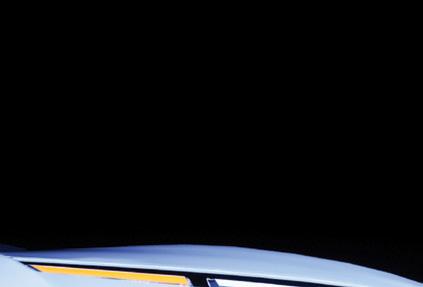










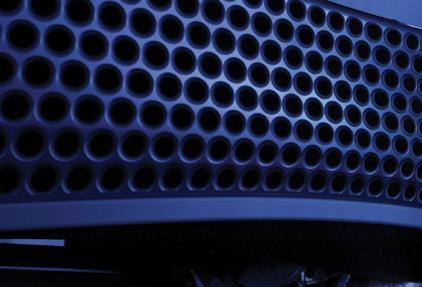

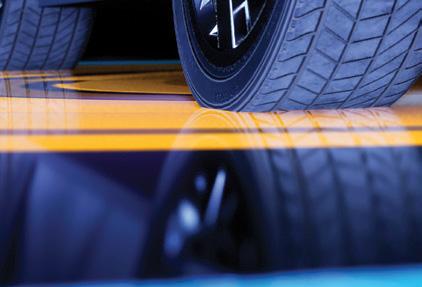









gulfbusiness.com August 2023 5 Crypto Assets 07 Green Finance 10 Board Governance 12 Customer Experience 18 Productivity 22 AUG
EV
We explore how the Middle East can ramp up supply chains for raw materials to build greater control over EV battery production p.14 23 The Brief 50% 45% 40% 35% 30% 25% 20% 15% 10% 5% 0% THE IMPACT OF THE DUBAI METRO ON RESIDENTIAL PRICES AND RENTS 24.1% 35.8% 43.8% 0.2% SOURCE CBRE RESEARCH/ REIDIN AVERAGE RESIDENTIAL PRICE GROWTH BY PROXIMITY, Q1 2010 - Q4 2022 ILLUSTRATION: GETTY IMAGES/ 3ALEXD DUBAI AVERAGE 0 TO 5-MINUTE WALKING DISTANCE 5 TO 10-MINUTE WALKING DISTANCE 10 TO 15-MINUTE WALKING DISTANCE
Tackling
supply chain challenges
Billionaires club
The world’s 500 richest people added $852 billion to their fortunes in the first half of 2023.

Each member of the Bloomberg Billionaires Index made an average of $14m per day over the past six months, according to data compiled by Bloomberg. It was the best half-year for billionaires since the back half of 2020, when the economy rebounded from a Covid-induced slump.
The gains coincided with a broad stock market rally, as investors brushed off the effects of central bank interest rate hikes, the ongoing war in Ukraine and a crisis in regional banks. The S&P 500 rose 16 per cent and the Nasdaq 100 surged 39 per cent for its best-ever first half as investor mania over artificial intelligence boosted tech stocks.
BATTLING IT OUT
While Elon Musk and Mark Zuckerberg flirt with scheduling a cage match, Tesla’s chief executive
ADANI’S FIRST-HALF LOSSES WERE THE STEEPEST
ADANI GROUP CHAIRMAN’S NET WORTH PLUNGED $60.2BN AFTER REPORT BY SHORT SELLER HINDENBURG $0B
-20
-40
-60
-80
YTD change in net worth
SOURCE: BLOOMBERG
gulfbusiness.com 6 August 2023
Elon Musk and Mark Zuckerberg lead the $852bn wealth surge seen among the world’s richest people in H1 2023
The Brief / World’s Richest ILLUSTRATION: GETTY IMAGES/ HELEN KING
Gautam Adani
officer came out on top in dollar terms. Musk, the world’s richest person, added $96.6bn to his net worth this year through June 30, while Meta Platforms CEO Zuckerberg gained $58.9bn.
Gautam Adani’s net worth sank the most in the six-month period, losing $60.2bn. Adani, chairman of Adani Group, also posted the biggest one-day loss of any billionaire, shedding about $20.8bn on January 27, after short seller Hindenburg Research accused his conglomerate of accounting fraud and stock manipulation — a claim Adani denies.
GOING UP THE LADDER
Hindenburg, founded by Nate Anderson, also knocked down the net worth of another billionaire: Carl Icahn. His Icahn Enterprises had its steepest one-day drop after Hindenburg disclosed it was shorting the shares, saying the stock was significantly overvalued relative to its holdings.
Icahn’s net worth fell $13.4bn, or 57 per cent — the largest percentage drop of any member of the Bloomberg Billionaires Index in the period. Bloomberg
Finding the right balance
The new CBUAE guidance related to the virtual assets sector is aimed at strengthening the supervisory and regulatory frameworks of the country’s central bank and other relevant bodies in line with global best practices
In May, the Central Bank of UAE (CBUAE) issued a comprehensive ‘guidance’ for licensed financial institutions (LFI), such as banks, finance companies, exchange houses, payment service providers and others, when dealing with virtual assets (VAs) (also called crypto assets) and virtual assets service providers (VASPs).

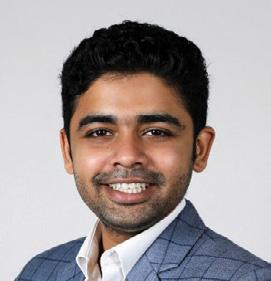
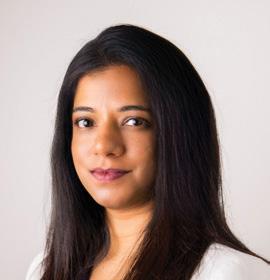

The guidance is aligned with the UAE’s approach towards regulating the VA sector with cautious optimism. We like to call it the UAE Falcon’s “openarms-but-sharp-claws” approach, where the UAE seeks to provide an enabling framework to the VA sector, but does not at any cost compromise on screening and weeding out bad actors.
The move has been welcomed by all stakeholders, including the VA as well as the traditional financial sectors. It provides a nuanced understanding of what the VA sector is and how it interfaces with LFIs in the traditional financial space, balances the desire for operational clarity with the need for risk mitigation, and (sets out clear guardrails for LFIs when dealing with VA/VASPs in terms of what is
gulfbusiness.com August 2023 7 The Brief / Crypto Assets
COMMENT
ILLUSTRATION:
MARK ZUCKERBERG GAINED $58.9 BILLION ELON MUSK ADDED TO HIS NET WORTH THIS YEAR THROUGH JUNE 30 $96.6 BILLION EACH MEMBER OF THE BLOOMBERG BILLIONAIRES INDEX MADE AN AVERAGE OF $14 MILLION PER DAY
GETTY IMAGES/ MUNANDME
Praveena Pechetti and Ratul Roshan, senior associates, and Ankita Dhawan, senior associate designate, KARM Legal Consultants
The Brief / Crypto Assets
and isn’t acceptable in line with global best practices set forth by the Financial Action Task Force. We unpack these in detail below.
NUANCED UNDERSTANDING
The guidance offers a clear understanding of the VA sector. It states that most VASPs operating in the UAE operate as exchanges, brokers, or provide transmission services. This leaves little room for differential interpretation.
Notably, the guidance states that VAs should be assessed by their features and not their nomenclature, and clarifies that, “No asset should be considered a virtual asset and a traditional financial asset (for example, a security) at the same time”. Further, it provides that NFTs (non-fungible tokens) will not be treated as VAs, and stablecoins may be considered VAs, depending on their characteristics. This is a step in the right direction for ensuring regulatory predictability for assets that have remained in the regulatory grey area.
Then, the guidance details various ways in which VA/VASPs interface with LFIs, and may thus be exposed to AML/CFT risks. The interaction between VASPs and LFIs could be direct (say through a customer-service provider relationship between a VASP and an bank). It could also be indirect, say through the exposure of bank customers that engage with VASPs, or through a bank’s own proprietary investments in VAs.
BALANCING OPERATIONAL CLARITY WITH RISK MANAGEMENT
The guidance recognises two kinds of accounts – operational accounts (such as accounts used by VASPs for administrative purposes) and transactional accounts (such as accounts opened to hold client funds).
It clarifies that operational accounts may be opened by LFIs without submitting a request for nonobjection to the CBUAE. This enhances ease of doing business for VASPs. On the other hand, for opening a transactional account, a VASP will be required to take an NOC from CBUAE, which will be granted on a case-by-case basis. The guidance also requires LFIs
to have formal written agreements and policies when dealing with VASPs to mitigate any reputational risk, or risk of loss. This ensures high standards of risk management built in by design.
OBLIGATIONS AND GUARDRAILS
The guidance prohibits LFIs from establishing any relationships or processing any transactions with a VASP without an appropriate license from the competent UAE authorities (even if the VASP is licensed outside the UAE).
This reduces the risk at the first level itself by limiting the VASPs LFIs can deal with to those who have already met the stringent licensing criteria set out by the VA regulatory authorities in the UAE, such as Securities and Commodities Authority, Virtual Assets Regulatory Authority, Financial Services Regulatory Authority and Dubai Financial Services Authority.
The guidance also sets out red flags which LFIs must bear in mind when assessing VASPs. These include transactions structuring, transaction values, transaction volumes, transaction frequency, transaction patterns, anonymity, sources of funds or wealth, geographical risks, among others. This creates a risk-based sifting mechanism, and mandates LFIs to monitor, screen and act upon highrisk transactions.
DEMYSTIFYING THE ENVIRONMENT
The guidance came into effect on July 1, and the industry players are in the process of engaging with commercial banks.
It remains to be seen how the guidance will impact LFIs and VASPs operationally, on a day-today basis. The industry is hopeful that the impact will be positive.
As regards the long-term horizon, the guidance has to be seen in conjunction with the other recent developments. The UAE has become an attractive yet credible destination for some of the largest crypto players in the world. This comes at the back of curated enabling regulations combined with targetted enforcement action by bespoke regulators – the same open-arms-but-sharp-claws approach.
The UAE is also wary of the cross-border implications of VAs and has begun engaging with other regulators. For example, CBUAE and the Hong Kong Monetary Authority agreed to strengthen cooperation in three major areas including financial infrastructure, financial market connectivity and virtual asset regulations and developments.
Such novel approaches to international collaboration can truly make the UAE a global hub for the VA sector.
gulfbusiness.com 8 August 2023
UCIUM NUM ES A VOLUPTI USANIMPORRUM EOS EOS QUI SUNTIS MO EVENDAE EXPERUMENIS ALICI TEM SUMQUAE STIORAESSIT, SIT, SUM ISTI RA NATIBUST, 01. INFRASTRUCTURE 02. FINANCIAL MARKET 03. VIRTUAL ASSET REGULATIONS AND DEVELOPMENTS CBUAE AND THE HONG KONG MONETARY AUTHORITY AGREED TO STRENGTHEN COOPERATION IN THREE MAJOR AREAS: @
Tailored for success
With ASUS BUSINESS, organisations can confidently rely on solutions that drive productivity and set new standards in the industry, backed by a legacy of excellence and innovation.

ExpertBook B1 (B1402)

The ExpertBook B1 offers an innovative viewing experience, featuring a 14-inch NanoEdge display with a wide 178degree viewing angle. Its compact design allows for easy portability, fitting effortlessly into backpacks, making it ideal for on-the-go productivity.
ASUS BUSINESS sets itself apart by consistently showcasing advanced technology and exclusive solutions, making it a prime choice for businesses of all scales seeking innovation and reliability. The brand’s devices are designed to endure the test of time, with the ASUS motherboard featuring 100 per cent solid capacitors for long-term usage, ensuring stability and longevity.
Moreover, the devices feature a US military-grade 810 reliability, incorporating optimised construction to withstand challenging environments. Furthermore, its 80 PLUS Platinum PSU enhances efficiency, minimising longterm costs and environmental impact.
ASUS’ commitment to innovative technology is evident through features such as the two-way AI noise cancelling, which enables better recognition of human voice while filtering out ambient noise during virtual meetings, ensuring clear communication.
Additionally, ASUS BUSINESS incorporates an anti-bacterial keyboard, effectively preventing germs and bacteria from accumulating on the keyboard – a crucial aspect for maintaining a hygienic workspace.
Powered by an advanced 12th Gen Intel Core processor, users can enjoy high-performance capabilities for demanding tasks. With up to 48GB memory, the ExpertBook B1 is perfect for intensive workloads, offering quick access to essential content. It proves to be an excellent choice for small and medium enterprises, education, retail and manufacturing sectors.
ASUS A3402
Catering to the government and enterprise sectors, the ASUS A3402 features a stylish design that seamlessly fits into any home or office setting. With its classic yet elegant integrated stand, it complements chic lifestyles while ensuring complete stability and
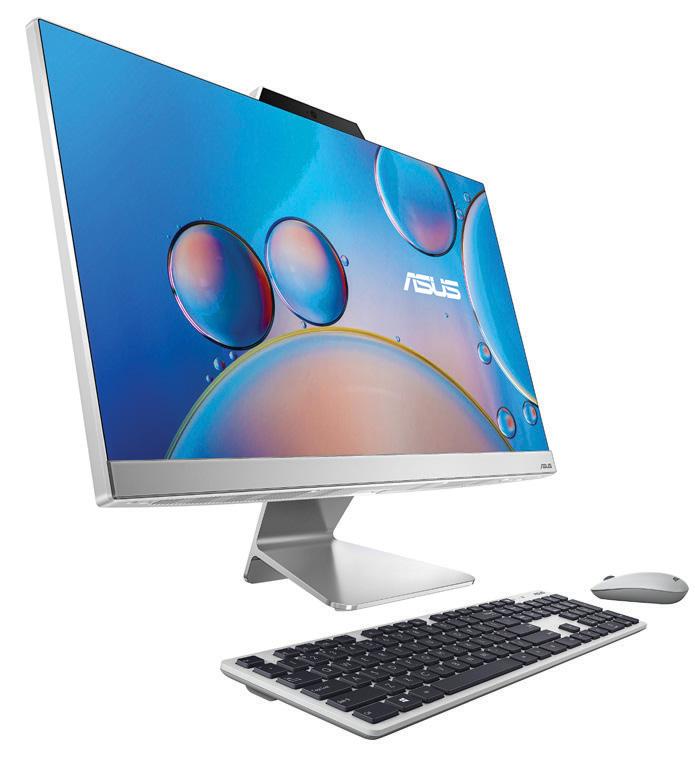
a sleek appearance. The NanoEdge display enhances visual experiences with a 100 per cent sRGB colour gamut, resulting in vivid and realistic colours. Exclusive ASUS Splendid technology further ensures true-tolife colour representation, while the Vivid mode allows users to elevate colour saturation for beautiful images.
Meanwhile, when it comes to multimedia immersion, the ASUS A3402 doesn’t disappoint. Its powerful audio system features high-quality stereo speakers capable of delivering 6W of rich sound. Thanks to an advanced bass-reflex design, the device produces smooth and powerful bass, accompanied by clear, full-range sound. Whether for work or entertainment, the device provides a premium computing experience tailored to the needs of discerning professionals and enterprises.
ExpertCenter D500 (D500MD)
The ExpertCenter D500 strikes an ideal balance between performance and size, offering extensive versatility and tool-free expandability to tackle various tasks efficiently. Committed to sustainability, ExpertCenter PCs adhere to strict environmental standards throughout their lifecycle, optimising energy usage for long-term cost savings. The multi-channel cooling system ensures lower heat production, leading to increased productivity. The spacious chassis enables better heat dissipation, contributing to overall system efficiency. Designed for the education, retail, manufacturing and healthcare sectors, the ExpertCenter D500 is a reliable choice that tops in meeting diverse business needs.
BRAND VIEW
How ASUS BUSINESS solution is meeting the diverse needs of organisations and professionals
Building a greener economy: How banks in the region can help

First Abu Dhabi Bank (FAB) issued a five-year $600m bond earlier this year, priced at 95 basis points over US Treasuries and oversubscribed by 2.8x. The use of proceeds for FAB’s green bonds include investment in renewable energy, terrestrial and aquatic biodiversity and climate change adaptation.
As the UAE gears up for COP28 in November, the world’s attention will focus on the MENA region and its contribution to global climate change objectives.
Back in February, The London Institute of Banking & Finance MENA published a white paper on why banks in the region need to move beyond reporting on ESG to getting comprehensive data on climate risk. The paper highlighted the Task Force on Climaterelated Financial Disclosures’ (TCFD) status report of October 2022, which found that just 25 per cent of all firms in the Middle East report on their exposure to climate change – the lowest score globally.
That said, the region’s banks are busy on ESG investments and building green portfolios. The Commercial Bank of Dubai, for example, recently announced its inaugural $500m green bond.
The bottom line is that the MENA region, as a major oil economy, faces both some of the biggest challenges and opportunities on the global path to net zero and its banks are starting to embrace them.
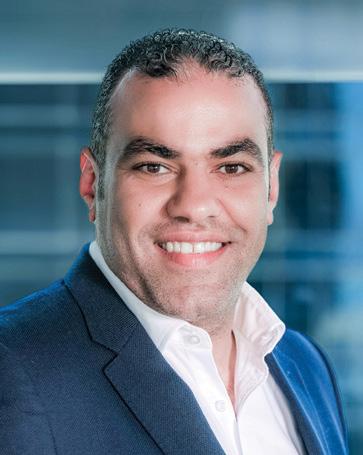
WHAT ARE THE OPPORTUNITIES FOR BANKS?
A Gartner survey of CEOs and other senior business executives, conducted in late 2021, put environmental sustainability eighth on the list of global business priorities – the first time it entered the top ten.
The shift in priorities means there are massive opportunities for banks in MENA that are willing to finance sustainable business objectives and help the drive towards net zero and a greener economy. In particular, they have deep expertise in fossil-fuel industries, which should serve them well as they advise on the transition.
gulfbusiness.com 10 August 2023 The Brief / Green Finance
ILLUSTRATION:
GETTY IMAGES/ JORDAN ADAMS
We explore the opportunities for banks, and some of the possible challenges
HOW CAN BANKS IN MENA SUPPORT THE TRANSITION TO NET ZERO?
The most transformative way that banks can help support climate goals is with ESG-focused financing in the retail and the commercial markets. This might involve offering preferential terms for the financing of environmentally conscious purchases, projects or businesses developments.
Commercial lending promises to make the biggest impact. For example, there is a focus on smart cities and buildings in the MENA region – which means there’s no shortage of opportunities for ESG investing in infrastructure and real estate. Project-financing of even larger-scale infrastructure developments is an area in which many banks in the region have particular expertise.
There are also opportunities when it comes to electric vehicles. Banks can work with corporate clients to support the transition of their vehicle fleets to EVs. This can involve providing financing solutions tailored to fleet requirements, offering fleet management services, and advising on the integration of EVs into existing operations. In addition, there’s also scope for banks to work with EV manufacturers, dealerships, and relevant stakeholders to promote the adoption of EVs.
MOVING AWAY FROM OIL AND GAS
Banks in the MENA region have specific expertise in oil and gas and can leverage this in several ways. Most significantly, they can provide specialised advisory services to oil and gas companies and clients in related sectors, helping them transition to lowcarbon alternatives. These services might include helping to assess the financial risks and opportunities associated with the energy transition or providing guidance on sustainable business models.
Banks, we shouldn’t forget, are the fundamental conduit for channelling short-term deposits into long-term investments. The decisions they make on ESG will shape the future of the region’s economy.
THE ROLE OF THE REGULATORS
The central role that banks play in capital allocation is why regulators want them to help usher in a new era of green finance.
Several regulators from the MENA region have signed up to the Central Banks and Supervisors Network for Greening the Financial System (NGFS). The network looks to establish effective approaches to climate-related risk management in the financial sector and exploring ways in which mainstream finance can support the transition towards a greener economy. These include the Financial Services Regulatory Authority (FSRA) of Abu Dhabi Global Market (ADGM), the Dubai Financial Services Authority (DFSA) at Dubai International Financial Centre (DIFC), the Financial Regulatory Authority (FRA) Egypt, and the central banks of Egypt, Jordan, and Lebanon.
Membership of NGFS means that regulators in MENA can share ‘best practice’ and help shape the global debate.
Banks, too, will be part of that debate on innovative financial solutions for a sustainable future. And those who act now to adopt greener business models and implement processes to identify, manage and mitigate climate risk, including by transitioning to net zero, will find themselves ahead of the game.
THE IMPORTANCE OF THE ‘G’ IN ESG
What makes headlines in ‘ESG’ is the ‘E’ –environmental. People – as they should be – are touched by pictures of snow leopards and endangered wild ostriches. The ‘G’ which stands for governance is less photogenic. However, I would argue that it is only with adequate governance that banks and financial institutions can be steered towards net zero and other climate change goals.
But the problem is not just that governance is ignored, it’s also that it’s not easy to do well. For example, staff need to be engaged with an organisation’s climate goals and given the necessary skills to play their role – whether that’s through ongoing training and capacity building, or simply by making ESG issues part of their day-to-day working lives. And ESG cuts right across a bank’s business, both externally and internally. That means that, moving forward, banks will need a holistic approach that recognises the synergistic nature of ESG.
Business transformation is challenging, there’s no doubt about it, but, ultimately, the push to net zero will require just that: a new way of doing business. Climate change is a global crisis that affects us all – and banks in MENA have a key role to play in tackling it.
gulfbusiness.com August 2023 11
“THERE ARE ALSO OPPORTUNITIES WHEN IT COMES TO ELECTRIC VEHICLES. BANKS CAN WORK WITH CORPORATE CLIENTS TO SUPPORT THE TRANSITION OF THEIR VEHICLE FLEETS TO EVS”
Kareem Refaay, managing director, The London Institute of Banking & Finance MENA
THE COMMERCIAL BANK OF DUBAI RECENTLY ANNOUNCED ITS
INAUGURAL $500M GREEN BOND
The bigger picture
unicorns burn as much as Dhs750 to generate one dirham revenue) to play up the valuation game and get their ‘x’ returns by exiting via an IPO within three-four years as against the earlier norm of over 10 years. They don’t hesitate to spend millions in the media to hype up the public imagination and transfer the burden of their profiteering to unsuspecting public investors.
As of September 2020, the Middle East had eight unicorns (one from the UAE and seven from Israel), but by July 2022, this has shrunk to just five (Fawry, Kitopi, EMPG, Swvl and Careem). Scalability seems to be a key issue despite having the potential and a good ecosystem to create more unicorns in the region. Of the five unicorns, four are from the UAE and one from Egypt.
Compare this to India, which scored a century of unicorns in 2022. Unicorns are privately held startups with a valuation of over $1bn. The Indian media and government boasted of beating China in the number of new unicorns added, but no one talked about the issue of value creation, and whether these companies will continue to create value post IPOs.
As one startup founder from India said, venture capitalists (VCs) push for a high burn rate (some

The median post-money valuation (PMV) of a unicorn is $1.3bn. According to Stanford research, PMV is almost always higher than fair market value (by as much as 50 per cent), which means startups with a $1bn PMV in a private round would not be counted as unicorns if measured by fair market value. Together, the 100 Indian unicorns raised over $90bn at a combined PMV of $30bn. The post-IPO performance of the few has not been great, and they will take years to turn a profit.
Isn’t it time for the deep-pocketed investors to also insist on good governance systems to drive

gulfbusiness.com 12 August 2023
When it comes to fast-growing startups, investors should insist on good governance systems and value creation instead of just valuation to drive profitability
UNICORNS ARE PRIVATELY HELD STARTUPS WITH A VALUATION OF OVER $1BN
ILLUSTRATION: GETTY IMAGES/JACKIE NIAM
Dr M Muneer, co-founder of the nonprofit Medici Institute
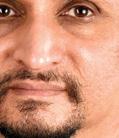
profitability instead of just valuation, discounting years of earnings down the line?

Zomato, valued at $9bn pre-IPO, has a market cap of $7bn, with pre-IPO revenue of just under $250m and over $100m in loss as of financial year (FY) 2021-22. And one of its founders recently stepped down. Byju’s, the highest-valued unicorn in India at $23bn reported a loss in FY2021 that was 10 times more than the cumulative losses of its previous seven years.
Globally too, there are enough examples from Ly t and Uber to DoorDash and WeWork. The tech revolution has driven the lightning growth of both valuation and publicity. Perhaps, the GCC startups are doing something right.
Fast-growing startups pose many challenges to leadership, society and stakeholders and their inexperience in governance can cost immensely if not addressed in time. Recall the current reports of accounting malpractices at Byju’s. The value of good governance may not be immediately apparent to the VCs, but not having one will impact the interests of public investors adversely.
GOVERNANCE MAY BE THE WAY AHEAD

While lean setups, disruptive innovation and digitisation may benefit enterprises of all types, poor governance cannot be justified when valuations are so high. What’s more, unicorns are much bigger in valuation than many large enterprises in the region. Why shouldn’t they be under scrutiny? That doesn’t mean a regulatory noose, but rather a nudge for better governance, fiduciary control and disciplined management.
The unicorn founders, VCs and even policymakers may question the need for proactive governance and scrutiny when they are starting up and successful in terms of employment generation, contribution to economic growth and so on. Their failures can cause massive disruption in society, the economy and personal lives of employees. Assess the impact of recent mass layo s at Twitter and Meta on society and the economy in di erent geographies.
Startups need not have full-strength boards and the founders themselves could be the directors with rotational chair roles. It does not really matter who the designated chair is. Yes, these boards may not have much diversity, inclusion, or wider expertise in areas other than the uniform tech skills they share. Scaling up skills, governance, human capital, systems, processes, and such will be largely absent. There will be a smaller number of executive directors in startups-on-steroid in comparison to large established companies. Most startups also don’t have a clue about board committees. Clearly, regulatory
AT





dynamics, oversight and audit aren’t the priorities for such boards – managing growth and scaling up are. Not surprisingly, a recent survey found board and governance at 49th in the top 100 things founders lose sleep on.
NEED OF THE HOUR
While deep-pocket investors demand a board role in the startups, they are unable to invest enough time in governance. The misalignment between funders and founders needs governance. Unicorn boards must evaluate a few things to steer the shi t from valuation to value creation. Check how the equity and voting rights are vested, and how it a ects the governance issues in the growth phase. At what point should independent directors be invited in – too many internal directors create tunnel vision and external expertise may be needed at some point. Should the chair be the founder/CEO or should the roles be separated? Should the board size be increased at the growth stage itself or at the pre-IPO stage? With a billion-dollar valuation, audit and compensation and nomination committees must be constituted.
Investors will also have to think about how to upskill the young founders who have no clue about board roles and decide how to balance this with their key expertise so needed for creating value. On their part, the founders must imbibe the value of driving purposeful growth and not take IPO as the purpose. Governance will involve a lot of paperwork for which no founder will have the stomach.
Having certain control systems will help in growing professionally and can attract the right kind of investors at di erent growth stages. Another critical governance issue is the discipline of distributing shares and options. It’s important to have a clearly articulated document on allocation that can help prompt investor decisions.
Creating the right governance for value creation will benefit both economic and social outcomes but doing it without killing innovation and entrepreneurship will be key to a win-win situation all around.

gulfbusiness.com August 2023 13 The Brief / Board Governance
“INVESTORS WILL ALSO HAVE TO THINK HOW TO UPSKILL THE YOUNG FOUNDERS WHO HAVE NO CLUE ON BOARD ROLES, AND DECIDE HOW TO BALANCE THIS WITH THEIR KEY EXPERTISE SO NEEDED FOR CREATING VALUE”
IN 2022, 100 INDIAN UNICORNS RAISED OVER $90BN
THE COMBINED PMV OF $340BN
Driving the charge
been facing since the pandemic hit in 2020. This has impacted the transition to EVs, despite a global drive toward a sustainable future.
BARRIERS TO RAW MATERIALS SUPPLY AND BATTERY PRODUCTION

In efforts to achieve decarbonisation, a worldwide shift away from internal combustion engine (ICE) vehicles to vehicles with electrified powertrains is now well underway. The electric vehicle (EV) sector is experiencing a global surge with worldwide sales of electric cars being expected to increase by another 35 per cent to reach 14 million in 2023 based on a report by the International Energy Agency.
The Middle East is no exception to this with the region’s nascent EV market expected to grow at a compound annual growth rate of 46 per cent until 2030. While there is significant potential for EV sector growth, it is not without its challenges. As supply chain challenges loom across all sectors of businesses, issues such as the shortage of microchips amid rising demand for EVs have exacerbated the problems many manufacturers and suppliers have
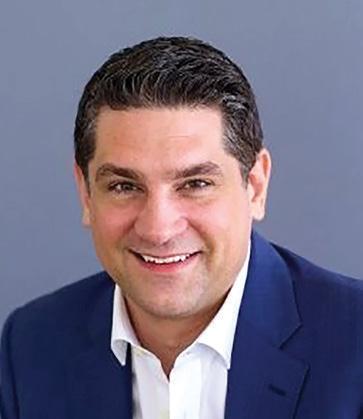
The demand for various battery raw materials such as lithium, cobalt, graphite, and rare earth metals is expected to skyrocket until 2030. This growing demand is predicted to create a significant supplydemand gap by 2040, with lithium and nickel facing substantial shortages. The repercussions of this imbalance are already evident, with lithium prices surging six-fold in recent years. Moreover, the sourcing of these raw materials is heavily concentrated in Central Africa and South America. For instance, 56 per cent of lithium is sourced from Chile, 51 per cent of cobalt from the Democratic Republic of Congo, and graphite is primarily obtained from Turkey, China, and Brazil.
Battery cell manufacturing is mainly dominated by China, Korea, and Japan, which poses an additional challenge for the Middle East. While the Middle East has a solid base of tier 3 suppliers producing raw materials necessary to produce the end products, there is a gap for tier 1 and 2 suppliers
gulfbusiness.com 14 August 2023
The Brief / Supply Chain
There is a significant untapped opportunity for the Middle East to ramp up supply chains for raw materials to build greater control over EV battery production
COMMENT
ILLUSTRATION: GETTY IMAGES/KOSTENKODESIGN
producing the end product. Historically, the region’s attempts to enter the automotive sector have been met with a certain reluctance from major original equipment manufacturers (OEMs) to establish manufacturing units in the region based on it being seen as a low-volume market. Additionally, there is still a gap in a skilled local workforce with automotive sector expertise, with OEMs mainly focusing on highvolume markets such as the US, Europe, and China for EV manufacturing.
OPPORTUNITIES FOR BATTERY PRODUCTION AND EV MANUFACTURING
Given the high demand for raw materials in the coming years, there is a significant untapped opportunity for the Middle East to ramp up supply chains for raw materials to build greater control over battery production. With most EV manufacturing units located away from raw material sources, any competitive supply chain disadvantages for new players in the Middle East would be removed.
To make the most of the raw materials, recycling batteries could be a game-changer. While recycling batteries minimises the need for raw materials, it is also more sustainable, resulting in about 30 per cent lower CO2 emissions.
Furthermore, the Middle East and Africa have a growing EV market with EV passenger car sales expected to reach approximately 400,000 units by 2030 which opens a window of opportunity for local manufacturing.
Due to the region’s limited ICE vehicle manufacturing bases, Middle East manufacturers do not have
MEA
THE MIDDLE EAST AND AFRICA HAVE A GROWING EV MARKET WITH EV PASSENGER CAR SALES EXPECTED TO REACH APPROXIMATELY
400,000 UNITS BY 2030
WHICH OPENS A WINDOW OF OPPORTUNITY FOR LOCAL MANUFACTURING
to contend with legacy factory issues, making it less complex and more economical to set up a greenfield EV factory. Electric vehicles typically have approximately 130 fewer moving parts, translating to savings of around $1,200 per vehicle. Additionally, EV-only plants require less capital than more complex plants combining ICE and EV production lines.
HOW EV SUPPLY CHAIN CHALLENGES CAN BE RESOLVED
While there are significant challenges facing the EV sector in the Middle East, recent examples show how some of them can be mitigated through targeted initiatives.
To attract OEMs and suppliers, Saudi Arabia has offered exemptions from import duties on machinery and equipment, as well as subsidies on salaries to develop local talent. In addition, the government offers financial support for localised manufacturing by working with banks to provide loans with longer tenures along with providing required trade finance products. Such initiatives help boost industry localisation and contribute to resolving some of the supply chain challenges in the region.
In December 2022, the EU proposed regulation for recovery rates of key raw materials from end-of-life batteries. Recovery rates specify the amount of material recovered from the recycling process with regulation requiring an overall recycling recovery rate of 65 per cent by 2025 and 70 per cent by 2030. To incentivise battery recycling, the Middle Eastern governments could introduce similar regulations for recovery rates of key raw materials from end-of-life batteries.
Hence, by optimising new routes for raw material sourcing and battery production, creating an enabling environment for manufacturing, and with additional government support in the form of regulation, incentives, and financial aid, the Middle East has an opportunity to leverage the current challenges and position itself as a new key player in the global EV market.
gulfbusiness.com August 2023 15
“WHILE THE MIDDLE EAST HAS A SOLID BASE OF TIER 3 SUPPLIERS PRODUCING RAW MATERIALS NECESSARY TO PRODUCE THE END PRODUCTS, THERE IS A GAP FOR TIER 1 AND 2 SUPPLIERS PRODUCING THE END PRODUCT”
Helmut Scholze, partner at
Kearney
-
Automotive,
Industrial Goods and Services, Infrastructure, and Transportation Practice
ELECTRIC VEHICLES TYPICALLY HAVE APPROXIMATELY 130 FEWER MOVING PARTS, TRANSLATING TO SAVINGS OF AROUND $1,200 PER VEHICLE
Cityscape Global Saudi to debut in September



Alexander Heuff, exhibition director Cityscape Global, tells Gulf Business how the inaugural Saudi edition of the four-day global real estate event will present attendees with in-depth insights into the ‘Future of Living’ while supporting the kingdom’s real estate ambitions
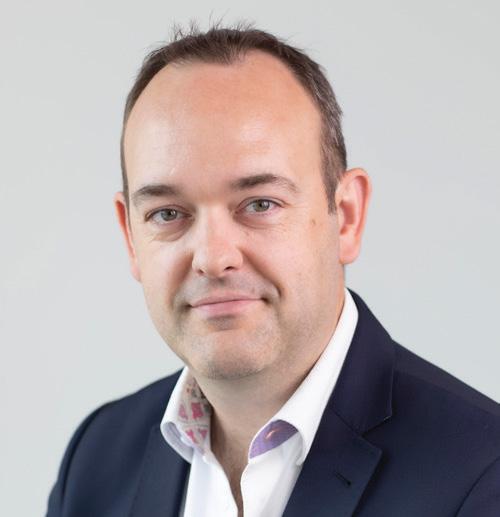
Tell us more about Cityscape Global, which is set to take place from September 10-13 in Riyadh.


































Cityscape Global provides a strategic platform for local and international real estate developers to share their projects to an audience of active and engaged investors and buyers.

Beyond bricks and mortar, the event is responsible for fostering partnerships and creating opportunities that drive investment and development in the region and across the globe through its exhibition, conference, and other content features that take place during the fourday event.
This year’s exhibition theme is the ‘Future of Living’. It will explore all the amazing technology, materials, designs and ideas taking us forward into the next generation of living. It’s incredibly exciting.







Which segments are you targeting with the Cityscape Global Saudi edition and what are the key highlights of the exhibition?
Cityscape Global has been created for both B2B and B2C audiences, with a focus on creating value for all stages of the property ecosystem. We’ve designed a comprehensive programme of conferences, summits and forums hosted over the four-day event to appeal to big name developers through to the first-time homebuyer, and everyone in between.
Our headlining conference: The Future of Living Summit, focuses on a di erent theme each day of the event: Smart Cities for Tomorrow, Digital Transformation, Accelerating the Kingdom and Developers Forum, providing attendees with a comprehensive overview of what’s happening in the region and beyond.
In addition, we have the Property Portfolio Forum, Design and Architecture, Real Estate Institutional Investor Forum, the PropTech stage and CityscapeWIRE running – with each agenda tailored to more specific audiences. Other highlights over the four days of Cityscape Global include exclusive project launches, VIP visits and giveaways.








How does an event such as Cityscape Global add value to Saudi Arabia property developers and other players in the real estate ecosystem?
The key benefit is that the event brings the entire real estate ecosystem together in one place: world leaders, governmental decision-makers, industry experts, regulators, investors, developers, architects, consultants and consumers. The event provides a platform for exhibitors to showcase their ongoing and upcoming projects to a large, diverse, global audience, generating both interest and exposure.

Pics: Supplied
Developers have the opportunity to benchmark their projects against regional and international competitors within the market, drive their own brand visibility and initiate joint ventures. Collaborative efforts can lead to more significant and ambitious projects, shared resources, and risk mitigation. With the comprehensive programme of conferences, summits, and forums overlayed across the four-day event, attendees can attend sessions featuring expert guest speakers and industry leaders from all facets of the industry and hear their take on up-to-theminute industry insights and trends. The value that Cityscape Global provides anyone with an interest in property and real estate is truly immeasurable.
Saudi Arabia is currently home to some of the world’s biggest giga projects. How do you expect the exhibition to accelerate the growth of the country’s already booming real estate sector?
All eyes have been on Saudi Arabia since the 2016 announcement of its ambitious Vision 2030; the strategic framework created to reduce the nation’s dependence on oil, diversify its economy, and develop public service sectors including health, education, infrastructure, recreation, and tourism.
In recent years, the real estate market in Saudi Arabia has grown exponentially, attracting large-scale foreign and domestic investment. Home to some of the most ambitious giga-projects anywhere in the world, Saudi Arabia is the driving force for the next-generation property sector, and Cityscape Global is the stage. As the kingdom continues to
make strides in this space, it is essential that investors know where the most advantageous investment opportunities lie, and Cityscape Global is the catalyst.
With the upcoming debut in Saudi Arabia, tell us about the opportunities that you’re seeing in the market.
As an integral part of Vision 2030, the Saudi government has implemented various economic and regulatory reforms to attract foreign investment and improve the ease of doing business. This has been a crucial step in further opening up Saudi Arabia to the world. The kingdom’s population is steadily growing and with it, the demand for housing and infrastructure. Providing affordable housing solutions in Saudi Arabia is a priority. As urbanisation continues, the demand for residential, commercial, and mixed-use developments increases, creating opportunities for investors and developers alike. As the country moves to boost its tourism offering, several projects are underway to develop the tourism and hospitality sectors. Alongside the opportunities for investors and developers, there are endless opportunities for suppliers and facilitators in the design, proptech, sustainability and facility management fields. When you consider the bigger picture, it’s easy to see why Saudi Arabia is the natural fit for the Cityscape Global 2023 launch.
Saudi Arabia’s real estate market size is projected to grow at a CAGR of 7.89 per cent to $94.19bn by 2028. How does Cityscape Global expect to
contribute to the country’s housing programme under Vision 2030?
Saudi Arabia’s Vision 2030 housing programme endeavours to provide housing solutions that meet the needs and aspirations of Saudi families, with a key focus on sustainability and tech. Presently demand greatly outweighs supply, which is the first opportunity within itself.
Cityscape Global serves as a platform for real estate developers – local, regional, and international – to showcase their housing projects directly to an audience of investors, partners and buyers who can essentially help fund and expedite housing projects in the country. Increased investment in the sector generates a snowball effect, funding further housing projects, and expediting construction and completion. The changes in government regulations to make foreign investment easier within the kingdom with be a huge draw card for investors and a key contributor to bolstering the housing programme.
Giga projects such as NEOM are accelerating the growth of Saudi Arabia’s real estate industry, how do you envision the future of the industry going forward?
With the Saudi government’s ongoing commitment to developing giga-projects such as NEOM, Qiddiya and the Red Sea Project, these massive developments create significant demand for real estate across the residential, commercial and hospitality asset classes. As I see it, the success and progress of the giga-projects will have a cascading effect on other sectors of the economy, creating job opportunities, attracting foreign investment, and boosting related industries.
The upward trend in the kingdom’s population growth will lead to increased urbanisation, driving the need for more housing, infrastructure, and commercial spaces. The diversification of real estate offerings is what I believe to be key to meeting the differing needs of residents vs visitors, through a mix of affordable housing, luxury properties, smart cities, and sustainable developments. Saudi Arabia is truly pioneering the “Future of Living”.
FOR MORE DETAILS on the four-day Cityscape Global exhibition, visit www.cityscapeglobal.com

BRAND VIEW
Home to some of the most ambitious giga projects anywhere in the world, Saudi Arabia is is the driving force for the next generation property sector, and Cityscape Global is the stage”
Building bonds for business
In today’s digital age, consumers have come to see seamless and personalised interactions as an essential part of their exchanges with a brand or company; regardless of the channel or device, customers expect a cohesive and ‘connected experience’.
These experiences are no longer optional but have become a critical factor in driving business growth
and fostering brand loyalty, especially in light of economic headwinds and rising competition. Insights from Salesforce’s State of Connected Consumer report suggests that every nine out of 10 of UAE-based customers agree that the experience a company provides is just as important as its products and services.
Accounting for 90 per cent of all private corporations in the emirates, family businesses in the UAE are involved across a range of sectors – from real estate and retail through to tourism, shipping, and logistics. Even though these sectors widely di er, the customer naturally expects the same level of worldclass service with every business it deals with.
According to Salesforce, more than 80 per cent of customers expect consistent interactions across departments – and 90 per cent are more loyal to companies that provide this consistency. For family enterprises, providing an integrated, connected experience across verticals could be a gamechanger.

INTEGRATED TOUCHPOINTS
The number of touchpoints a consumer has with a
























gulfbusiness.com 18 August 2023
We look at why boosting ‘connected’ experiences is key to business growth
ILLUSTRATION: GETTY IMAGES/ JADAMPROSTORE
company today has grown exponentially – gone are the days when customers would interact with a brand solely through a single platform. Now, these interactions may happen through a website, mobile app, social media, physical store – o ten in combination.
Take for instance, the retail sector. The customer journey takes place either online or offline, or sometimes both. Feedback is instantaneous, through reviews on shopping platforms or social media. Moreover, the customer is always connected to a brand, constantly updated on the latest promotions or reward programmes.
Omnichannel strategies are a great way to connect these various touchpoints to create a holistic journey for customers. A real-time inventory system can help retailers convey product availability, while click-andcollect services can help minimise wait times. Mobile apps can o er personalised product recommendations, exclusive discounts, and link to loyalty programmes. Meanwhile, interactive social media campaigns can keep customers updated on latest o ers and serve as a medium for two-way communication.
Another example is the real estate sector, where firms can leverage multiple platforms, such as websites, social media, mobile apps, and physical o ces, to connect with clients at di erent touchpoints. This enables prospective buyers to explore properties online, schedule virtual or in-person tours, communicate with agents through various channels, and access comprehensive property information.
THE ROLE OF TECH
For family businesses, enabling such an integrated ecosystem will require greater consolidation of information – essentially, di erent teams and verticals will ‘need to talk to each other’. As such, there is a need for greater adoption of digital technologies to streamline this process.
Stephen Rea, chief enterprise excellence and procurement o cer, Al Ghurair Investment
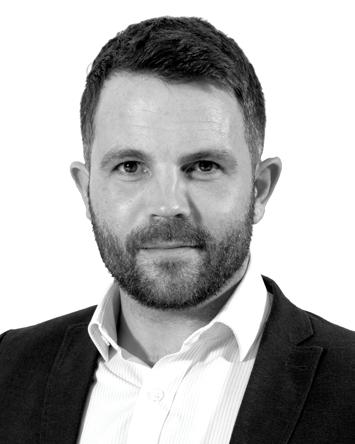
The UAE’s appetite for digitalisation makes the adoption of digital technology highly feasible. Under the Digital Economy Strategy, the UAE’s digital economy is expected to grow to more than $140bn in 2031, up from nearly $38bn at present, according to a recent report by the Dubai Chamber of Digital Economy. There is strong backing from the government to cultivate futuristic models across sectors. Digital solutions and data analysis can enable businesses to gain valuable insights into customer behaviour, preferences, and pain points. They can build better customer personas and help improve their service o erings.
Artificial intelligence (AI) and machine learning takes this a step further, helping companies navigate and analyse in real-time the copious amounts of data generated with every interaction. However, it is important to obtain customer consent before capturing any data to avoid violation of trust, abiding by the UAE’s data and consumer protection laws. Companies must be transparent in what information they are gathering and how this will be used.
END-TO-END CONNECTIONS
Connected experiences should not be limited to individual touchpoints but must encompass the entire customer journey. From the initial awareness stage to post-purchase support, companies must strive to create a frictionless journey for their customers. By analysing the customer journey and identifying pain points or bottlenecks, businesses can implement improvements to enhance the overall experience.
All of this needs to be tied together with a cohesive brand identity and uniform messaging to help customers recognise and connect with the family business as a whole.
Research consistently shows that companies delivering exceptional customer experiences outperform their competitors in terms of revenue growth and customer loyalty. When customers feel valued and receive personalised and seamless interactions, they are more likely to become brand advocates. Additionally, connected experiences can lead to increased customer retention, repeat purchases, and higher customer lifetime value.
By investing in connected experiences underpinned by digitalisation, family businesses in the UAE can drive revenue growth, gain a significant competitive advantage and contribute to the UAE’s reputation as a forward-looking business hub. Most importantly, they can highlight their commitment to their customers and provide impeccable service, every step of the way.
gulfbusiness.com August 2023 19 The Brief / Customer Experience
GROWTH EXPECTED IN THE UAE’S DIGITAL ECONOMY
$140bn 2031 present
$38bn
Alan’s Corner










 Alan O’Neill Managing director of Kara, change consultant and speaker
Alan O’Neill Managing director of Kara, change consultant and speaker




Budget and beyond
The methodology used for setting targets and budgets is often a combination of a top-down and bottom-up approach







The purpose of this exercise is to be proactive and in control of your own destiny. It focuses the entire leadership team on the goals of the business and makes them accountable. Without these targets, how can a business know if it’s doing a good job or not? They are the score of the game.
Targets will usually show an increase on the year just gone. However, it can happen that a business deliberately sets targets that are lower than the previous year. For example, I was working recently with a UK energy company that is de-commissioning one of its nuclear plants. The target output for future years in that plant will obviously reduce over time.
BUDGETS AND TARGETS
There is o ten confusion in business language between forecasts, budgets and targets. In simple terms, targets are those numbers that will e ectively reflect the score of the game. The key ones will include outputs such as sales and gross margin (all sliced and diced up by calendar dates, location, department, product category, salesperson, etc.) and net profit.


Budgets are usually those numbers that refer to the cost of how those goals will be scored. They include overheads such as payroll, marketing, housing, utilities and so on.
The methodology used for setting targets and budgets is o ten a combination of a top-down and bottom-up approach. Top down is where the organisation looks externally at what is going on in the marketplace and internally at its own ambitions and financial investments. That helps to set a blended top-down target. Bottom up is where the individual commercial teams set targets by customer segment, by product, by territory and so on.
That’s when the fun starts. Negotiation usually follows where the top-down targets and budgets set by the leadership team are compared to the bottom-up numbers. With detailed dialogue agreement is finally reached. That then leads to the detailed targets being distributed to various owners.
In the next few months, many organisations will take time out to do their budgeting for the following year. Even if their year is not yet complete, they can reflect on their key financial numbers for the year that’s passed and usually anticipate how the numbers will finish up at year end. Using those numbers as a baseline, they set financial targets for the following fiscal year.
But it shouldn’t stop there. Unfortunately, I have come across far too many big and small organisations that think that because the ‘numbers’ are agreed, the planning job is now complete. Let’s be very clear here. Budgets and targets are not business plans. If budgets and targets indicate ‘what’ we are aiming for, then we also need to consider ‘how’ we will achieve those targets.
EFFECTIVE PLANNING
Proper and structured detailed planning helps to guide teams on the specifics of what it will take to ensure the budgets and targets are achieved. It


gulfbusiness.com 20 August 2023
ILLUSTRATION: GETTY IMAGES/ BULL’S EYE
“THERE IS OFTEN CONFUSION IN BUSINESS LANGUAGE BETWEEN FORECASTS, BUDGETS AND TARGETS. IN SIMPLE TERMS, TARGETS ARE THOSE NUMBERS THAT WILL EFFECTIVELY REFLECT THE SCORE OF THE GAME. THE KEY ONES WILL INCLUDE OUTPUTS SUCH AS SALES AND GROSS MARGIN (ALL SLICED AND DICED UP BY CALENDAR DATES, LOCATION, DEPARTMENT, PRODUCT CATEGORY, SALESPERSON) AND NET PROFIT”
should be a cross departmental team exercise to get commitment and buy-in. It should not be a solo run done by one person alone.
Here are the steps to take in structured planning, with a checklist of topics for consideration in your planning:
Scan the external marketplace
When facilitating such business planning sessions with organisations, I bring the team through a process of external market appraisal first. What’s happening in the macro economy and the industry, who are the main competitors and what are they doing di erently that is relevant? How are customers changing? What are the new trends?
All of that feeds into what we call ‘opportunities and threats’ which should then be prioritised in terms of their impact on the business. This exercise further helps to validate the financial budgets and targets.
Identify the strengths and weaknesses in each key business driver
The next things to consider are the key pillars of the business in detail. For each pillar, identify your ‘strengths and weaknesses’. This inward navel-gazing has to be done in an honest and non-defensive way. The pillars would typically include…
BUDGETS AND TARGETS ARE NOT BUSINESS PLANS. IF BUDGETS AND TARGETS INDICATE ‘WHAT’ WE ARE AIMING FOR, THEN WE ALSO NEED TO CONSIDER ‘HOW’ WE WILL ACHIEVE THOSE TARGETS
PEOPLE: Think of headcount, payroll investment, recruitment, retention, allocation of duties, training, communications, welfare, morale and productivity. Also consider if any element of your culture and leadership needs attention.
PRODUCT MIX: Think of best and worst sellers, newness and innovation, product di erentiation, price architecture, customers and trends.
PLACE: Consider your physical premises and be mindful of health and safety issues and housekeeping standards relevant to your brand. If you are a B2B business, then place is more about your route to market.
BRAND COMMUNICATIONS: Develop a marketing and communications plan, around all relevant platforms – both traditional channels (such as advertising and PR) and social media channels. Consider look and feel, tone of voice, frequency and cost/benefit analysis.
INTERNAL CONTROLS: Consider your own internal processes, controls, costs, margin management, IT systems, etc.
Prioritise
From this list, agree your priority projects for the year ahead. By negotiation with relevant stakeholders, allocate an owner for each project. That will ensure good accountability, no ambiguity and that tasks don’t slip between two departments.
Agree on measures
Set metrics for each initiative. Sometimes this exercise may reveal projects that will take more than a year to deliver. Nevertheless, for all initiatives you should consider metrics for the next twelve-month period.
SUMMARY
Be careful of how you go about this planning process. It is really di cult to lead it on your own, as all senior people need to be contributing to the process. Facilitating such meetings is an entirely di erent and objective role to be played and it’s hard to be both a contributor and facilitator.
Perhaps you should engage the services of a skilled senior manager from another department (such as HR) to manage the process or even consider engaging the services of a facilitator. Whoever you use should have great empathy, objectivity and expertise in strategic planning.
Once the plan to achieve budgets and targets is complete, considerations should be given to the role of leaders in executing the plan and monitoring progress. But that should be relatively easy having gone through this structured process and of course by ensuring it is all documented clearly.
gulfbusiness.com August 2023 21 The Brief / Alan’s Corner
Is boredom killing our creativity?
Studies show that people prefer to be stimulated as opposed to sitting alone, reflecting and going deep within themselves
The digital milieu in which we exist has transformed our behaviour into scavengers, rummagers, hunters – we incessantly seek, crave, search for new information from our digital devices and platforms. And when we can’t find the newest and shiniest, boredom sets in.
 BY DEFINITION
BY DEFINITION
Boredom has been defined as “the aversive experience of wanting, but being unable, to engage in satisfying activity” by John Eastwood at York University. More specifically Eastwood and his colleagues say that boredom sets in when we cannot engage with internal thoughts and feelings, or external stimuli that are satisfying, and we assign this to the state we are in, or the environment within which we exist. In other words, the person wants to be stimulated but is unable to do so.
A Nielsen study examining the motivations for using smartphone apps found the top three reasons were: while alone (70 per cent), when bored or killing time (68 per cent), or while waiting for something or someone (61 per cent). People preferred to be stimulated as opposed to sitting alone, reflect, ponder and go deep within themselves. A UK study also found that 62 per cent aged between 18-30 preferred to use their device rather than just sit and think.
gulfbusiness.com 22 August 2023 The Brief / Productivity
ILLUSTRATION: GETTY IMAGES/ID-WORK
Adam Gazzaley and Larry Rosen authors of The Distracted Mind, hypothesise that boredom has increased in recent times due to the influence of pervasive short timescale reward cycles in modern media. Gazzaley and Rosen say that from decades of research on learning and behaviour, we know that the shorter the time between reinforcements (rewards), the stronger the drive to complete that behaviour and gain the reward.
In video games like Temple Run, which has been downloaded more than one billion times, players collect coins in each moment of the game – this frequent collection of rewards has according to Gazzaley and Rosen altered our boredom profile, so that when we engage in less stimulating information such as reading a book it has a much longer timescale reward structure – as you need to get to the end of each chapter and of course complete the book.
BASED ON REWARDS
In corporate settings, this same immediacy around rewards can be witnessed as we incessantly multitask, jumping between messaging platforms and
BOREDOM HAS BEEN DEFINED AS THE AVERSIVE EXPERIENCE OF WANTING, BUT BEING UNABLE, TO ENGAGE IN SATISFYING ACTIVITY
BOREDOM SETS IN WHEN WE CANNOT ENGAGE WITH INTERNAL THOUGHTS AND FEELINGS, OR EXTERNAL STIMULI THAT IS SATISFYING
WHEN WE ENGAGE IN LESS STIMULATING INFORMATION SUCH AS READING A BOOK IT HAS A MUCH LONGER TIME-SCALE REWARD STRUCTURE
A
Khan, principal consultant for BT and a novelist
tasks. If we don’t receive an immediate reward, then boredom takes hold and we switch tasks, which has its cognitive costs, and so the cycle continues spiraling downward.
In one study at Kent State University, researchers found that college students who were “heavy smartphone users” (ten hours per day) frequently referred to boredom as the motivator for using their smartphones. In addition, they were more likely to be prone to leisure boredom than students who were classified as “low smartphone users” (three hours per day). Elsewhere, a study from the University of Waterloo reported that university students susceptible to boredom overestimated the passage of time – to them a minute felt like an hour.
One educator, Teresa Belton, from the University of East Anglia, added: “Whenever children are bored, they’re likely to turn on one of those electronic things and be bombarded with stimuli from the external world rather than having to rely on internal resources or devise their own activities”.
Using smartphones as a crutch to overcome boredom is not unfortunately limited to children and the young, rather this is a pervasive problem which we are all prone to in our working and personal lives. We would rather be showered with an avalanche of social media notifications, silly animal videos and other non-sensical stimuli than take a moment to journey inward and do the hard work of making ourselves better.
When we get busy fixing our own shortcomings, which we all have, there is no time for boredom because we realise how much work there is to do. In addition, thinking deeply, reflecting and pondering, letting our minds rest, this is when we have the best ideas, as we enable our brains to join the dots that we would have otherwise missed as we were too busy thinking we were bored and had nothing to do.
gulfbusiness.com August 2023 23
Rehan
“WE INCESSANTLY SEEK, CRAVE, SEARCH FOR NEW INFORMATION FROM OUR DIGITAL DEVICES AND PLATFORMS. AND WHEN WE CAN’T FIND THE NEWEST AND SHINIEST, BOREDOM SETS IN”
WHILE ALONE WHEN BORED OR KILLING TIME WHILE WAITING FOR SOMETHING OR SOMEONE 70% 68% 61%
NIELSEN STUDY FOUND THE TOP 3 MOTIVATIONS FOR USING SMARTPHONE APPS WERE...
As countries in the Middle East and North Africa push to increase their economic output through non-oil sectors, efforts to identify the best talent – both via sourcing-in and outsourcing – are gaining momentum
AROUND 7%
15% Government Services
6% Real Estate
8% Manufacturing
5% Construction
SAUDI ARABIA ECONOMY AT A GLANCE 32% Oil and Gas 26% Others
RANK ($billion) TOTAL SPENDING ON SOURCING-IN TALENT 2018 2019 2020 2021 2022 2023
63 Ease of doing business (Global) 10% ($billion) SECTORS WITH STRONG GROWTH POTENTIAL FOR JOB OUTSOURCING IN THE UAE AND SAUDI ARABIA 01. Infrastructure management services 02. Software and applications development 03. Artificial intelligence 04. Creative and design services ALL DATA NORMALISED TO A SCALE OF 0 TO 100, WITH 100 BEING THE BEST SCORE
3.3 3.1 2.8 2.6 2.5 2.3
RANK
The Brief / Infographics gulfbusiness.com 24 August 2023
TOTAL SPENDING ON SOURCING-IN TALENT 2018 2019 2020 2021 2022 2023 6.8 6.4 5.9 5.5 5.2 4.8 UAE ECONOMY AT A GLANCE 32% Oil and Gas 25% Others 10% Finance and Insurance 10% Manufacturing 9% Construction 14% Retail KEY SECTORS, AS A % CONTRIBUTION TO OVERALL GDP
150 MILLION NEW TECHNOLOGY ORIENTED JOBS THAT THE GLOBAL WORKFORCE CAN ABSORB OVER THE NEXT 5 YEARS 16 Ease of doing business (Global)
8% Retail, Tourism, Hotels, Leisure KEY SECTORS, AS A % CONTRIBUTION TO OVERALL GDP
THE RIGHT RESOURCES
KEY FINDINGS: MIDDLE EAST AND AFRICA
Lebanon
5,000 ( approximately ) EMPLOYEES ARE EMPLOYED in the BPO and ITO outsourcing sectors
200 COMPANIES ( estimated ) currently operate in such activities
Jordan
A NUMBER OF COMPANIES OPERATE IN KPO SERVICES, o ering engineering design, management consulting, market research, and creative services (marketing, media, etc)
35TH MOST POPULAR OFFSHORING DESTINATION worldwide, and third among MENA countries
7,500 ( approximately ) JOBS HAVE BEEN CREATED from the ITO and BPO sectors, with plans to add 10,000 more by 2023 MENA countries
HUNDREDS OF EMPLOYEES
IN THE KPO SECTOR provide management consulting services in the country and abroad
Iraq Morocco

PROVIDES
ALL TYPES
OF OUTSOURCING: BPO, ITO AND KPO. However, most outsourcing services are predominantly o ered to local players inside the Iraqi market
SOME GLOBAL PROVIDERS HAVE ESTABLISHED THEMSELVES IN THE COUNTRY, however, their size is relatively small (20-100 employees for each player)
STRATEGICALLY LOCATED close to well-known regional and global demand hot spots (for example, GCC, Europe)
40TH
MOST POPULAR OFFSHORING
DESTINATION and third among MENA countries in 2021
Outsourcing is one of the fastest growing sectors in Morocco, with an international market presence, making it THE NUMBER ONE AFRICAN DESTINATION FOR THE SECTOR

The outsourcing sector currently EMPLOYS
120,000+ PEOPLE IN THE COUNTRY
Egypt Tunisia
12TH MOST POPULAR OFFSHORING DESTINATION globally and first in the MENA region
17% OF THE GLOBAL MARKET SHARE makes Egypt a leader in BPO outsourcing
2,000+
COMPANIES employing nearly 240,000 people operate in the ITO, BPO and KPO sectors
38TH MOST POPULAR OFFSHORING DESTINATION GLOBALLY and fifth among MENA countries
Tunisia’s BPO, ITO and KTO sectors are well developed, involving 300 FOREIGN COMPANIES AND MORE THAN 60,000 JOBS
350 ( approximately ) CALL CENTRES employing 22,000 Tunisians and features leading providers
THE UAE IS STRIVING TO DIVERSIFY ITS ECONOMY WITH ITS NATIONAL AND EMIRATE-LEVEL AGENDAS REVOLVING AROUND EMERGING THEMES OF SUSTAINABLE ECONOMIC DEVELOPMENT, CUTTING-EDGE INNOVATION, DIGITAL TRANSFORMATION, SAFETY AND SECURITY, AND ADVANCED SCIENCE, TECHNOLOGY AND ARTIFICIAL INTELLIGENCE”
— DR LEILA HOTEIT, MANAGING DIRECTOR AND SENIOR PARTNER, BCG
gulfbusiness.com August 2023 25 SOURCE BOSTON CONSULTING GROUP: MENA TALENT MAP REPORT (BPO) Business Process Outsourcing | (KPO) Knowledge Process Outsourcing | (ITO) Information Technology Outsourcing
Morocco and Germany clashed during the FIFA Women’s World Cup 2023 Group H match at Melbourne Rectangular Stadium on July 24 in Australia.
Morocco made history, becoming the first Arab team to play in the tournament. The Germans beat the Moroccans 6-0.

gulfbusiness.com 26 August 2023
The Brief / Lightbox




gulfbusiness.com August 2023 27
PHOTO BY JOE PRIOR/VISIONHAUS VIA GETTY IMAGES
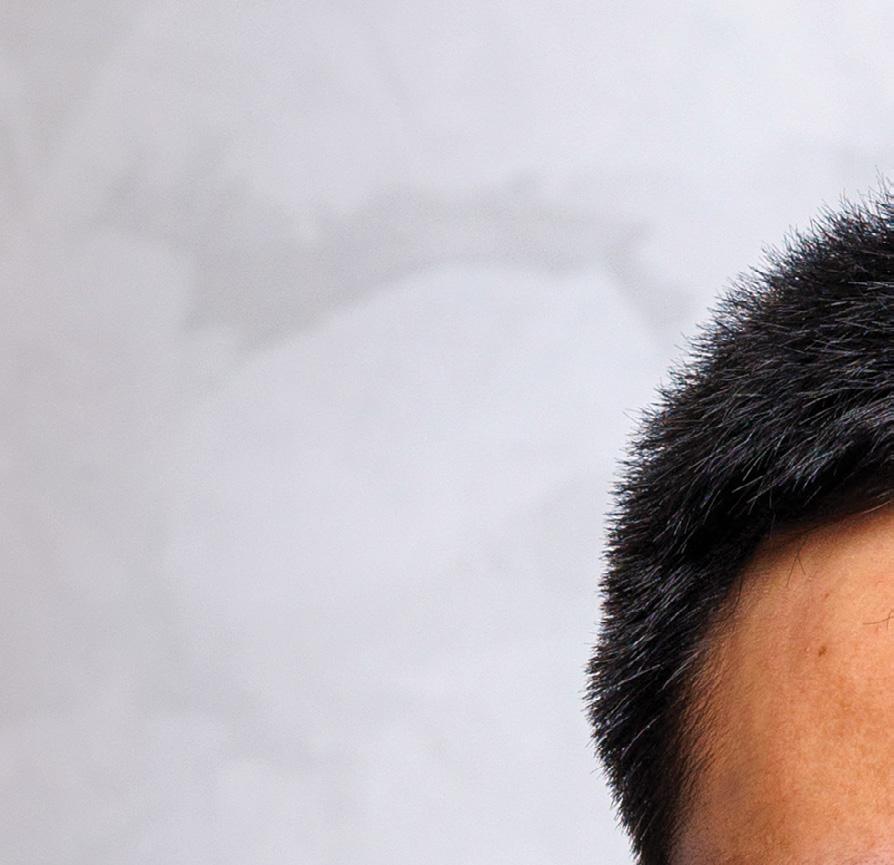


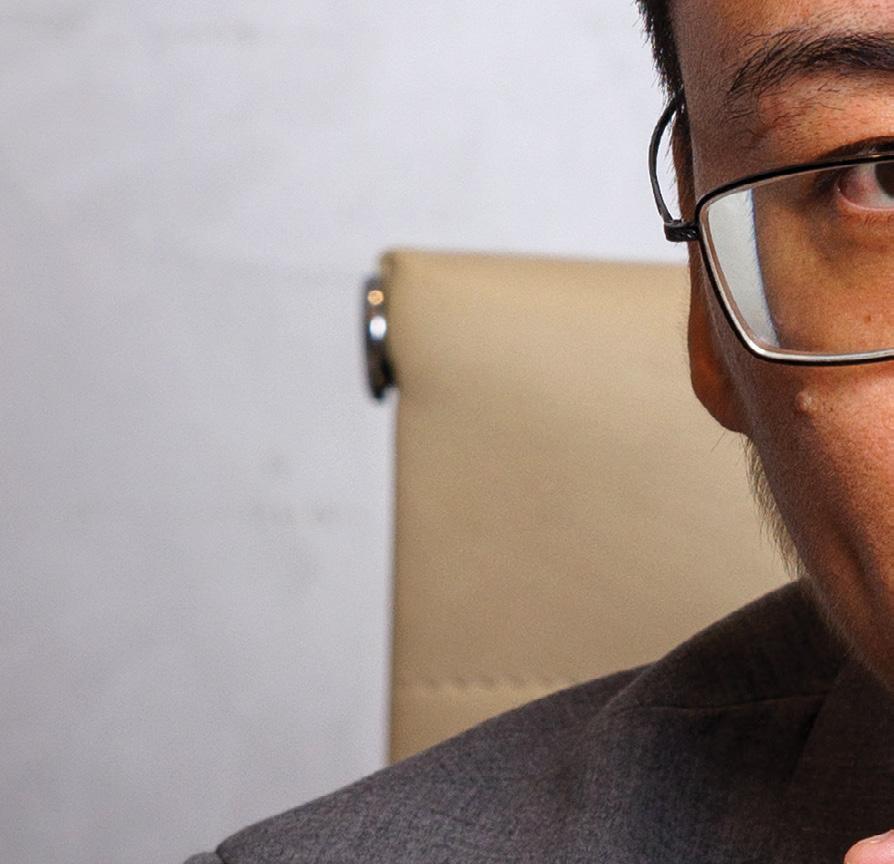

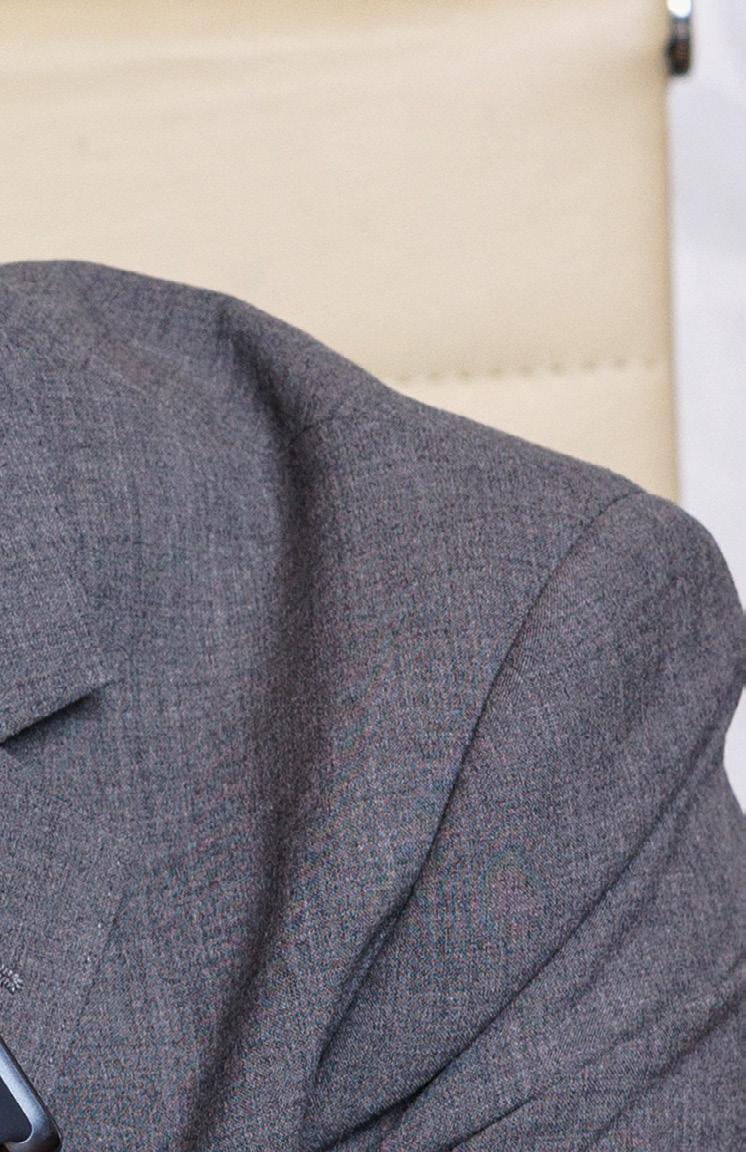





|OTSREVOC R Y | OPPO INFO C SU
F CUSED BIGGER PICTURE ON THE


OPPO MEA'S NEW PRESIDENT CHI ZHOU AIMS TO POWER

THE GROWTH AND PROFITABILITY OF THE SMART DEVICE BRAND IN THE REGION WITH A STRONG EMPHASIS ON INNOVATION, CUSTOMER VALUE AND SUSTAINABILITY
WORDS NEESHA SALIAN
PHOTOS MARK MATHEW
gulfbusiness.com August 2023 29
In July, OPPO launched the muchawaited 10th generation of its Reno series, featuring the all-new Reno10 Pro+ 5G, Reno10 Pro 5G and Reno10 5G in the UAE. The smart device brand also unveiled two new IoT products, the Pad 2 and Enco Air3 Pro. This launch closely followed the unveiling of its flagship flip smartphone, Find N2 Flip, in the UAE.
As it has with Reno10’s predecessors, OPPO has taken the smartphone’s camera capabilities up a notch, providing an enhanced pro-level imaging experience with its ultra-clear portrait camera system. Plus, it’s powered by the brand’s trademark SUPERVOOC flash charging tech and ColorOS 13.1, making it a formidable device in its segment.
These launches are significant for the Chinese company, which has been rapidly increasing its market share since it entered the Middle East and Africa (MEA) region in 2015. The brand, present in more than 17 markets across the region and over 60 countries worldwide, has a growing fan base, and for a good reason. Product and market localisation, a comprehensive o ering across di erent segments, innovative features, advanced tech and a wider appeal among younger customers continue to give OPPO a competitive edge over its peers.






The primary objective for OPPO MEA's new president, Chi Zhou, is ensuring that these factors continue to drive sales and market leadership.
LEVERAGING A DECADE OF EXPERIENCE


Zhou, who has a decade of experience in the technology and telecommunications industry behind him, has been credited with expanding the Reno series’ market share and profitability in international markets.
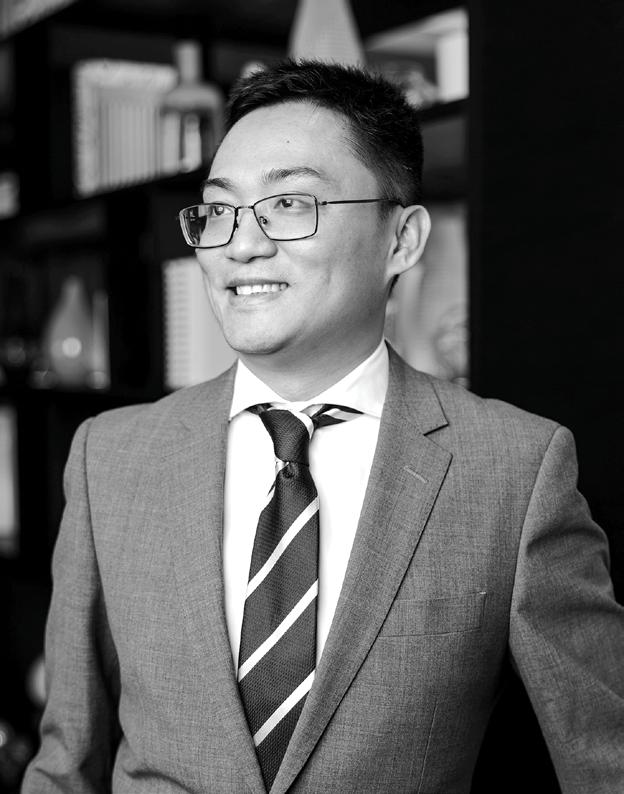

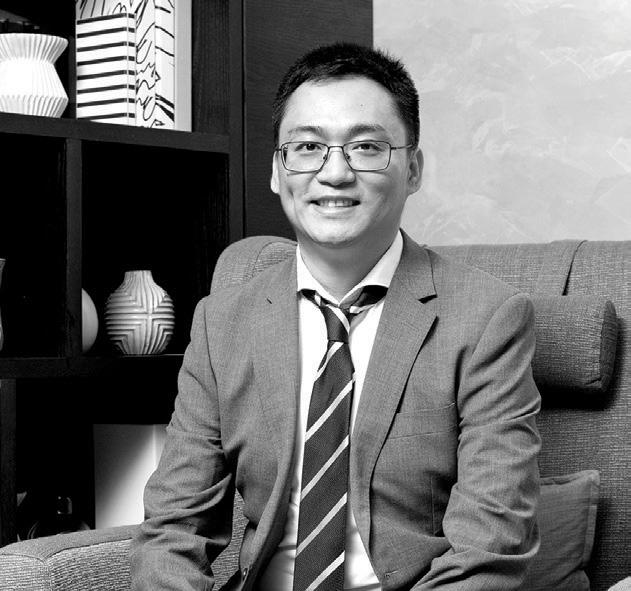
“I’ve served as the head of GTM (go-to-market) and later led the overseas GTM divisions at OPPO HQ. This experience has equipped me with a comprehensive understanding of various aspects of the business and global markets,” he explains.
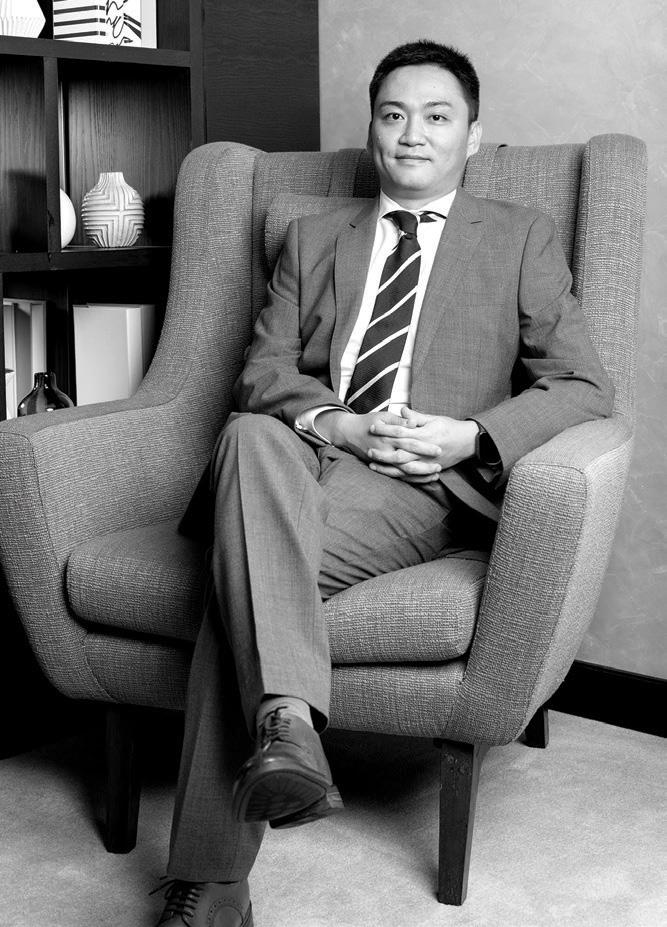
“All the more, I am excited to leverage this understanding and collaborate with the talented team at OPPO MEA to drive the brand's growth and successfully deliver exceptional experiences to our valued customers in what is one of our top-performing regions. We have solid confidence in this market, which has yielded double-digit growth for us consecutively over the past few years, helping us emerge as one of the most preferred brands for smart devices.”



This growth is set to further rise with the Middle East smartphone market expected to grow by 6 per cent in 2023 to 40.4 million units, according to international tech research firm, Canalys. Saudi Arabia, the largest market in the region, is expected to expand by 9 per cent while the UAE's smartphone market is forecasted to increase by 6 per cent.

gulfbusiness.com 30 August 2023
|OTSREVOC R Y | OPPO INFO C SU
BUILDING ON TRUST, BANKING ON INNOVATION
A confident Zhou says, “Trustworthiness and technological innovation are the two key factors that drive our brand preference and value proposition. These will also power further growth for the brand. Trust is not only built through brand promotion; it also stems from our meticulous control over product quality, service and technical details.
“We leave no stone unturned in testing every aspect of our mobile devices in ways that go beyond imagination, such as the 200,000-button-press durability test, the 10,000 USB port insertion test, and extreme temperature tests that expose the phone to temperatures as low as minus 40 degrees and as high as 75 degrees Celsius for 168 hours, just to name a few.”
As a result of a stringent ‘tried and tested’ process, OPPO has consistently developed practical technologies to power its cameras and batteries. It also has invested significantly in frontier and exploratory research to ensure it is at the forefront of industry trends.
Zhou says, “Our flash charge technology, introduced in 2014, has benefitted over 200 million users worldwide. We have expanded this technology beyond smartphones to cars, public spaces, and various other applications. While this achievement is impressive and well-known, it represents just a fraction of our extensive research and development endeavours in areas such as augmented and virtual reality and smart health tech among others.”
A TRADITION OF INNOVATION
While on the topic of innovation, Zhou enthusiastically explains how the Reno series exemplifies this factor. “To give you an example: Every day, more than 2.13 million portrait photos are taken on Reno smartphones. While landscapes and scenario shots may be easily found online, portrait photos are unique, capturing special memories and emotions. Portraits inspire us to continuously evolve our imaging technologies, making portrait photography the core focus of the Reno series and positioning it as ‘The Portrait Expert’.”
The brand also focuses on user orientation to make decisions related to product development – even if they are challenging.
OPPO CARRIES OUT RIGOROUS TESTS ON ITS DEVICES. THESE INCLUDE...
THE
200,000
-BUTTONPRESS DURABILITY TEST
THE 10,000 USB PORT INSERTION TEST
EXTREME TEMPERATURE TESTS THAT EXPOSE THE PHONE TO TEMPERATURES AS LOW AS MINUS 40 DEGREES AND AS HIGH AS 75 DEGREES CELSIUS
“For instance, during the early stages of planning the Reno10, we initially focused on creating a camera matrix solely based on impressive specifications. While this approach may sound tempting, we decided to change our direction. This isn't to say that specifications were wrong or unimportant, but our primary consideration was user orientation. We realised that a telephoto lens would better serve consumers' needs by enabling them to capture professional, beautiful and captivating portraits.”
With the introduction of the telephoto portrait lens to the Reno10 series, OPPO has introduced a premium feature to its 'economic' range. Users can now enjoy the benefits of the high-tech camera lens without breaking the bank – reiterating the focus on value.
“Despite the di culties and challenges we faced, we broke through the industry's unexplored territory,
OPPO'S FLASH CHARGE TECHNOLOGY, INTRODUCED IN 2014, HAS BENEFITTED OVER 200 MILLION USERS WORLDWIDE
gulfbusiness.com August 2023 31
I’ve served as the head of GTM (go-to-market) and later led the overseas GTM divisions at OPPO HQ. This experience has equipped me with a comprehensive understanding of various aspects of the business and global markets"
refining the telephoto portrait mode and delivering ‘pro power in portrait’ to our users. This focus on user needs drives our product o erings at OPPO,” Zhou adds.

THE FINER DETAILS



























User needs though can di er based on the market, explains Zhou. “Despite the similarities shared by consumers in this region, there are subtle di erences in their mindset and preferences when it comes to consumption.
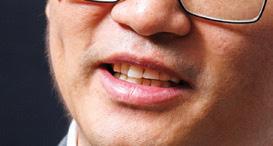
“Take the UAE and Saudi Arabia, both countries have a tech-savvy population with a strong interest in the latest innovations. However, Saudi consumers tend to prioritise practical features such as battery life, storage capacity and system performance, while consumers in the UAE are more inclined towards creative features such as camera functionality, photography capabilities and overall design aesthetics such as the FlexForm camera and sleek design you’ll see in the Find N2 Flip.”
The Find N2 Flip set a new benchmark in the flip phone category. It features the highest-capacity battery with fast charging, a large cover screen, and an exceptional flip camera system developed in collaboration with Hasselblad.
“While early adopters and style-conscious individuals are typically interested in purchasing foldable phones, we’ve ensured that the Find N2 Flip excels in areas that are important to most people, such as camera performance, battery life, reliable performance and a sturdy screen. Our goal is to make the flip phone a reliable daily driver for all users,” he says.

Aside from advanced products, the company is also an accelerator of 5G technology and is bolstering its longterm technical capabilities to address new needs and develop new-generation communications technology for the future across its markets including the MEA region.
PROVING VALUE TO COMMUNITIES
As OPPO continues to improve existing technologies to create devices that appeal to users across all segments, the company is also committed to o ering long term value to the communities it operates in.


Sponsoring sporting events is one of ways it is doing so, says Zhou. “By collaborating with various international sports events, OPPO aims to demonstrate its respect for users from diverse regions and cultures, enabling fans worldwide to witness, hear, and share inspiring moments through our latest tech products.
“Through these partnerships, we strive to create memorable experiences that resonate with fans and connect people through the power of sports.”
In a significant move last year, OPPO announced a global partnership with the UEFA Champions League. This latest sponsorship further builds upon OPPO's existing sports partnerships and reflects the company's ambition to inspire and engage consumers through the world of sports.
THE COMPANY’S PROPRIETARY BATTERY HEALTH ENGINE TECHNOLOGY CAN MAINTAIN 80 PER CENT OF THE ORIGINAL BATTERY CAPACITY FOR UP TO 1,600 CHARGING CYCLES, SIGNIFICANTLY EXTENDING THE BATTERY LIFE
ALIGNED WITH ITS MISSION OF “TECHNOLOGY FOR MANKIND, KINDNESS FOR THE WORLD”, OPPO HAS PLEDGED TO ACHIEVE CARBON NEUTRALITY ACROSS ITS OPERATIONS BY 2050
gulfbusiness.com 32 August 2023
|OTSREVOC R Y | OPPO INFO C SU
“We are currently in our fourth year of partnering with prestigious tournaments such as Wimbledon and Roland-Garros, while also serving as a global partner of the International Cricket Council.”
In 2022, the company launched the OPPO Research Institute Innovation Accelerator that empowers technology professionals to bring innovative solutions to life and to create a better future together.
Sustainability is yet another area that is significant. Zhou explains: “Over the past two years, we have
proactively released our sustainability reports, taking the initiative to share the company's sustainable development progress with the public.
“While we continue to drive commercial growth, OPPO is actively exploring innovative ways to achieve greener manufacturing and business operations. Through energy-saving and emission-reduction initiatives, by the end of 2022, we successfully reduced our annual operational greenhouse gas emissions by 6,000 tonnes. This reduction is equivalent to the amount of greenhouse gas absorbed by 3,330 square kilometres of forest in a year.”
Furthermore, the company has made technological breakthroughs to enhance the durability of its products. For instance, the company’s proprietary Battery Health Engine technology can maintain 80 per cent of the original battery capacity for up to 1,600 charging cycles, significantly extending the battery life.

Aligned with its mission of “Technology for Mankind, Kindness for the World”, OPPO has pledged to achieve carbon neutrality across its operations by 2050. While the journey towards a greener future is a long one, OPPO is already making significant progress with its climate action report and low carbon development strategy.
For Zhou, this is all part of the strategy that will drive the brand’s future-forward vision in the Middle East and Africa. “As our brand proposition is 'Inspiration Ahead', we are always ready to embrace changes and stay ahead. We will continue to evolve our local product line based on customer feedback to o er more premium series in the region.”
BY THE END OF 2022, OPPO SUCCESSFULLY REDUCED ITS ANNUAL OPERATIONAL GREENHOUSE GAS EMISSIONS BY 6,000 TONNES

gulfbusiness.com August 2023 33
Consumers in the UAE are more inclined towards creative features such as camera functionality, photography capabilities and overall design aesthetics such as the FlexForm camera and sleek design you’ll see in the Find N2 Flip”
CYBER
WEEK 2023
ISRAEL’S ANNUAL CYBERSECURITY
EVENT FACILITATED KNOWLEDGE SHARING AND COLLABORATIVE EFFORTS AMONG EXPERTS TO ADDRESS CYBERTHREATS
WORDS DIVSHA BHAT

Israel, renowned as a frontrunner among countries in the realm of cybersecurity, houses numerous startups and well-established companies. In recent years, the country’s cybersecurity sector has witnessed rapid growth propelled by several factors, including the strategic geographical location, a highly-skilled workforce and robust government support.
Israel’s economy and national security rely heavily on cybersecurity due to the country’s frequent exposure to cyberattacks and the extensive use of digital technologies in its critical infrastructures. Consequently, the nation has made substantial investments in this sector, around research and development, as well as the implementation of government policies and regulations.
Recently, the nation organised its annual international cybersecurity event, hosted by Tel Aviv University from June 26-29. The 13th edition of Cyber Week, held over a period of four days witnessed more than 11,000 attendees from 99 countries.
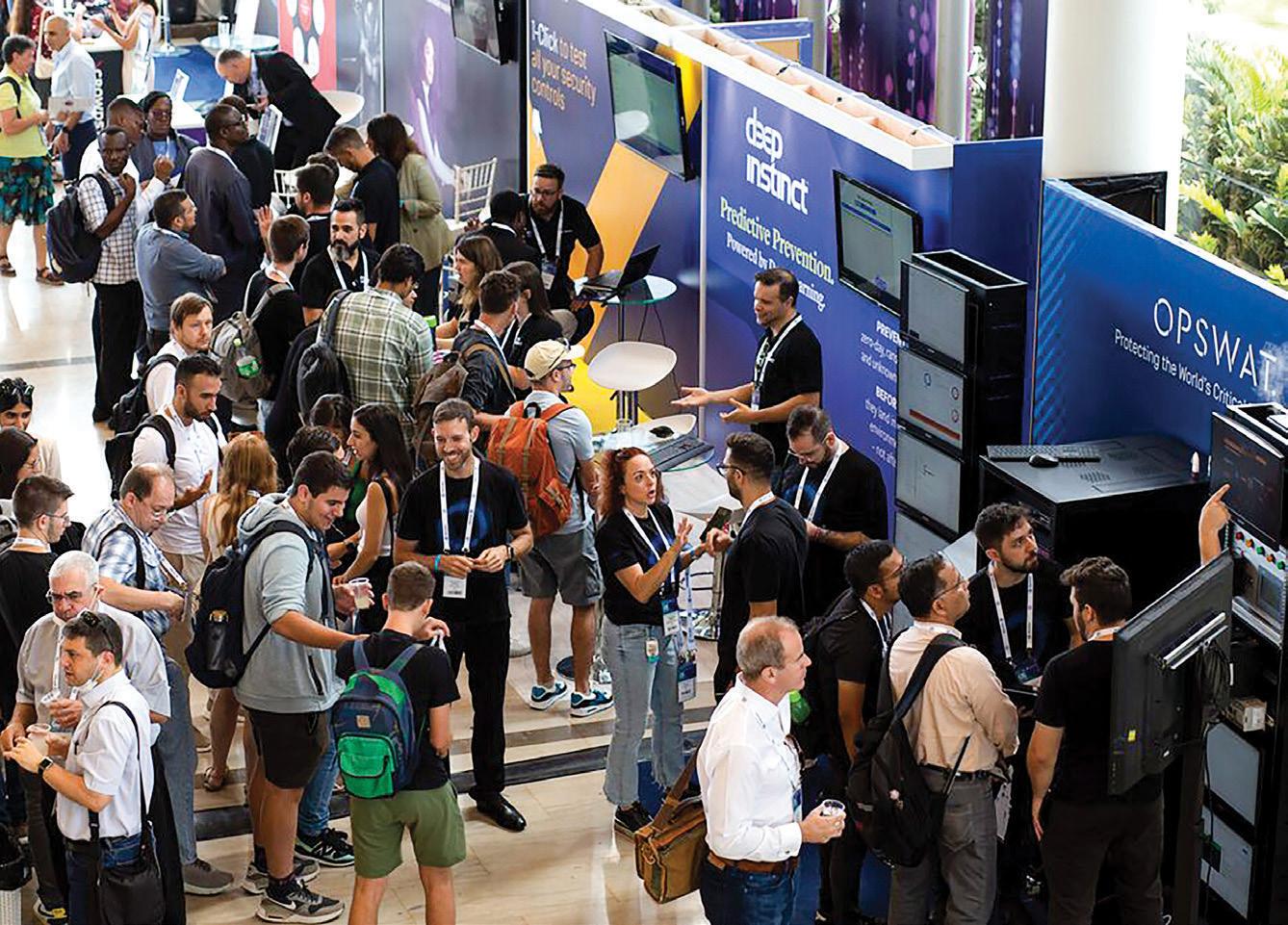
The event was jointly organised by the Blavatnik Interdisciplinary Cyber Research Center, the Yuval Ne’eman Workshop for Science, Technology and Security at Tel Aviv University and the Israeli National Cyber Directorate under the Prime Minister’s Office along with Israel’s Ministry of Economy and Ministry of Foreign Affairs.
Cyber Week featured speakers from around the world, including leading Israeli government officials such as Gaby Portnoy, director-general of the Israel National Cyber Directorate (INCD) and Ronen Bar, director of the Israel Security Agency (Shin Bet).
Major General (Retired) Professor Isaac Ben-Israel, recognised as the “father” of the Israeli cyber industry, led the conference.
Craig Jones, cybercrime director at Interpol and Ann Dunkin, chief information officer of the US Department of Energy.
The conference also welcomed private sector leaders, such as Eric Doerr, VP of Engineering and Cloud Security at Google Cloud, Gil Shwed, founder and CEO of Check Point; Aviv Cohen, CMO of Pentera; Bret Arsenault, corporate vice president and chief information security officer of Microsoft; Udi Mokady, founder and executive chairman of CyberArk; Chris Roberts, CISO of Boom Supersonic; Lane Bess, CEO of Deep Instinct and others.
During the conference, in a keynote, Walden said: “In the so-called digital age, we are increasingly connected, and our world continues to grow more reliant on digital technology. And as a result, our cybersecurity threat landscape is incredibly complex, ranging from criminals who steal or ransom corporate data to nations with sophisticated capabilities that target other government militaries and their infrastructures.
Global cyber officials also made significant contributions, including Kemba Eneas Walden, acting national cyber director in the Office of the National Cyber Director; Nathaniel C Fick, ambassador at large for Cyberspace and Digital
Policy at the US Department of State; Minister Audrey Tang, Ministry of Digital Affairs Taiwan; Sami Khoury, head of the Canadian Centre for Cyber Security; Dr Mohamed Al Kuwaiti, head of Cybersecurity for the UAE Government;
“And in recent years, criminal actors using ransomware as well as other means have launched thousands of attacks around the world. The operational costs an attack can have on a small business, the impact on education when a school system is disrupted, or even the human costs when criminal actors target health care are not only costly but are also incredibly disruptive to the lives of ordinary people.
“Securing ourselves against threats is not the only thing that matters when it comes to cyberspace. We use digital technologies to make our lives easier, safer, and more equitable. We work,
FEATURES / CYBERSECURITY gulfbusiness.com August 2023 35
THE 13TH EDITION OF CYBER WEEK, HELD OVER A PERIOD OF FOUR DAYS, WITNESSED OVER 11,000 ATTENDEES FROM 99 COUNTRIES
learn, bank, communicate and share on the internet. Technology can empower communities, create safe spaces, and let people see the world in new ways. In short, this digital age makes it easier for us all to fulfill our hopes and aspirations.”
UAE, ISRAEL JOIN FORCES
Meanwhile, during the event, a distinguished delegation consisting of esteemed Emirati entities, headed by Dr Al Kuwaiti were also in attendance.
The delegation engaged with key stakeholders in Israel’s cyber ecosystem, including investors, chief information security officers and top cyber experts. They also visited cyber labs, research and development centres, and startups to explore opportunities for deepening the existing partnerships.
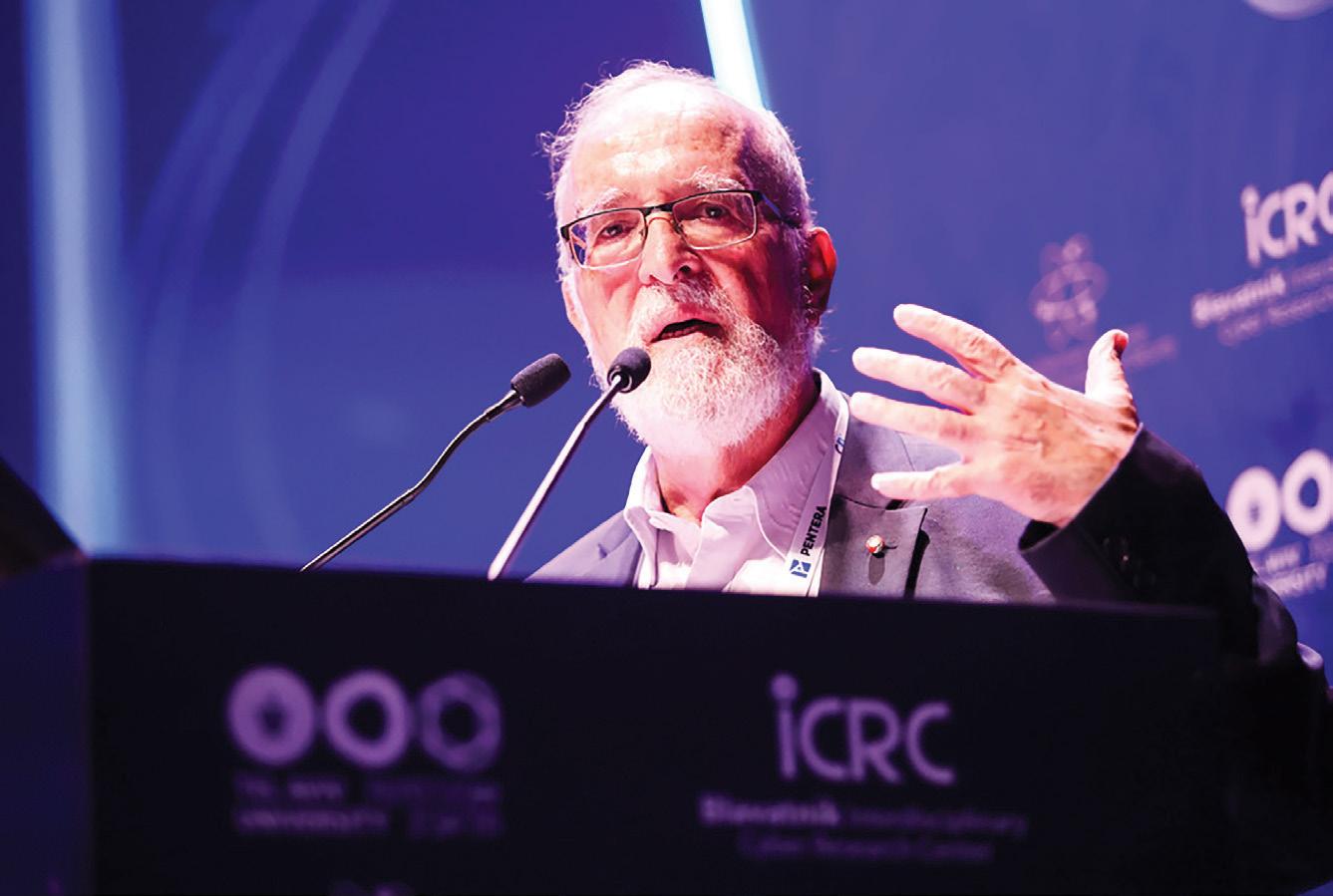
Dr Al Kuwaiti delivered a keynote speech at the conference during the main plenary panel titled: Safeguarding the Nation: Cybersecurity Strategies for a Digital Age.
He said: “Cybersecurity is an important aspect to us all. We in UAE, for example, are going through great digital transformation across all sectors: aviation, education, healthcare, oil and gas, transportation. And as a matter of fact, we need to ensure a safe and secure digital transformation. This safe and secure digital transformation requires
great minds, aspiration, and inspirational aspects that help us make that transformation really secure. Now, the critical infrastructure that we actually depend on, the essence of our life, definitely needs more and more care from that perspective.
“Our cybersecurity strategy has five main pillars. The main important pillar of that is partnership. It has, for example, governance, policy, procedures, laws, legislations that we need to continue enhancing. It has to build as well as enhance risk scale, as well as upscale many of our community in that perspective. It has a pillar that focuses on protecting and defending. And this is where we plug into the great startup nation where we have many of those companies helping us, as a matter of fact,

to build up that cyber dome or to extend that cyber dome, and as a matter of fact, we call it NSoC (National Security Operations Center) in that perspective.
“And many of the companies helping us, in a matter of fact, in that perspective have the innovation pillar, which dictates to us to use these new technologies. AI, for example, one of those technologies, blockchain, quantum, and many of those aspects that come to us. And the last pillar is partnership. Out of all of those pillars, the most important thing we always see is the human factor. The human factor that we need to really enhance their ability and work together with them in order to be our first line of defence. And this is our mission, to build that human factor and help them actually elevate many of those aspects.”
Dr Al Kuwaiti added: “Cyberthreats do not distinguish between nations. Cyberthreats do not distinguish between entities or people or any of those corporates there. That’s why we need to unite against those threats.”
On the sidelines of the conference, the UAE-based global cybersecurity community, EliteCISOs, signed a memorandum of understanding (MoU) with Cyber Together, an Israeli NGO. Under the terms of the MoU, EliteCISOs and Cyber Together will collaborate on various initiatives such as knowledgesharing, joint training, and workshops to enhance cybersecurity capabilities. They will also focus on promoting the development of a cybersecurity workforce and addressing emerging threats in both the UAE and Israel.
FEATURES / CYBERSECURITY gulfbusiness.com 36 August 2023
CYBERTHREATS DO NOT DISTINGUISH BETWEEN NATIONS. CYBERTHREATS DO NOT DISTINGUISH BETWEEN ENTITIES OR PEOPLE OR ANY OF THOSE CORPORATES THERE. THAT’S WHY WE NEED TO UNITE AGAINST THOSE THREATS”
Major General (Retired) Professor Isaac Ben-Israel
FROM STARTUPS TO UNICORNS
Israel, recognised as the ‘startup nation,’ is steadily progressing towards becoming a ‘unicorn nation’. As per Ran Natanzon, the head of Innovation and Country Branding at Israel’s Ministry of Foreign A airs, Israel minted 21 new unicorns in 2022, bringing the total count to 98.
“We have a good group of unicorns and you see a partial list of them, and they’re spread across di erent sectors and not only one sector of unicorns. You will see them in di erent parts of the industry,” said Natanzon.


There are a number of factors that have contributed to the growth of its startups, especially in cybersecurity. These



include the country’s strong military, which has a long history of developing cyberwarfare capabilities; the presence of a large number of skilled cybersecurity professionals; and the government’s support for the sector.

STAYING AHEAD OF THE CURVE
Israel has a strong track record of innovation in cybersecurity, and its government is committed to investing in this sector. In addition, the country has a highly skilled workforce, and its universities are producing topnotch cybersecurity graduates. As the world becomes increasingly digital, the demand for cybersecurity will only grow. Israel is well-positioned to meet this demand, and its cybersecurity industry is expected to continue to grow in the years to come.
ISRAEL, RECOGNISED AS THE ‘STARTUP NATION’, IS STEADILY PROGRESSING TOWARDS BECOMING A ‘UNICORN NATION’
ISRAEL MINTED 21 NEW UNICORNS IN 2022, BRINGING THE TOTAL COUNT TO 98
NUMBER OF FACTORS THAT HAVE CONTRIBUTED TO THE GROWTH OF ISRAEL’S STARTUPS
01. THE COUNTRY’S STRONG MILITARY
02. THE PRESENCE OF A LARGE NUMBER OF SKILLED CYBERSECURITY PROFESSIONALS





03. THE GOVERNMENT’S SUPPORT FOR THE SECTOR

FEATURES / CYBERSECURITY gulfbusiness.com August 2023 37
WE HAVE A GOOD GROUP OF UNICORNS AND YOU SEE A PARTIAL LIST OF THEM, AND THEY’RE SPREAD ACROSS DIFFERENT SECTORS AND NOT ONLY ONE SECTOR OF UNICORNS. YOU WILL SEE THEM IN DIFFERENT PARTS OF THE INDUSTRY. AND TODAY WITH ISRAELI UNICORNS OR ABOUT 10 PER CENT OF THE GLOBAL UNICORNS”
Dr Mohamed Al Kuwaiti, head of Cybersecurity –UAE Government
REMEMBERING PETER HELLYER

A LASTING AND IMPACTFUL LEGACY
AUTHOR,


Peter Hellyer, the renowned author, columnist and cultural historian, died peacefully on July 2 in Abu Dhabi at the age of 75.
Hellyer was born in Sussex, in the South East of England, on November 5, 1947. His parents were Arthur George Lee Hellyer, a well-known horticulturist and writer, and Gay Hellyer. He attended high school in Sussex and pursued his graduate degree at Sussex University, where he developed an active interest in politics and activism. In December 1964, Hellyer joined the Liberal Party.
He then became involved in the local Young Liberals arm and even worked at the Liberal Party headquarters. Soon a ter, he took on the role of International Vice Chairman of the National League of Young Liberals, working on campaigns that supported foreign policy issues.
At Sussex University, Hellyer met Thabo Mbeki, who would become the President of South Africa in June 1999. Mbeki was deeply involved in the fight against apartheid, which Hellyer actively supported. Driven to make a di erence, Hellyer became a key member of the UK solidarity group, the Anti-Apartheid Movement. At age 21, he helped develop the ‘Stop the Seventy Tour’ campaign, launched in 1969 to dissuade all-white South African sporting teams from visiting the UK. Even later, Hellyer continued his activism and support of human rights.
He authored a book, one of many, titled Israel and South Africa: Development of Relations 1967-1974, submitted in October 1974 to the UN Special Committee on Apartheid. The book was inscribed as an o cial document of the 1974 UN General Assembly.
LONG-STANDING TIES


In 1975, Hellyer travelled as part of a Liberal Party delegation to the UAE. During the trip, he met the late Sheikh Zayed bin Sultan Al Nahyan for the first time in the company of his advisor and interpreter, Zaki Nusseibeh, who is now the cultural adviser to the UAE President.
Hellyer’s trip marked the beginning of a long-standing relationship with the UAE. He started making documentary films about the country and Sheikh Zayed’s overseas visits. In 1978, Hellyer moved to Abu Dhabi full-time. Apart from the period from 1982-1985, when he lived in London, Hellyer resided in Abu Dhabi for the rest of his life. His illustrious and impactful career in the UAE spanned almost five decades. Starting as a broadcaster, he played a pivotal role in establishing the English-language service of the Emirates News Agency, WAM, in 1978, with the late Palestinian journalist Ibrahim al-Abed. Later, he took on the role of managing editor for Abu Dhabi’s ocial daily paper, Emirates News, from 1985 to 1999.
Subsequently, he served as an adviser and the Head of External Relations at the Ministry of Information and the National Media Council.
DIVERSE INTERESTS
Apart from his professional responsibilities, Hellyer was also passionate about local birdlife, archaeology, and
gulfbusiness.com 38 August 2023 FEATURES / IN MEMORIAM
JOURNALIST AND HISTORIAN PETER HELLYER’S INCREDIBLE DEVOTION TO THE UAE, A NATION HE LOVED PASSIONATELY, WILL BE REMEMBERED FONDLY
Pic courtesy: WAM
WORDS ASWATHY SATHISH
the UAE’s heritage and history. In fact, he took the former Prince of Wales, now King Charles III, birdwatching on one of the British monarch’s trips to the UAE.
As an active member of the Emirates Natural History Group since 1985, Hellyer made a notable contribution to its journal, Tribulus, for 30 years.
He also co-founded the Abu Dhabi Islands Archaeology Survey, a key organisation responsible for identifying and excavating archaeological sites along the coast and islands of Abu Dhabi. Notably, he led the team that made pivotal discoveries, such as the 1,400-year-old monastery on Sir Bani Yas Island.
A pillar of the expat community, Hellyer co-founded the Abu Dhabi’s British Business Group, now known as the British Chamber of Commerce, Abu Dhabi.

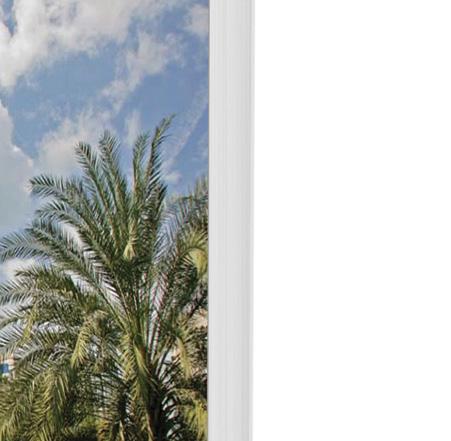
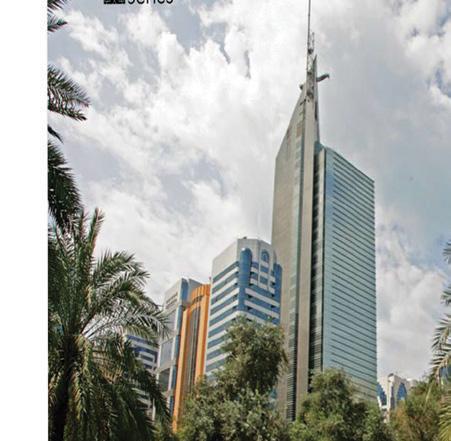
Additionally, he served as an adviser to the government of Jersey for more than 20 years, playing a crucial role in nurturing the island’s relations with the UAE and earning the esteemed Silver Seal of the Bailiwick of Jersey for his remarkable e orts.
WORDS OF PRAISE
The President of the UAE, HH Sheikh Mohammed bin Zayed Al Nahyan took to Twitter to acknowledge Hellyer’s dedicated service to the nation over the years. Sheikh Mohammed wrote “Peter was a model of dedication and generosity, and we pray that he rests in peace”.
In an article in The National newspaper, Nusseibeh said Hellyer spent decades in the service of the nation. “I have known him since the 1970s … as a loyal friend, a distinguished journalist, a diligent archaeologist, a writer and a researcher.”
Salem bin Khalid Al Qassimi, Minister of Culture and Youth, said that Hellyer was a great historian who “dedicated 50 plus years to UAE’s environmental and archaeological heritage, notably Sir Bani Yas. His devotion to this land will inspire us to preserve our environment, monuments and history”.
Hellyer was an accomplished writer and had authored numerous articles and books on the country’s politics, history, natural history and archaeology, as well as several government yearbooks.
Motivate Media Group had the privilege of collaborating with him on many projects, publishing books such as Abu Dhabi: Garden City of the Gulf, Fujairah: An Arabian Jewel, Al Ain: Oasis City and Fi ty Years of Emirates Archaeology among others.
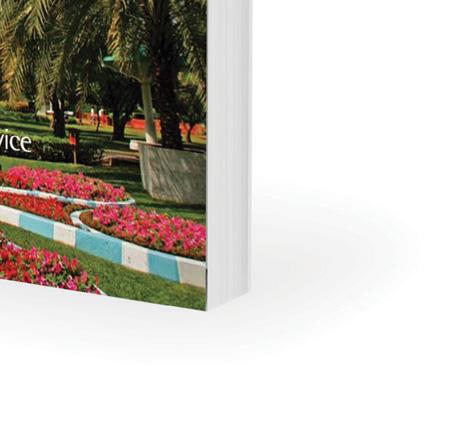
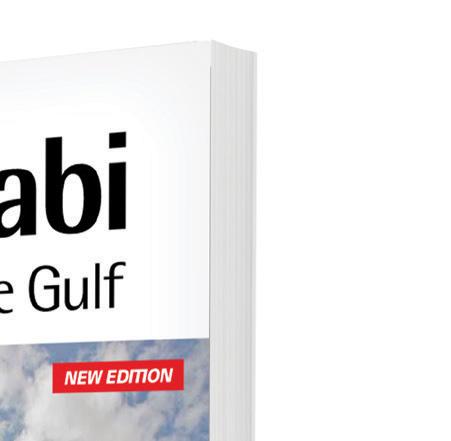
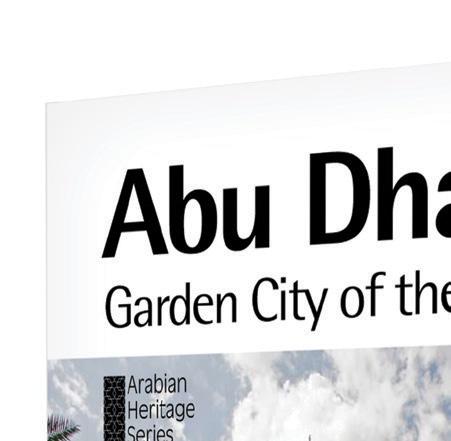
REWARDED WITH ACCOLADES
Hellyer’s contributions to the UAE were honoured at the highest level, receiving the annual Sheikh Mubarak bin Mohammed Award for Natural History in 2004. In 2010, he was granted UAE citizenship by the late Sheikh Khalifa bin Zayed Al Nahyan. In 2013, he was bestowed with the prestigious Abu Dhabi Medal, the emirate’s highest civilian honour, in recognition of his significant role in identifying important archaeological sites across the UAE. At the awards ceremony, he was described as a “real-life Indiana Jones”.
In 2013, Hellyer was bestowed with the prestigious Abu Dhabi Medal, the emirate’s highest civilian honour, in recognition of his significant role in identifying key archaeological sites across the UAE
Ian Fairservice, Managing Partner and Group Editor of Motivate Media Group commented: “We have lost such a friend and wonderful colleague in Peter Hellyer. We worked together for many years on so many projects, and his contribution to researching and recording our region’s heritage and culture is incalculable.
“I was privileged to count him as one of my closest friends for over 30 years, and it is surely a comfort that generations to come will continue to learn from the knowledge and understanding of the Arab world that Peter shared through his insightful work as a writer, editor and documentary maker.”
As we remember and celebrate the life of Hellyer, we honour his dedication, passion and lasting impact on the UAE and its people. His insightful work as a writer, editor and documentary maker will continue to shape and enrich the understanding of the Arab world for generations to come. As we say goodbye to this exceptional cultural historian, his memory will forever be etched in the hearts of those he touched and the nation he called home.
Paying homage to Hellyer’s life and times, his son, Dr H A Hellyer, said in an article published in The National: “There will be many who will remember Peter Hellyer as an archaeologist, as a writer, a cultural historian, even as a ‘real-life Indiana Jones’ of the UAE. I remember him as a father whose early life as an activist was a source of pride, and whose fascination with the Arab world was deeply imprinted upon me.”
gulfbusiness.com August 2022 39 FEATURES / IN MEMORIAM
INDIA A RISING FORCE
WITH 6-6.5 PER CENT GDP GROWTH EXPECTED IN 2023-24, INDIA IS SET TO ENTER THE LEAGUE OF THREE LARGEST ECONOMIES BEFORE 2030 WORDS:

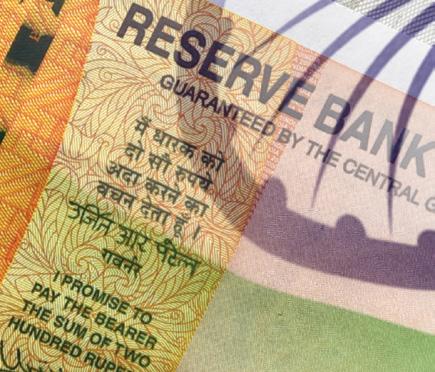
India’s growth story can’t be avoided today, even if there might be some skepticism surrounding it. Recent developments are a testament to the country’s growing global economic prominence –be it a reference to US-India economic deals in chip assembly, critical minerals and other areas, Tesla’s strong indications to potentially invest in India, or the newly released United Nations Conference on Trade and Development report indicating that India managed to attract the third highest announced greenfield investments globally in 2022. All significant achievements for a country that also celebrates its 77th year of independence on August 15.

What the growth numbers tell us



India’s economy grew by 9.1 per cent in 2021-22 and 7.2 per cent in 2022-23 in real GDP terms, positioning itself within the fastest-growing economies globally. While some of this growth can be discounted, considering the low GDP base from the pandemic and lockdowns which created a growth rebound e ect, it is important to bear in mind that these circumstances were not unique to India. Looking at the present conditions, the country is forecast to grow at anywhere

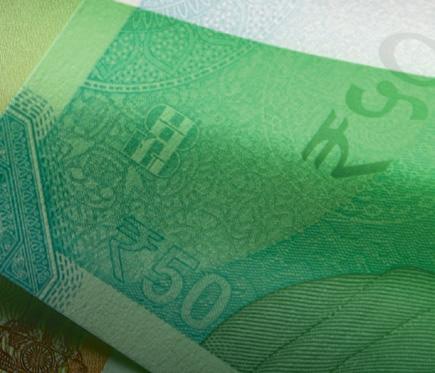
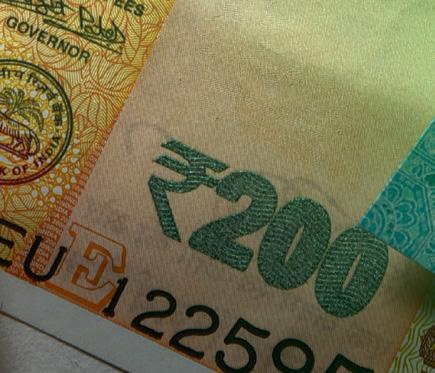

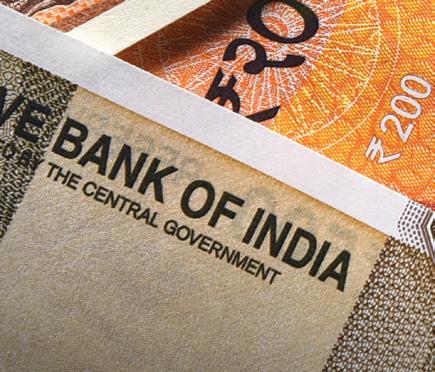

between 6-6.5 per cent for 2023-24, giving the country a ‘bright spot’ economy status at a time when China, for example, is exhibiting uneven recovery, Germany enters a recession, and the US potentially narrowly avoids one.


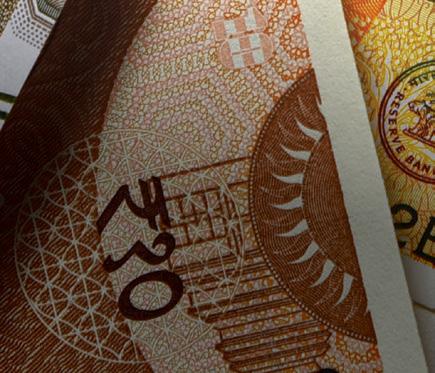

A look at the size of economies, measured in terms of nominal GDP, also reveals how India is emerging as a global economic heavyweight. (Seetableonpg.41) India will join the US and China by 2027 in the league of the top three largest economies. It is clear from the data that India will still trail much behind the US and China in economic size, however, the ‘catch-up’ growth by India can’t be ignored, especially as it goes on to displace Japan and Germany before the close of this decade.
What’s driving the Indian economy?
Domestic demand-driven resilience has been a key factor in supporting India’s growth. Private final consumption expenditure (or PFCE, which is a measure for household spending or demand), accounting for about 55-60 per cent of the Indian economy, has displayed continuous quarterly growth (for example, comparing Q1 of 2022-23 over Q1 of 2021-22) following the contraction induced by the first wave of Covid-19.
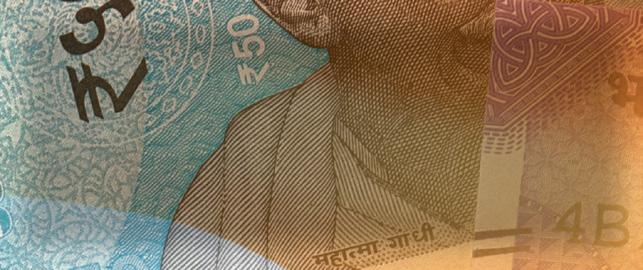
gulfbusiness.com 40 August 2023
NEHA ANNA THOMAS
PFCE growth in Q1 2021-22 (April to June 2021) stood at an impressive 17.6 per cent according to India’s Ministry of Statistics and Programme Implementation, despite the second Covid-19 wave, which had set in by this time. These figures were also helped by the rebound seen from 2020 data.
Despite the outbreak of the RussianUkrainian crisis and resulting external headwinds, PFCE has continued to be resilient. There has been a moderation in PFCE growth in more recent quarters, which can partly be pegged to highinterest rates.
Over the longer term, India’s domestic demand will receive a boost from its demographic advantages in terms of its large, growing population (compared to China’s depopulation) and rising working age cohort share, as well as middle class boom.
While PFCE growth moderated in Q3 and Q4 of 2022-23, gross fixed capital formation (or GFCF, which reflects investments) posted robust growth, especially supported by the government’s capital expenditure push. In fact, for 2022-23, GFCF share in GDP came in at 34 per cent which was a 10-year high. The government’s strong capital expenditure drive will remain a key growth driver in the ongoing fiscal year as well.
India’s manufacturing sector managed to reverse the contraction seen in Q2 and
Q3 2022-23, posting 4.5 per cent growth in Q4 2022-23. Over the long term, the manufacturing sector is poised to benefit from the pivot beyond China, as businesses seek to build a China+1 strategy with diversified production bases. Recent and potential investments into India by companies such as Apple and Tesla are indicative of this shi t.
Challenges ahead
While India’s macroeconomic fundamentals, as well as growing manufacturing policy support, put it at a very advantageous position to capture some investments away from China, India’s manufacturing share in GDP considerably lags behind China.
This impact is more profound when considering the relative size of the two economies. Businesses operating in China, therefore, could benefit from a stronger manufacturing ecosystem, a deeper network of raw material and input suppliers, and greater economies of scale. Adding to this is competition for India from Southeast Asia and other global locations in the era of supply chain diversification.
Southeast Asian economies managed to attract investments during the earlier wave of diversification following the USChina trade wars. Aside from competitive labour costs, these economies also compete with India with regard to economic
growth, demographic advantages and a burgeoning middle class. So as the country strives to grow its manufacturing base, it will also become increasingly important to enhance its competitive di erentiation against other go-to locations.
Additionally, with regard to doing business in India, regulatory challenges are seen as a deterrent to operations. This o ten arises from the complexity and excessiveness of regulations. While strides have been made for easing the regulatory burden, more reforms are required.
Industries to watch
The automotive industry is a lynchpin of the manufacturing sector and is a sizeable GDP and employment contributor in India. There tends to be a strong correlation between GDP growth levels and car sales, so it’s not too surprising that AprilJune 2023 passenger vehicle sales growth stood at a robust 9.4 per cent, as per data from the Society of Indian Automobile Manufacturers, following the last released GDP data for January-March 2023 when the economy beat expectations and grew by 6.1 per cent.
The sustainability-driven policy thrust in the automotive industry is evident through demand-side electric vehicle incentives from the FAME (Faster Adoption and Manufacturing of Electric Vehicles) scheme and the

Note: 2028 is the latest IMF forecast data; India data is representative of fiscal year data

FEATURES / ECONOMY gulfbusiness.com August 2023 41
US China Japan Germany France UK Brazil Italy India Russia US China Japan Germany UK India France Italy Brazil Canada US China India Japan Germany UK France Brazil Canada Italy
TOP 10 COUNTRIES BY NOMINAL GDP ($ BILLION) 2010, 2019 AND 2028
Source: International Monetary Fund (IMF); Frost & Sullivan
2010 2019 2028 1,708.5 2,835.6 5,575.5 5,000 0 10,000 15,000 20,000 5,000 0 10,000 15,000 20,000 25,000 5,000 0 10,000 15,000 20,000 25,000 30,000 35,000
subsequently launched productionlinked incentive scheme for automobiles and auto components, which prioritises electric and hydrogen fuel cell vehicles and components.
It is also interesting to examine how socioeconomic trends will play a role in influencing the future of the Indian industry. While India’s young demographic is advantageous for tech startups in terms of both talent pool as well as consumer demand, the silver economy also presents business opportunities considering
India’s growing elderly population and the fact that India is home to the second largest elderly population size globally. Senior living projects, geriatric care, and lifestyle products suited to the aged population are some key segments that will witness demand growth.
Fuelled by a combination of factors such as an increasing number of high-networth individuals, strong GDP growth, and aspirational living, India’s luxury market is also set for demand growth. The robust economy, for example, is
seen to be playing a vital role in boosting 2023 luxury car sales. In summary, while there has been some recent tempering in consumption-driven growth in India, investment-led growth will step in to help maintain robust growth in 202324. Longer-term consumption prospects, nonetheless, remain strong, especially driven by demographic forces.
Against this context and given the relief of a large, stable economy in the context of global slowdown, corporates are expected to increasingly bet on India for supply chain diversification and resilience in the era of a China+1 movement.
The writer is a senior economist and programme manager, Economic Analytics, Frost & Sullivan.
UAE-INDIA PARTNERSHIP: LEADING THE REGIONALISATION OF TRADE
Prime Minister of India
Narendra Modi visited the UAE in July, where he met President Sheikh Mohamed bin Zayed Al Nahyan. The two leaders conferred on climate change, energy security, food security and bilateral trade.
The bilateral meet saw the signing of three key agreements, which position the two countries at the forefront of regionalisation of trade. India and the UAE signed two memoranda of understanding to promote the use of local currencies for cross-border transactions and to interlink payment systems.
UNIFIED PAYMENT SYSTEM
These agreements will allow the Reserve Bank of India (RBI) and the Central Bank of the UAE (CBUAE) to set up a local currency settlement system (LCSS) that encourages the use of the rupee and the dirham to cover export-import transactions. The RBI said the
LCSS would enable exporters and importers to send invoices and pay in their respective domestic currencies, which in turn, would support the development of the Indian rupee and Emirati dirham foreign exchange market.
The deal is also expected to help promote investments and remittances between the two countries. The UAE is India’s second largest remittance source country after the US. Remittances to India from the UAE currently stand at 18 per cent of the $89.1bn in total remittances received for the fiscal year 2021-22, as per a report from India’s Ministry of Finance.
The second agreement will allow the two central banks to link India’s Unified Payments Interface (UPI) with UAE’s Instant Payment Platform (IPP). The UPI-IPP linkage would enable users in either country to “make fast, convenient, safe, and cost-effective cross-border fund transfers”, said the RBI.
UAE-INDIA CEPA
These agreements come close on the heels of the two countries marking the first anniversary of the UAE-India comprehensive economic partnership agreement (CEPA), signed in February 2022. This bilateral trade agreement went into effect two months later in May.
The CEPA was agreed upon and implemented to promote cross-border trade and investment. The agreement covers a significant amount (up to 95 per cent) of originating goods that were previously subject to customs duties on both sides.
The two countries envisage that bilateral trade in goods will reach over $100bn and trade in services will reach $15bn within five years, according to India’s ambassador to the UAE, Sunjay Sudhir.
The CEPA has considerably impacted bilateral trade (oil and non-oil) within just 12 months of its implementation. According to official data from
India’s Ministry of Commerce and Industry, the bilateral trade increased from $67.5bn (from May 2021-March 2022) to $76.9bn (May 2022-March 2023) – an annual increase of 14 per cent. India’s exports to the UAE increased from $26.2bn (May 2021- March 2022) to $28.5bn (May 2022 - March 2023) – an 8.5 per cent year-onyear growth. Meanwhile, India’s imports from the UAE have grown to $53.2bn, an annual increase of 18.8 per cent during the period April 2022 to March. Non-oil imports during the same period grew by 4.1 per cent.
The UAE was the second largest export destination for India with its exports amounting to over $28bn for the year 2021-22, according to data provided by the Indian Embassy in the UAE. For the UAE, India was its second largest trading partner for the year 2021, with its non-oil trade figure amounting to $45bn.
By Marisha Singh
FEATURES / ECONOMY gulfbusiness.com 42 August 2023
JUST ONE YEAR INTO ITS IMPLEMENTATION, THE CEPA IS PAYING DIVIDENDS FOR BOTH COUNTRIES
FUELLED BY A COMBINATION OF FACTORS SUCH AS AN INCREASING NUMBER OF HIGHNET-WORTH INDIVIDUALS, STRONG GDP GROWTH, AND ASPIRATIONAL LIVING, INDIA’S LUXURY MARKET IS ALSO SET FOR DEMAND GROWTH”
STARTUP SHOWCASE






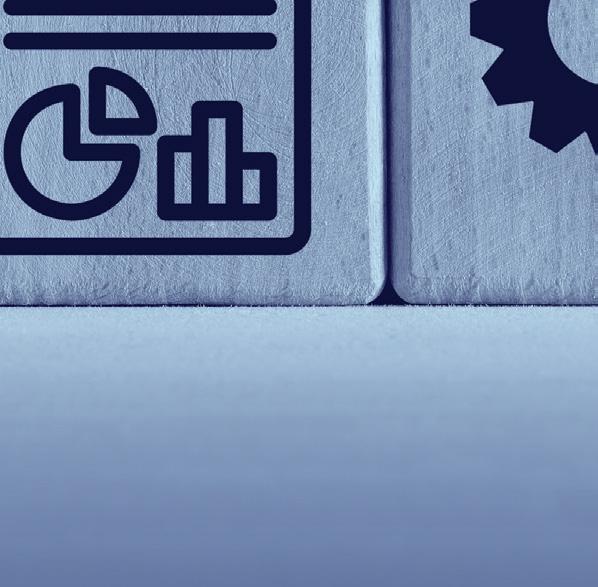








FROM RISING STARS TO NEW ENTRANTS, WE LOOK AT THE REGION'S PROMISING COMPANIES











 Photo: Getty Images/cagkansayin
Photo: Getty Images/cagkansayin
SPECIAL REPORT
TOP 12 STARTUPS




TO WATCH IN 2023
WE SHINE THE SPOTLIGHT ON SOME OF THE GCC’S MOST PROMINENT STARTUPS







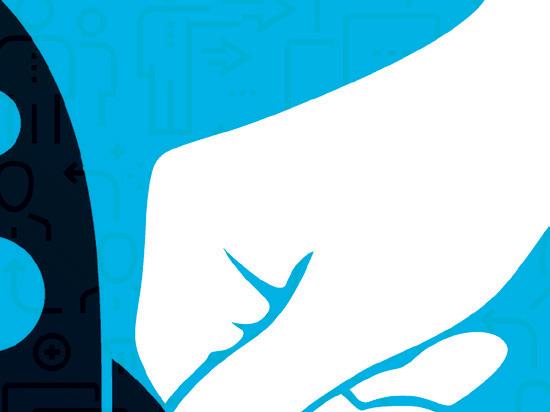
The digital revolution is creating massive opportunities for countries in the Gulf region to unleash new sources of innovation-led economic diversification and growth.
Startups in the region continue to attract signifi cant interest from both local and foreign investors as venture capital deals dry up in other parts of the world due to global economic uncertainty and the fallout from the recent global banking crisis.

MAGNiTT, a Dubai-based research firm, said that though the Middle East registered a 42 per cent decline in funding and deals, in line with global trends, the region’s startups raised over $1bn through 193 deals.
The fintech industry remains the top pick for investors, despite recording a 51 per cent year-on-year decline in transactions, according to MAGNiTT.


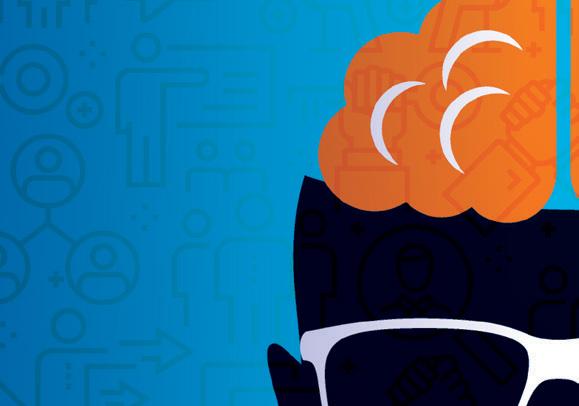








GCC’s maturing digital economy coupled with regionwide innovative initiatives makes it an attractive place to launch or scale a startup for an increasing number of global entrepreneurs.


Startups are an integral part of GCC governments’ economic diversification and job creation strategies. The sector has made impressive achievements over the years and the boom isn’t slowing down if the success stories from Tarabut Gateway, Tabby and YAP and the other startups featured here are anything to go by.






Figures are as of July 2023

44
YAP
COUNTRY: UAE
DESCRIPTION: Digital banking app




Dubai-based digital banking platform YAP raised $41m in a funding round that was led by Saudi Arabia-based Aljazira Capital in July 2022 to fuel its expansion into new markets and augment its product o erings.
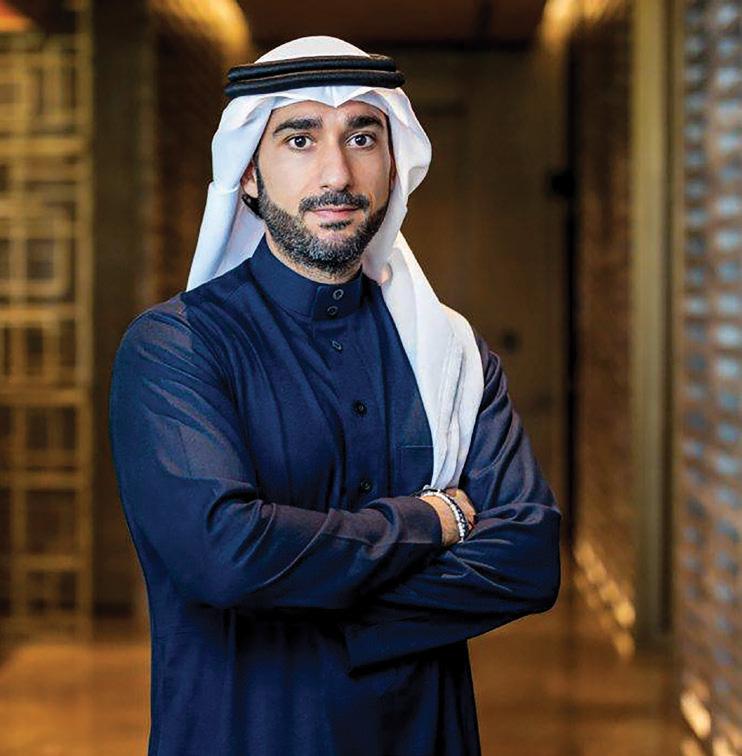

The capital raise is unarguably a significant milestone for the digital banking platform that was co-founded by Marwan Hachem and Anas Zaidan in 2021.
“The momentum and growth we have seen since our launch validates the need for the YAP platform throughout the region. We look forward to expanding into new markets and enhancing our offering in the months ahead with these investments,” Zaidan, YAP co-founder and managing director said a ter the funding round.
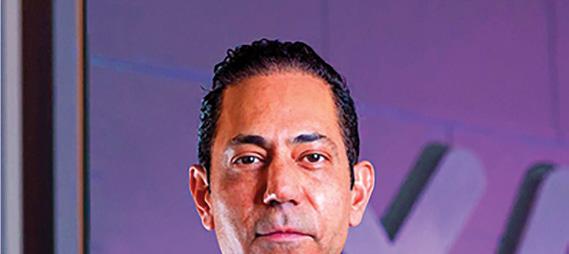
YAP plans to launch in Saudi Arabia this year and expand its services to Egypt, Pakistan and Ghana. Partnerships are an integral part of the company’s business model. At home, it has partnered with RAKBANK for retail banking and the Emirates Development Bank for SMEs.
The digital-exclusive bank is partnering with Bank AlJazira to launch consumer and business banking services in Saudi Arabia.
The digital banking platform’s Pakistan unit partnered with Bank Alfalah in September 2022 to o er customised digital financial products and services for SMEs.
YAP offers consumer debit cards, virtual cards with Apple Pay and Samsung Pay spending analytics, YAP 2 YAP, money transfers, bill payments and real-time notifications of purchases. It has a workforce of more than 300 employees serving over 150,000 customers across three markets.

Tarabut Gateway
COUNTRY: UAE


DESCRIPTION: Open banking platform

UAE-based Tarabut Gateway achieved a key growth milestone in May a ter the launch of its open banking services within the regulatory sandbox in Saudi Arabia.
With a presence in Bahrain, the UAE and Saudi Arabia, Tarabut is the largest regulated open banking platform in the Middle East and North Africa. It o ers banks and startups access to customer data to build innovative financial products.
Founded in 2017, Tarabut works with 35 banks in the MENA region, including 22 banks covering 90 per cent of Bahrain, and 11 banks covering Saudi Arabia, including Alinma Bank, Arab National Bank, Saudi National Bank and Riyad Bank – to achieve 60 per cent market coverage.
The platform raised $32m in a Series A funding round led by Pinnacle Capital in May to accelerate its expansion in Saudi Arabia. It also partnered with the global digital payment leader Visa to create data-driven o erings such as credit risk assessments, advanced analytics and insights.
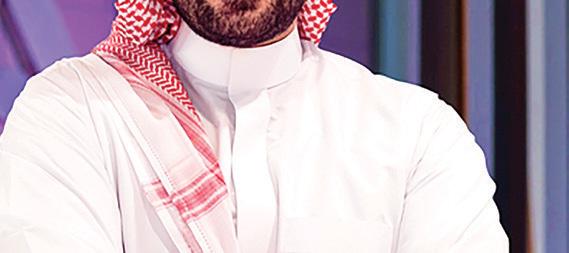
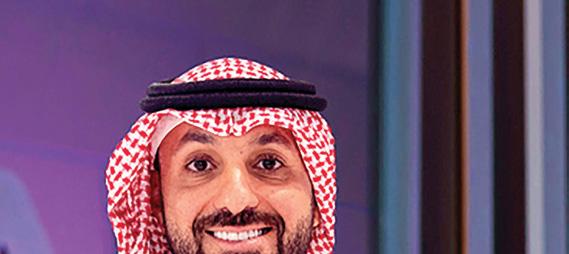
Tarabut has more than 60 fintech companies in its ecosystem. It recently partnered with Saudi credit analytics solutions provider Qarar to provide faster and more reliable lending and micro-lending company Tamam to provide it with Account Information Services.
Earlier in March, the open banking platform joined forces with crypto assets trading platform Rain to o er faster, cost-e ective fiat-to-crypto transactions to Bahrain end-users.
45
FEATURES / TOP 12 STARTUPS
YAP HAS A WORKFORCE OF MORE THAN 300 EMPLOYEES SERVING OVER 150,000 CUSTOMERS ACROSS THREE MARKETS
TARABUT HAS MORE THAN 60 FINTECH COMPANIES IN ITS ECOSYSTEM
Pic: Supplied
Pic: Supplied
Tabby partnered with Majid Al Futtaim (MAF) to allow customers to better manage their spending and make purchases more conveniently both in-store and online. Currently, the BNPL platform’s payment solution can be used in 15 per cent of MAF’s UAE mall tenants.
The fintech firm partners with retailers to provide consumers, both online and in-store, the option to defer paying for purchases for up to 30 days or to pay four equal monthly instalments at zero cost. Over 15,000 global brands and small businesses, including H&M, Adidas, IKEA, SHEIN, noon and Bloomingdale’s use the company’s BNPL solution.

COFE
Tabby
COUNTRY: Saudi Arabia/UAE
DESCRIPTION: Buy now, pay later app
UAE’s Tabby has raised a total of $744m from nine fundraising rounds as the buy now, pay later (BNPL) platform pushes ahead with growth plans. The fintech firm increased its debt facility to $350m in May and new funds will allow the company to serve more customers, retailers and purchases.
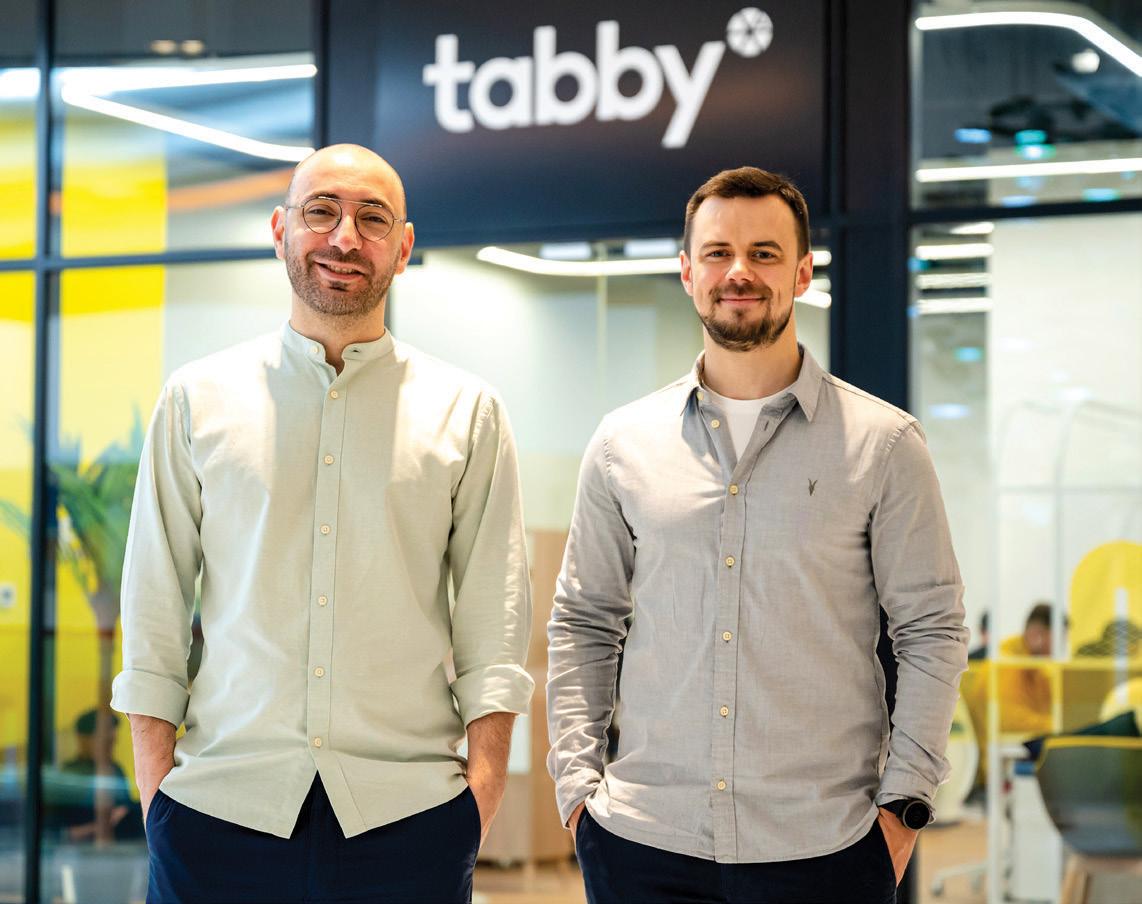
“With rising interest rates and growing inflation, it has never been more important for people to have access to payment flexibility to stay in control of their finances,” Hosam Arab, CEO and co-founder of Tabby said when the BNPL platform raised $58m in Series C fundraising round in January. The funding round valued Tabby at $660m.
Founded in 2019 by Arab and Daniil Barkalov, the fintech firm has gone from strength to strength with over four million active shoppers across Saudi Arabia, the UAE, Kuwait and Bahrain.
THE GLOBAL COFFEE MARKET IS PROJECTED TO GROW BY 4.61 PER CENT (20232028) TO REACH $110.7BN IN 2028
COUNTRY: Saudi Arabia/UAE
DESCRIPTION: Online marketplace



Co ee continues to thrive as one of the most consumed beverages globally. The global co ee market is projected to grow by 4.61 per cent (2023-2028) to reach $110.7bn in 2028, according to Statista.
As one of the biggest players in this sector, Kuwait-born and UAE-based COFE is leveraging innovative technology to deliver co ee across the Middle East. “COFE’s story has been one of resilience. We have had some great opportunities, but not without challenges that have needed innovative maneuvering,” said Ali Al Ebrahim, founder and CEO of the co ee marketplace, in June a ter the company raised $15m in a Series B funding round.
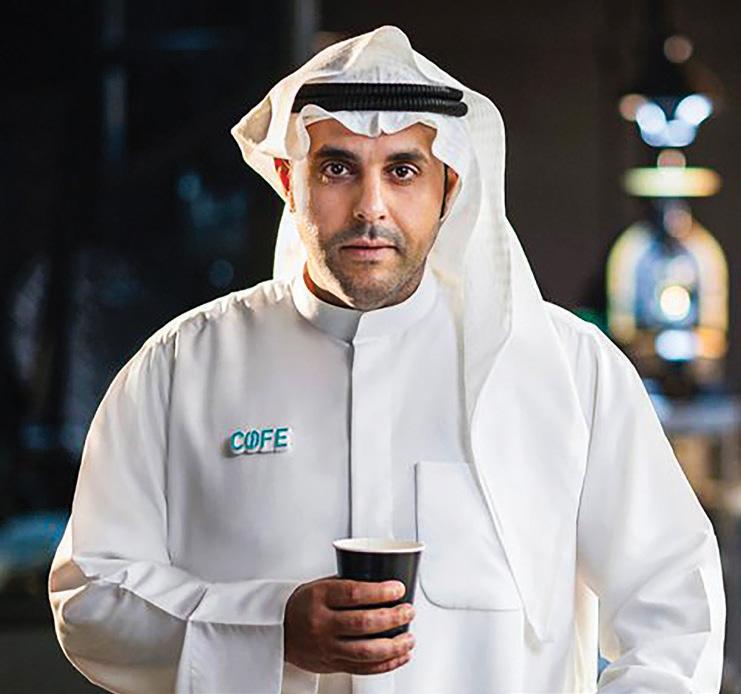
COFE plans to use the proceeds to strengthen its e-commerce o erings, boost its position in the


46 FEATURES / TOP 12 STARTUPS
Pic: Supplied
With rising interest rates and growing inflation, it has never been more important for people to have access to payment flexibility to stay in control of their finances”
Pic: Supplied
regional market and expand internationally. The platform, which entered the Saudi market in 2020, acquired the digital ordering platform Ka een in March 2022 to expand its customer base in the kingdom.
To further shore up its presence in Saudi Arabia, COFE partnered with the Public Investment Fund’s Saudi Co ee Company whose mandate is to invest more than $319m (SAR1.2bn) in the country’s co ee industry over the next decade.
Founded in 2018, COFE has grown exponentially over the years to become an integral player in the $44bn in MENA region co ee market. The co ee marketplace is one of the most funded startups in the region, having attracted $28.2m in investment, according to Crunchbase.


COFE currently operates in the UAE and Saudi Arabia, and recently expanded into Egypt, with a so t launch in a few select cities.
Qashio
COUNTRY: UAE
DESCRIPTION: Spend management app

Dubai-based fintech firm Qashio was founded in 2021 by Jonathan Lau and Armin Moradi. The platform raised a $10m seed round in November 2022 from investors including One Way Ventures, MITAA, Sanabil 500 MENA, Nuwa Capital, Iliad Partners and family o ces.
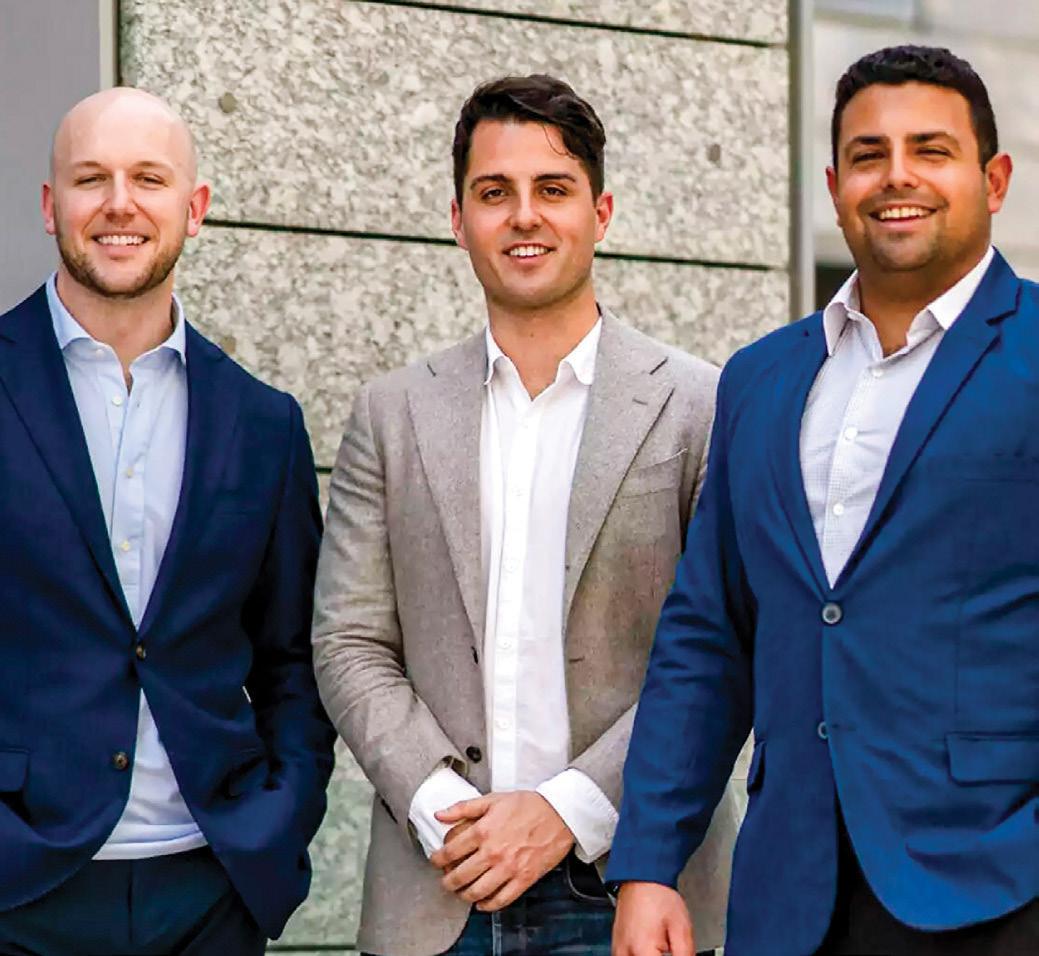
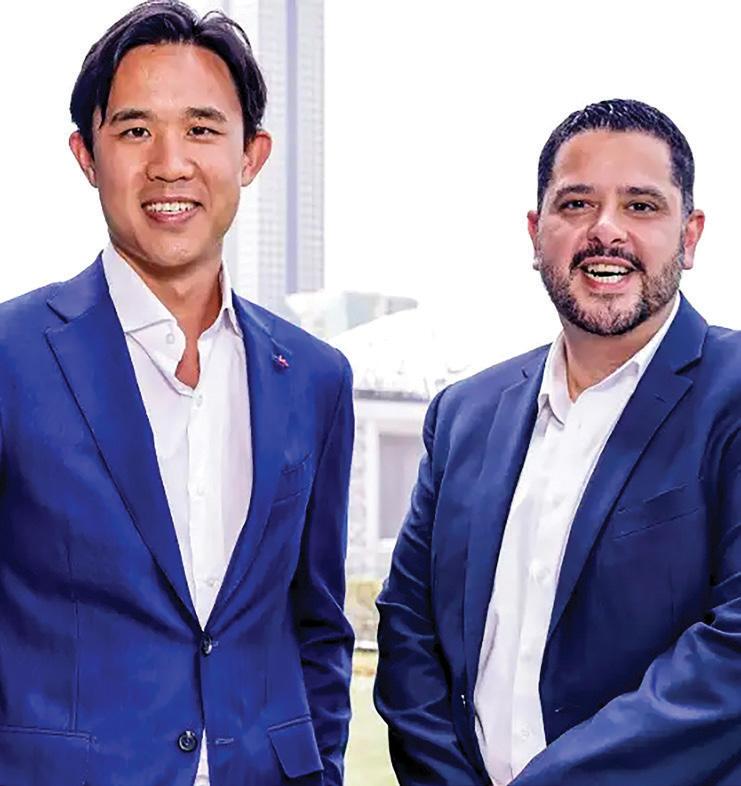
Qashio launched in Saudi Arabia through a partnership with Alinma Bank in April, paving the way for the fintech firm to roll out both its SME and enterprise-grade spend management platforms to its customers in the kingdom.
The company recently partnered with biometrics solutions provider Facephi, which allows its users in the UAE and Saudi Arabia to perform digital onboarding and identity verification without the risk of identity the t.


Qashio’s so tware, and virtual and physical cards allow businesses to automate and manage their spending more transparently, saving hundreds of man-hours and reducing petty cash leakage in the process.







The platform offers business owners and finance leaders full visibility and control of all expenses by providing real-time tracking for every expense, as corporate card spending in the UAE is expected to exceed $100bn and with Saudi Arabia estimates indicating close to double this amount by 2025.
QASHIO OFFERS
BUSINESS OWNERS AND FINANCE LEADERS FULL VISIBILITY AND CONTROL OF ALL EXPENSES BY PROVIDING REAL-TIME TRACKING FOR EVERY EXPENSE



















It counts several brands and customers across Saudi Arabia and the UAE among its customers, including Nana, Swiss International, Yaa Foods, Al Shiha Group, Tasoru Holding, Instashop, and Saif Belhasa.
Rain COUNTRY:
Bahrain
DESCRIPTION: Crypto exchange platform
Rain received its crypto-asset module licence from the Central Bank of Bahrain in 2019 following a two-year regulatory sandbox.
The cryptocurrency exchange platform is the first crypto-asset company to earn a regulatory license in the Middle East.
47
Pic: Supplied
Pic: Supplied
The company, which has satellite o ces in Saudi Arabia, Egypt, and the US, allows traders to buy, sell, and store approved cryptocurrency across the GCC and Türkiye. Rain supports digital assets including bitcoin, litecoin, ethereum, solana, Binance USD and FTX Token.
It raised $110m in a Series B funding round co-led by Paradigm and Kleiner Perkins in January 2022 to further expand licencing in other jurisdictions across the Middle East and enhance its technology with an advanced trading platform.
The platform also secured an in-principle approval from ADGM’s Financial Services Regulatory Authority for permission to conduct regulated financial services activities from the financial hub.
“Working with regulatory bodies such as the FSRA is one of the fastest and most secure ways to o er cryptocurrencies to the region and benefits both customers and governmental bodies alike,” Yehia Badawy, Rain co-founder said at the time of the licencing in January 2022.
Rain was founded by Badawy, Abdullah Almoaiqel, AJ Nelson and Joseph Dallago in 2017.
Floward
COUNTRY: Kuwait/Saudi Arabia
RAIN SUPPORTS DIGITAL ASSETS INCLUDING BITCOIN, LITECOIN, ETHEREUM, SOLANA, BINANCE USD

and services to advance user experience while meeting customers’ evolving needs.




























The company sells fresh flowers, gi ts, and products such as cakes, chocolate, and perfumes in 36 cities across the Middle East and the UK. In February, it secured $156m in a Series C PreIPO investment round led by Aljazira Capital, Rainwater Partners, and STV.
Floward plans to use the funds to further expand its gi ting verticals and roll out its mergers and acquisitions strategy. Speaking at the Saudi Capital Markets Forum in February, Floward chairman and CEO, Abdulaziz B. Al Loughani said the company is currently going through a vital phase of its journey a ter announcing plans to go public.
“We would like to confirm that we have started our preparations for listing our company by establishing an IPO committee alongside our board members,” Al Loughani added.
The company raised $34.2m from previous fundraising rounds, the latest of which was $27.5m in a Series B funding round in June 2021.
The flowers and gi ts e-commerce platform completed the acquisition of Kuwait fragrances company Mubkhar in November 2022. Floward claims that it delivered 50 million flower stems in 2022, created over 1,000 direct jobs and partnered with more than 400 brands and local talents.
DESCRIPTION:
Flowers and gifts e-commerce platform
Since its founding in 2017 in Kuwait, Floward has solidified its position as an innovative industry leader by introducing multiple unique products
Alma Health
COUNTRY: UAE
DESCRIPTION: Digital healthcare platform
Alma Health is a digital healthcare provider that has recently expanded its services to Dubai, following successful operations in Abu Dhabi and Cairo. The company raised $10m in a Series A fundraising round to accelerate its growth in Saudi Arabia, enter new markets and continue to hire talent.

“Alma Health is a vanguard digital healthcare provider on a mission to transform the lives of millions of people living with chronic conditions,” said Khaldoon Bushnaq, co-founder of Alma Health.

The healthtech startup was cofounded at the height of the global pandemic in 2021 by co-founders Bushnaq and Tariq Seksek. It o ers individuals virtual medical consultations through its application, connecting them directly with

48 FEATURES / TOP 12 STARTUPS Pic: Supplied
AND FTX TOKEN
licenced in-house general practitioner doctors. Convenient lab tests can be conducted at home, and users can obtain prescription renewals covered by their health insurance, with same-day delivery at no extra cost.

Backed by global and regional venture capital firms, Alma Health aims to simplify the management of chronic conditions, such as diabetes, hypertension and cholesterol. The healthcare provider is fully licenced as a healthcare provider by the departments of health in Dubai and Abu Dhabi, as well as by the Ministry of Health in Egypt.

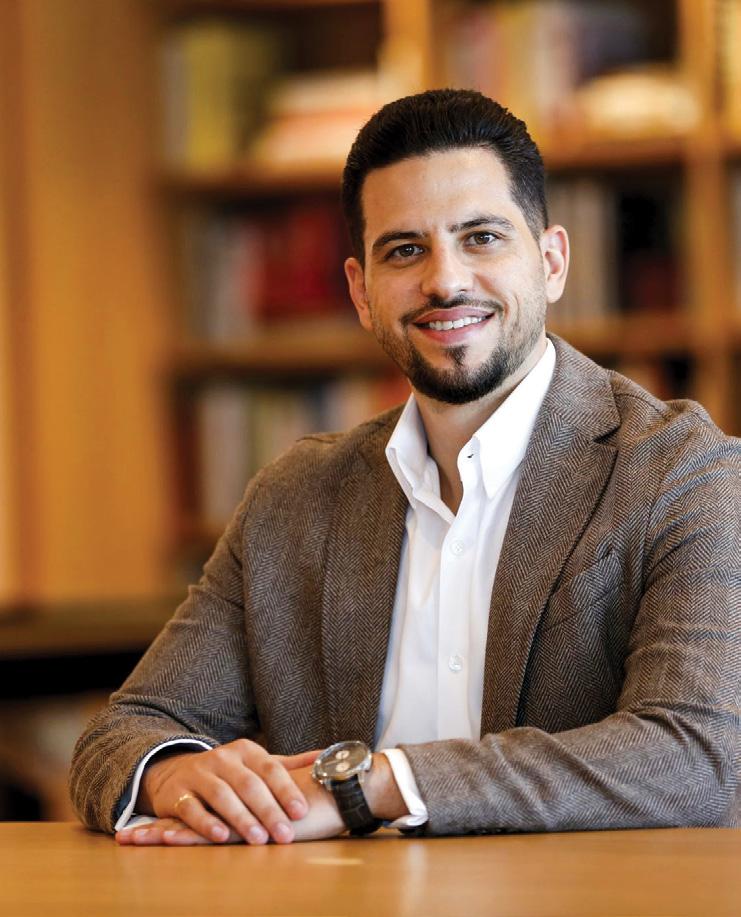
Alma Health operates its own virtual clinics, sta ed with physicians, who use the company’s in-house developed technology to provide comprehensive care and management for chronic conditions. In addition, the healthcare provider owns and operates a network of cloud pharmacies specifically designed for the fulfilment and delivery of chronic care medications.
The company ensures the privacy and security of user data through 256-bit data encryption and compliance with HIPAA regulations. Moreover, Alma Health o ers ongoing support, medication reminders, and automatic prescription renewals, while maintaining a comprehensive record of users’ history and previous prescriptions.



Huspy
COUNTRY: UAE
INDUSTRY: Proptech platform

Launched in 2020, Huspy is a proptech startup
that aims to revolutionise the process of the home buying experience, from finding a property to financing it and beyond. By harnessing technology to connect homebuyers, mortgage brokers, agents and bankers, the startup provides wider access to home financing options. Its technologyfirst approach has led to its mortgage platform becoming the largest in the UAE.
Through its platform, prospective homeowners gain access to competitive mortgage rates and exclusive financing o ers, all in one convenient location. “Our customers secure mortgages much faster than traditional processes and 90 per cent of all our financing requests receive bank approval due to our rigorous processes,” says Fouad Chemlati, general manager, Huspy.
Huspy’s comprehensive platform allows buyers to compile a shortlist of fully verified properties, schedule viewings at their convenience, receive mortgage o ers, and even apply for financing directly through the platform.
In 2022, the company bolstered its presence in the UAE by acquiring three brokerages: Home Matters, Just Mortgages, and Finance Lab.
49 Pic: Supplied Pic: Supplied
Our customers secure mortgages much faster than traditional processes and 90 per cent of all our financing requests receive bank approval due to our rigorous processes”
Meanwhile, having achieved a gross merchandise value (GMV) of $2bn, Huspy has set its sights on a $400bn GMV opportunity in its current operating countries – the UAE and Spain. Among the notable investors backing Huspy are Sequoia Capital India, Founders Fund, Fi th Wall, Chimera Capital, Breyer Capital, VentureFriends, COTU, Venture Souq, and BY Venture Partners.
Over the years, the brand has experienced significant growth in its global employee count, currently employing 300 individuals from more than 40 di erent nationalities.

Munjz
COUNTRY: Saudi Arabia
INDUSTRY: Proptech platform


























Munjz, a cloud platform for property and real estate management, successfully concluded Series A investment funding, raising $5m. The round was led by an undisclosed company along with Vision Venture, Almajdiah Investment Company, and Watheeq Proptech Fund.
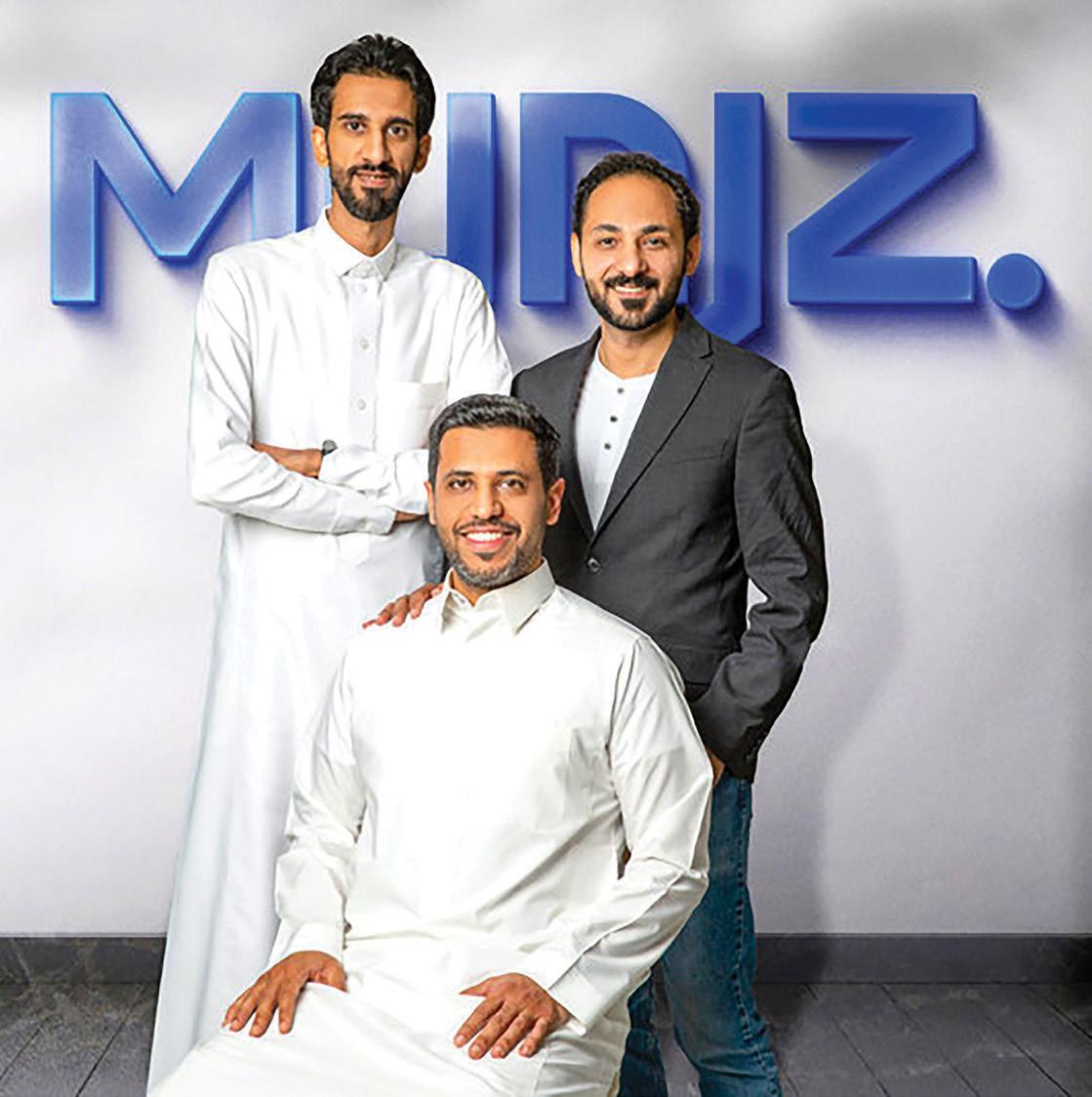
Established in 2017 by Abdullah AlDaij (see pic below, centre), Munjz focused on providing maintenance services to individual homeowners
through approved service providers. However, in November 2021, Munjz transformed its business model into a proptech so tware-as-a-service which targeted the business sector.

The new platform connects all properties into one centralised hub, enabling property managers and owners to e ciently manage their properties, associated facilities, and operations.

Since its launch, Munjz has onboarded 4,000 units with 75 active corporate accounts. Notable Saudi market players, including Almajdiah Residence, MacDonalds, and Dunkin Donuts, have also joined the platform.
This latest funding round aims to further strengthen Munjz’s position in the Saudi market. The investment will be utilised to enhance the property management system (PMS) platform by automating facilities management processes, digitising operations such as maintenance, cleaning and contracting, and improving the user experience for all stakeholders.
Munjz plans to expand its customer base in both the residential and commercial sectors, increase the number of units served by the PMS platform, and focus on product development to introduce new features that benefit stakeholders in the real estate industry.
Darent
COUNTRY: Saudi Arabia
INDUSTRY: Property management

Darent, a property management startup, founded in 2021 by Dr Hanin Al-Subaie, aims to o er the comforts of a home to tourists and travellers in Saudi Arabia.
The app-based platform links local and foreign tourists with residents across Saudi Arabia’s cities by hosting daily rental options on its platform. It strives to be a residence and destination guide for travellers who are looking for authentic experiences in the kingdom.
Jeddah-based Darent raised $1m in a pre-seed round led by Watheeq Proptech Venture with the participation of other investors in 2022. Saudi Arabia is targeting over 100 million tourists by 2030 as part of its national vision. Darent hopes to be an early mover in the hospitality space by o ering tailored accommodations for tourists visiting the kingdom.
“Darent seeks to contribute e ectively to this sector by providing a unique travel experience
50 FEATURES / TOP 12 STARTUPS Pic: Supplied
SINCE ITS LAUNCH, MUNJZ HAS ONBOARDED 4,000 UNITS WITH 75 ACTIVE CORPORATE ACCOUNTS
for tourists which maintains the customs and traditions of the local community. As we are striving to provide a variety of residential spaces that meet the needs and requirements of various tourist groups, on one hand, we are keen on creating a safe investment opportunity for our hosts, on the other hand, along with the guidance needed to market their units in the best way possible to achieve excellent additional income at fair rates,” Hanin Al-Subaie, founder and CEO of Darent, has said previously.
Darent’s o erings can be accessed on an app that hosts a range of accommodation categories such as apartments for vacation rentals, villas, lo ts and chalets.


Shgardi
COUNTRY: Saudi Arabia
INDUSTRY: Delivery service


Founded in 2019, Shgardi is an on-demand B2C delivery app that ‘delivers anything’. It started with food delivery but has expanded its services to include groceries, pharmacy and package delivery services.
The pandemic allowed Shgardi to scale rapidly due to its business model, and it raised an undisclosed seven-figure sum in 2020. The funding was led by Mad’a Investment Company.
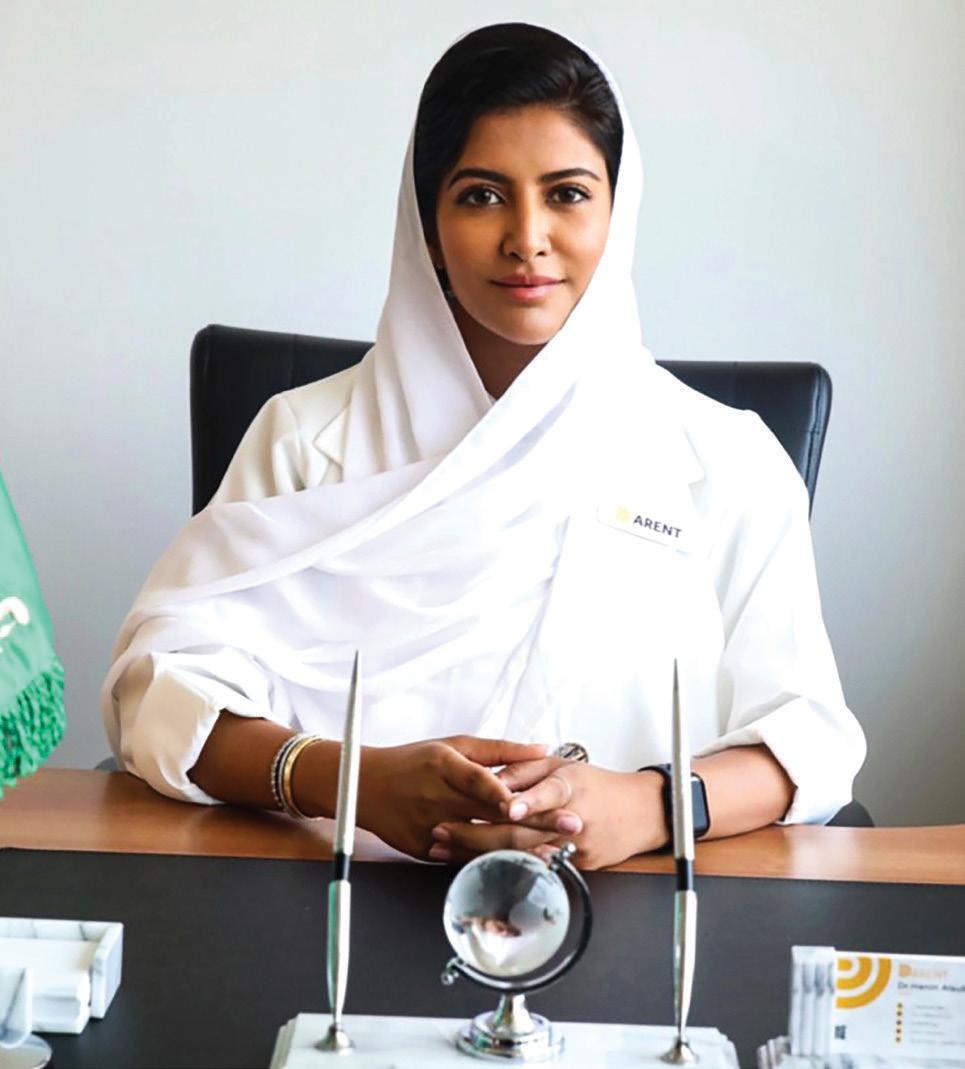

This was followed by multiple funding rounds that included family o ces such as Al Rajhi, Alswailem, Alhabib and other investors.
Over the past three years, Shgardi has expanded its operations to 80 cities, onboarded more than 10,000 partners, completed over five million orders and served over three million customers.
Shgardi’s scale-up has included the platform’s transformation into a super-app that caters to multiple verticals based on the Amazon Web Services platform. Shgardi is poised to be a major player as Saudi Arabia’s quick commerce industry is set to soar to four billion orders by 2026.
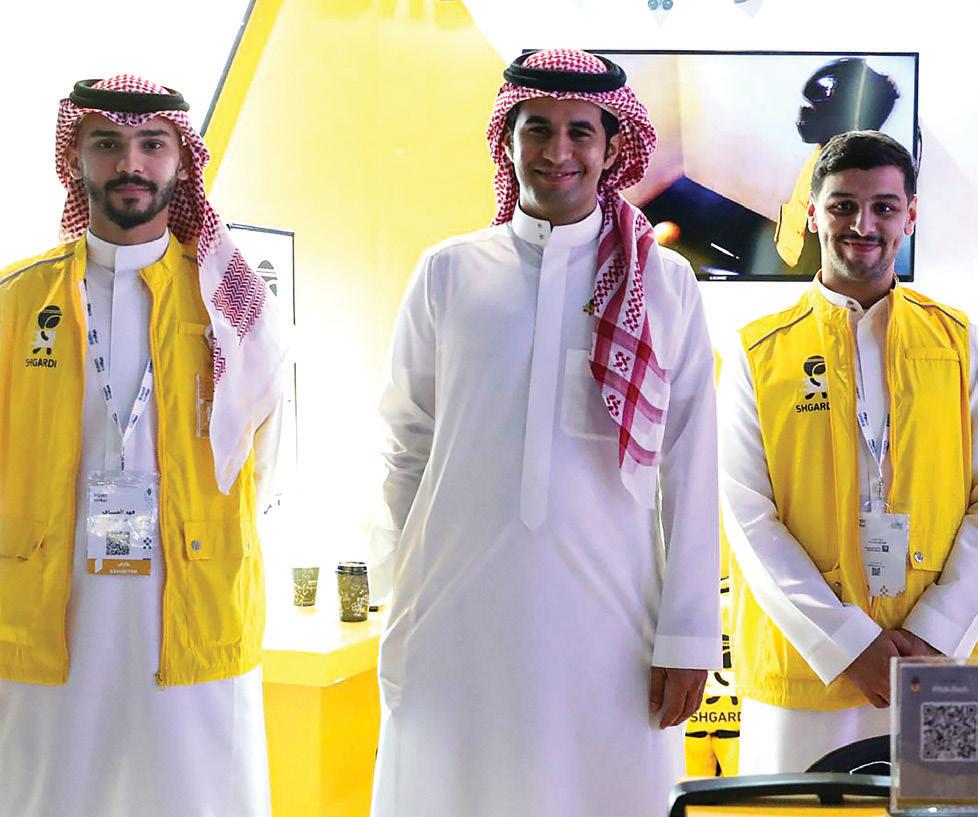
51
Pic: Supplied
Pic: Supplied
SHGARDI HAS COMPLETED OVER FIVE MILLION ORDERS AND SERVED OVER THREE MILLION CUSTOMERS
Darent seeks to contribute effectively to this sector by providing a unique travel experience for tourists which maintains the customs and traditions of the local community”
TRACKING VC INVESTMENT

A SHOWCASE OF VENTURE CAPITAL FUNDING TRENDS ACROSS THE MENA REGION IN H1 2023
FINTECH REMAINED THE TOP PICK for investors, despite recording a 51% YoY decline in transactions




$1,047M RAISED ACROSS 193 DEALS



MIDDLE EAST AND NORTH AFRICA RECORDED A 42% YOY RETREAT IN FUNDING AND 49% DECLINE IN TRANSACTIONS IN H1 2023, MATCHING GLOBAL AND US VENTURE TRENDS
UAE LED OTHER COUNTRIES BY TRANSACTIONS, WITH 60 DEALS CLOSED
WITH $446M RAISED IN H1 2023,
SAUDI ARABIA RANKED FIRST BY TOTAL FUNDING FOR THE FIRST TIME
IN TERMS OF FUNDING, Q2 2023 WAS THE LOWEST QUARTER FOR MENA STARTUPS SINCE Q3 2020. IT ALSO HAD THE LOWEST NUMBER OF DEALS SINCE Q2 2017
MOROCCO, WHICH WAS IN THE TOP 5 COUNTRIES BY FUNDING RAISED, SHOWED A YOY INCLINE OF 32% IN FUNDING LEVELS AND 25% RISE IN THE NUMBER OF TRANSACTIONS CLOSED
YoY: Year-over-Year
THE SHARPEST DECLINE WAS OBSERVED IN EGYPT, WHICH RAISED ONLY $7M ACROSS 8 DEALS IN Q2 2023
KEY POINTS TO NOTE
SAUDI ARABIA, EGYPT AND UAE SAW A 31% YOY RETREAT IN FUNDING IN H1 2023
01. H1 2023 saw increased interest from international investors in discovering the region
02. Investor focus is shifting away from late-stage investments towards startups raising $1m-$5m rounds, with a focus on companies that have proven product market fi t























Source: MAGNiTT MENA Venture Capital Report H1 2023

52 FEATURES / TOP 12 STARTUPS SPECIAL REPORT / IN NUMBERS













VOTING OPENS AUGUST 7 202 3 CONNECT WITH US #GBWeb3Awards
EVENT SPONSORSHIP AND GENERAL ENQUIRIES CONTACT manish.chopra@motivate.ae | mansi.khatwani@motivate.ae | sangeetha.js@motivate.ae VOTE HERE FIND OUT MORE GulfBusiness IN PARTNERSHIP WITH VOTE PROCESSING PARTNER PRESENTED BY
FOR
The SME Story
A dedicated hub for the regional startup and SME ecosystem


INTERVIEW
DRIVEN BY A CAUSE
Recycling, reading and wellbeing are the key concepts driving three innovative startups that aim to offer value to people and the environment
no players were catering to the growing demand for high-quality, refurbished electronics in the region.
Similarly, we were convinced that the region has the right fundamentals in terms of supply and demand for such a marketplace to be successful. In terms of supply, Dubai is the third largest hub in the world for refurbished electronics, with thousands of wholesalers and retailers, but most cater to the export market.
What are the major drivers behind your decision to start Revibe?
Our decision to start Revibe was driven by the motivation to build a business in an attractive market, with the right fundamentals, and at the same time, the desire to create a positive impact.
Having worked in the telecoms industry for 10 years, my co-founder, Abdessamad realised that there is a huge market for refurbished electronics in the Middle East. While many successful models have emerged in other geographies, including Backmarket, Rebeelo, Refurbed and Trocafone to name a few,

On the demand side, the population in the Middle East, especially the younger generation, is becoming more pricesensitive and is increasingly looking for more sustainable ways of consumption.
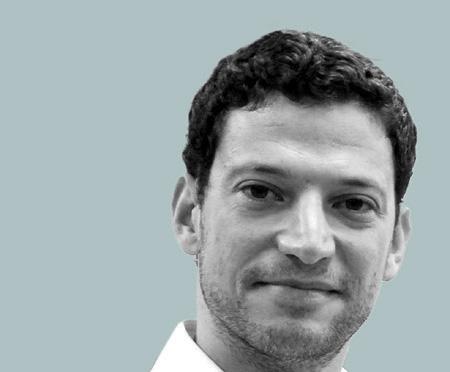
The other motivation behind the idea of Revibe was also the positive impact we can have on the planet. The consumption of refurbished electronics, as opposed to buying a new device, has numerous positive benefits for the environment.
For example, refurbished smartphones helped prevent contributing to the 53.6 million metric tonnes of global e-waste generated in 2019, according to the Global E-waste Monitor 2020 report.

A study by Tokyo-based United Nations University also revealed that recycling one million smartphones can
recover approximately 34kg gold, 350kg silver, and 15kg palladium – reducing the need for new raw material extraction.
Similarly, manufacturing a single smartphone can consume up to 240kg of water, emphasising the water conservation benefits of choosing refurbished devices, according to Stockholm International Water Institute.

Tell us about some of the biggest challenges Revibe faced in its initial stages. The biggest challenge we faced, in the beginning, was to be able to grow fast and onboard new suppliers while maintaining a high level of quality and keeping standards that were higher than the market at that time.
We were confronted with the typical chicken-and-egg scenario that is true of most early-stage marketplaces: you need more demand to be able to get more and better-quality suppliers, but you also need more suppliers to get that demand.

During the early stages, our involvement as co-founders was very heavy, on absolutely all the detailed aspects of the business – everything from tracking each order and sourcing materials to managing the quality check and delivery to customers.

54 FEATURES / THE SME STORY
AUG 23
Hamza Iraqui, co-founder, Revibe
How big is the refurbished electronics market in the Middle East, and what is driving interest?
The total addressable market for the refurbished electronics market is tremendous, but still needs to be unlocked. If we compare the penetration of refurbished electronics vs new and factor in the current market size of the overall electronics market, we estimate that the current addressable market for refurbished electronics in the MENA region is about $6bn – expected to grow at 12 per cent per annum in the next 10 years to reach $20bn.
Market reports are quite optimistic about the growth of this market as it is backed by solid consumer trends.
The first is sustainability. Even if it’s not yet a primary purchase driver here in the region, sustainability and ecoconscious consumption is growing in the minds of the MENA consumer – especially for the young generation. When we look at other geographies, where this trend is far more advanced, secondhand consumption is increasingly perceived by consumers as a primary way to reduce one’s carbon footprint.
The other big driver for this market is price sensitivity. In the current
THE CURRENT ADDRESSABLE MARKET FOR REFURBISHED ELECTRONICS IN THE MENA REGION IS ABOUT $6BN




Refurbished electronics perfectly fit that purpose as long as the seller is trusted and has good reviews.
As a result, in the next five years, we expect one out of every five electronic devices sold to be refurbished.

What is Revibe’s business model and how do you di erentiate from some of the other players in the market?























Revibe defines itself as a businessto-consumer (B2C) marketplace for refurbished electronics: that means that we onboard suppliers on our platform, select and filter the good quality ones and sell their products while keeping a commission for each sale.




economic context, amid high levels of inflation, everyone is looking for smart alternative ways of consuming, without compromising their lifestyle.
We endeavour to deliver the best of what is available in the refurbished market, we emulate to be like big players in the electronics industry such as Apple – that have established their brand around top-notch customer service. Our pricing is and will always be the primary decision factor for our consumers, so we will always strive to bring the best devices at the best price in the market.
The global venture capital market almost halved in the first six months of 2023. Tell us about your funding to date and how do you plan to raise funding for future growth. We have raised $2.3m to date, through a first funding round closed earlier this year. Resonance and Flat6labs led the round, with participation from Techmind, Financière Saint James and several Business Angels.
We are planning for a second funding round by the end of 2023. This would support our fast growth in our primary markets of Saudi Arabia and the UAE and allow us to strengthen our operations and customer care team. We will also develop our technology team and make investments in marketing. Our end goal is to extend to the broader MENA region and build a regional champion.
55
Pic: Getty Images
“ON THE DEMAND SIDE, THE POPULATION IN THE MIDDLE EAST, ESPECIALLY THE YOUNGER GENERATION, IS BECOMING MORE PRICE-SENSITIVE AND IS INCREASINGLY LOOKING FOR MORE SUSTAINABLE WAYS OF CONSUMPTION”
What inspired you to launch Reedz?
While studying in the US, I had the chance to read a lot of English literature. I extensively explored the non-fiction genre. However, upon my return to my home country – Tunisia, I realised that many Arabs had limited access to such valuable resources, o ten resulting from language barriers and the scarcity of translated work. As a matter of fact, Spain translates more books into Spanish each year than the entire Arab world has translated into Arabic since the ninth century.
This realisation was frustrating, but it drove me to find a solution to bridge this knowledge gap. This led to the creation of Reedz. Designed as a mobile app, Reedz o ers audiobook summaries of international bestsellers in Arabic. Through the app, users can discover the crux of the book in just 20 minutes.

Our users won’t have to wait for the original book to be translated into Arabic, which might take years if it will ever be translated. Instead, through our app, they can find an in-depth summary just 24 hours a ter the book’s initial release.




However, we are more than an app providing book summaries; we hope to be a gateway to empower individuals with the power of knowledge and foster a society that thrives on pursuing enlightenment.
What challenges did you face when you started Reedz?
Like all entrepreneurs, I have encountered my fair share of challenges on this journey. One of the most significant hurdles I faced was finding the right partner, which took several years. Building the product and fundraising is incredibly di cult without a cofounder/partner who possess the complementary skills






and shared vision. However, once I met Chehir Dhaouadi, things fell into place. We tackled the subsequent challenges associated with scaling and growing the business. We have built a strong foundation that enables us to navigate the complexities of entrepreneurship with confidence and resilience.
Tell us about your o ering, its USP and business model.
Our customers can use our app for free and access free content. They can also upgrade to the premium version for unlimited access to the entire library and additional premium features such as the o ine mode, and the sleep timer. We are working to leverage the new capabilities of large language models to automate our content creation process, allowing us to o er much more content at a fraction of the cost. We also have upcoming exciting features for our users where they will experience the power of AI models to deliver quality personalised content.
56 FEATURES / THE SME STORY
“OUR CUSTOMERS CAN USE OUR APP FOR FREE AND ACCESS FREE CONTENT. THEY CAN ALSO UPGRADE TO THE PREMIUM VERSION FOR UNLIMITED ACCESS TO THE ENTIRE LIBRARY AND ADDITIONAL PREMIUM FEATURES SUCH AS THE OFFLINE MODE, AND THE SLEEP TIMER”
Pic: Getty Images
Haithem Kchaou, co-founder, Reedz
THROUGH OUR APP, THEY CAN FIND AN IN-DEPTH SUMMARY JUST 24 HOURS AFTER THE BOOK’S INITIAL RELEASE


How do you plan to raise funds to support the business?

Reedz has secured backing from Flat6Labs Tunis. Currently, we are in the process of raising a pre-seed round, aiming to secure $700k in funding. These funds will be strategically allocated to enhance our product’s capabilities, particularly bolstering our computing power for advanced AI algorithms.
What are your expansion plans?
We launched Reedz in Tunisia, strategically choosing it as a test market. Over the course of our first year, we refined
our product based on user feedback. The response was overwhelmingly positive, with over 500 favourable reviews. Empowered by this early success, we identified an opportunity to expand our reach to the GCC market. Armed with the insights gained from our Tunisian operations, we are now poised to make a meaningful impact in the region.
How has MBRIF helped you with your business?

We had the privilege of being part of the Mohammed Bin Rashid Innovation Fund (MBRIF) incubation programme
in the UAE. This opportunity proved to be a game-changer for our startup as it provided us with unparalleled support and resources to expand our presence in the UAE market. Through the programme, we were connected to a network of industry experts, mentors, and investors who not only believed in our vision but also provided guidance and mentorship along the way. The MBRIF programme accelerated our growth and gave us the visibility we needed to showcase our solution to a wider audience. We are excited to continue our journey, leveraging the knowledge and connections gained through MBRIF to make a lasting impact in the UAE and beyond.
Dennis Yudchitz, CEO and founder, Lifemost
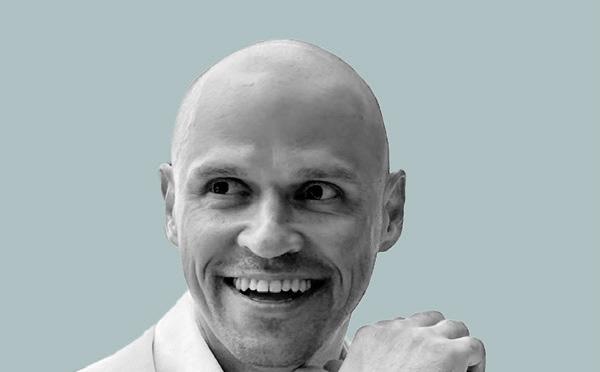
What inspired you to start this business?
For many years of my life, I have combined business and sports, engaging in running, swimming and triathlons. Each time, I wanted to achieve more ambitious goals. However, chasing medals and awards became tiring and led to a loss of focus. It felt as if athletes retire from professional sports a ter years of just chasing new victories and records. Similarly, business executives are driven by a desire for recognition. The period of the pandemic became a pause in this never-ending “marathon”. It made me realise that true fulfillment and wellbeing do not rely on only external validation but also in internal stimulus.
I discovered that living a satisfying life and feeling content with myself does not require the pursuit of achievements. It is important to find a balance between work, personal life, and taking care of mental and physical health. This realisation led me to the idea of creating Lifemost, a solution for e ective wellbeing programmes.
The main pillars of human health consist of five key elements: medicine, exercise, sleep, nutrition and emotional-mental wellbeing. Medicine and doctors play a role in approximately 20 per cent of health needs, that is why relying only on pharmacology and pills is not the only solution. It is better to prioritise wellness practices and adopt a healthy lifestyle.
As a scientist specialising in biotechnology, I have a comprehensive understanding of medicine. With a background in both medicine and the wellness industry, I have developed Lifemost, which combines the care of physical and mental health. Our product provides three out of the five essential wellbeing categories: exercises, nutrition, sleep and emotional health.

What are some of the challenges you faced when starting o ?
WE SHOW THAT TECHNOLOGY CAN MAKE THE PROCESSES EASY, SIMILAR TO ORDERING A TAXI THROUGH AN APP OR SELECTING AN EVENING TV-SERIES ON NETFLIX
Firstly, the main challenge our company must overcome is the perception among companies’ decision-makers that wellness programmes are too complicated, expensive, and lack transparent pricing. There is a prejudice that wellbeing programme providers o er unnecessary activities to increase prices. Our mission is to change this point of view and explain that a wellness programme does not necessarily involves di cult choices or over-pricing. We show that technology can make the processes easy, similar to ordering a taxi through an app or selecting an evening TV-series on Netflix. With the help of Lifemost technology, we make wellbeing services transparent, convenient and a ordable. Another challenge is to find companies searching for wellness programmes and taking care of employees’ physical
57
and mental health. Our main focus is on collaborating with companies that understand the benefits of corporate wellbeing programmes. Usually, we meet companies that want to run such programmes but are afraid of their diculties. To overcome this challenge, we are searching for interested champions within the company’s team who lobby for these wellness initiatives.
Our company integrates technology to address a user engagement challenge in wellbeing programmes. Usually, these programmes rely on active initiators who encourage the team to participate in activities, for instance, group football or yoga sessions. However, this approach excludes team members who are not interested in particular sports, which lead to lack of engagement. When only 15 out of 150 employees participate in football, the programme cannot be engaging.
The main point of wellness programmes is to let every employee choose activities aligned with their personal goals. It is crucial for sports and wellness initiatives to fulfil the needs of all individuals and understand each employees’ requests. This is where technology plays an important role: with the help of artificial intelligence (AI), our platform can overcome the challenge of engagement and personalisation.



By using AI, we create individualised programmes based on employees’ goals and preferences.


























Give us an overview of your funding and your plan to utilise it.

Lifemost successfully secured $650,000 in a pre-seed funding round, led by

prominent angel investors from the MENA region. The raised funds will be used for advancing product development, expanding marketing e orts, and exploring potential partnerships in the MENA market.
The first phase of future platform development includes the integration of AI into our app for personalised recommendations of activities to its users.


Using natural language, AI will talk with app users, providing personalised programmes based on their specific requests and individual goals.
These programmes will be based on a wide range of preferences from the desired number of visitors in the fitness room to class availability during both daytime and nighttime hours. The AI solution will prioritise a look-alike audience of our users, selecting programmes that align with the interests of individuals similar to their friends or colleagues. As for new potential partnerships, we aim to onboard 300 service providers in Dubai and Abu Dhabi by the end of this year.
Our company’s next funding step is to secure $1.5m to establish ourselves as the market leader in corporate wellbeing solutions in the MENA and APAC regions.
58 FEATURES / THE SME STORY
“OUR COMPANY INTEGRATES TECHNOLOGY TO ADDRESS A USER ENGAGEMENT CHALLENGE IN WELLBEING PROGRAMMES. USUALLY, THESE PROGRAMMES RELY ON ACTIVE INITIATORS WHO ENCOURAGE THE TEAM TO PARTICIPATE IN ACTIVITIES”
Pics: Supplied
Lifestyle 23
Artistic appeal
We look at how international shoe brand Golden Goose is extending the life and value of sneakers and accessories p.60
 Aston Martin Valour
Aston Martin Valour
 Carolina
Carolina
The launch of the Valour marks Aston Martin’s 110th anniversary. Its bespoke 6-speed manual transmission is uniquely mated to a 5.2 litre Twin Turbo V12 for maximum driver engagement and timeless classic appeal. The styling reimagines the iconic 70s and 80s V8 Vantage and ‘Muncher’ Le Mans racer. Production is limited to 110 units globally.
gulfbusiness.com August 2023 59
AUG
“The UAE has become a hub of speciality coffee, with the young generation invested in learning about coffee, and opening specialty coffee shops”
Vergnano, CEO, Caffè Vergnano
ADDING AN ARTISANAL TOUCH

gulfbusiness.com 60 August 2023 Lifestyle / Fashion
ITALIAN FOOTWEAR BRAND GOLDEN GOOSE HAS INTRODUCED IN-STORE COBBLERS TO ENHANCE ITS APPEAL TO SNEAKERHEADS
Golden Goose, the upstart maker of $500 sneakers, is turning back the clock to keep pace with its trendy Generation Z fans, staffing its stores with trained cobblers to help meet demand for products that won’t end up in a landfill.
The Italian brand, a favourite of Selena Gomez and Taylor Swift, has long insisted that its customisable, star-emblazoned sneakers only improve with age. But adding repair services performed by cobblers – who can mend and revive shoes made by Golden Goose or anyone else – is helping the company bring the concept to the next level, chief executive officer Silvio Campara said in an interview.
“At a time of standardised production, we want to engage with the client in the creative process and encourage loyalty,” said Campara, who helped reposition a small Venetian fashion firm into a vintage-inspired brand whose 2022 sales
grew 30 per cent to about EUR500m ($548m). “We also want to show them the value of repairing old shoes instead of throwing them away.”
THE NEXT STEP
Golden Goose, which is controlled by Permira Holdings, is already known for its personalised sneakers, with company designers who help add touches like embroidery or tattoo-style graphics. Shoe repair by qualified cobblers is a newer service being rolled out at selected stores across the world.
It could make a good fit with the company’s core demographic: more than 80 per cent of Golden Goose buyers are Millenials or from Gen Z, Campara said, and they put a premium on breaking out of the throwaway-product cycle.
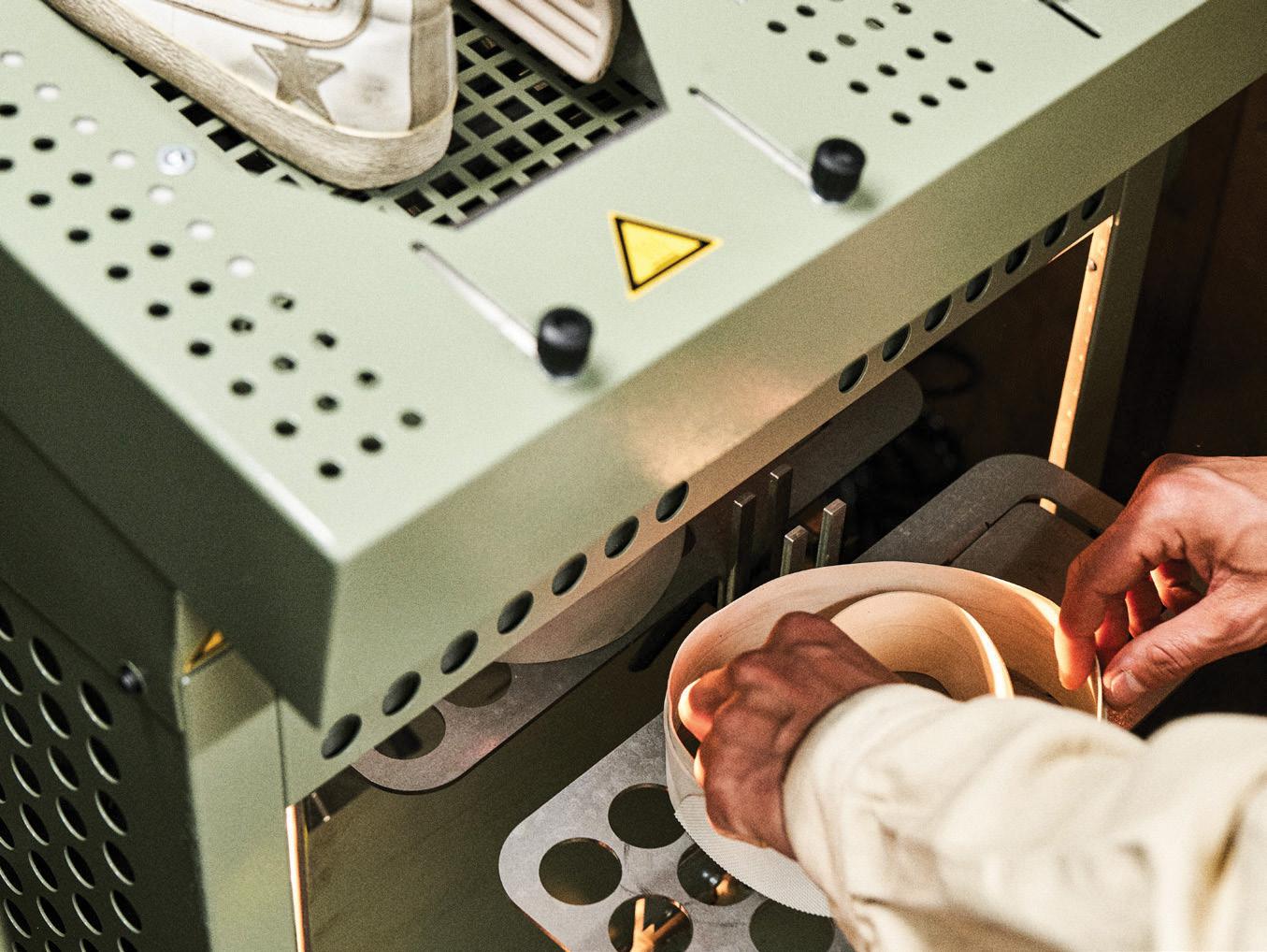
Tailoring and repair, now available at Golden Goose locations including Milan, New York and Dubai, extends sneaker lifecycles and reduces environmental impact,


gulfbusiness.com August 2023 61
Pics: Golden Goose
the CEO said. The goal is to have about 70 cobblers at some 10 key stores and at a Golden Goose repair hub near Venice.
For cobbler Marco Zanin, who’s worked at Golden Goose since 2019, shoe repair is second nature. The 36-year-old Venetian said he “grew up surrounded by shoes – when I was a child I played next to my aunt who crafted vamps,” as upper portions are called.
And while old-world artisans might seem to be a strange fit in a fashion setting

gulfbusiness.com 62 August 2023
“And while old-world artisans might seem to be a strange fit in a fashion setting like downtown Milan, where Zanin works today, diehard ‘sneakerheads’ have proved enthusiastic about the cobbler programme”
WITH OVER TWO THIRDS OF HIS WORKFORCE UNDER 32, CAMPARA HAS MORE INSIGHT INTO YOUNG BUYERS THAN MANY COMPETITORS

like downtown Milan, where Zanin works today, diehard ‘sneakerheads’ have proved enthusiastic about the cobbler programme, he said.
“The kids who come in are curious, they want to know everything about the shoes and how to master working on them,” said Zanin, who studied urban planning and worked as a DJ before joining Golden Goose. While the brand’s young buyers have long used sneakers as a sort of “blank slate to add on details,” the cobbler programme adds the possibility to “rebuild, rework and refurbish them,” he said.
Innovations directed at young buyers are something of an obsession for Golden Goose, and at 43 years old, the sneaker maker’s CEO exudes a stylish, youthful demeanour that suggests a deep insight into the casual fashion world.
But Campara says he’s not taking chances in misinterpreting the rapidly changing tastes of his core demographic. He set up a “Gen. Z board” at the company to delve into what customers are thinking, and proudly notes that, with over two thirds of his workforce under 32, he has more insight into young buyers than many competitors.
Golden Goose has already passed through the hands of three global investment groups. Carlyle Group bought the company from Ergon Capital Partners SA in 2017, sparking its expansion into the US and China. Three years later, Permira bought Carlyle’s majority stake.
The current fashion landscape su ers from “a lack of artisan manpower,” Campara said. To stand out in a crowded field, he wants to bring on board people who are “not simply workmen but artisans, who we are training ourselves for this purpose.” Bloomberg
BUILDING A RESPONSIBLE FUTURE

In 2022, Golden Goose unveiled its first co-action format: the Forward Store in Milan.

The brand opened its first Forward Store in the Middle East with its initial o set in Dubai’s Mall of the Emirates in December last year.
The Forward Stores give clients the chance to embark on a memorable sustainable journey revolving around four pillars: Repair, Remake, Resell and Recycle.
Golden Goose’s ‘Calzoleria’ and the ‘Sartoria’ services come under the Repair pillar. It features laboratories where anyone can bring sneaker products and garments from any brand for services of cleaning and sanitisation, repairs and replacements, restoration, and refurbishment, lengthening the product life cycle; hence, reducing the impact on the planet.
Remake is a unique personalisation experience that gives customers the chance to conceive their one-of-akind items together with the brand’s Dream Makers, picking from a wide range of ornaments and finishings to apply on their new or pre-owned products.

Clients can also choose among di erent treatments such as distressing, embroidery or handwritten messages, and hand painted drawings, turning them into unique one-of-a-kind cra t. For sneakers, clients can tie dye, apply multi-foxing on the sole, and have their favourite messages or drawings either tattooed or airbrushed on them.
FOR SNEAKERS, CLIENTS CAN TIE DYE, APPLY MULTIFOXING ON THE SOLE, AND HAVE THEIR FAVOURITE MESSAGES OR DRAWINGS EITHER TATTOOED OR AIRBRUSHED ON THEM
The Forward Store also o ers a made-to-measure service for suits, dresses and leather jackets, and a bespoke programme for sneakers. For the made-to-measure garments, clients can choose among di erent fits, materials, linings, and buttons that suit their personality, and then add a final personalisation to the garments.
For sneakers, clients will work directly with the cobbler to create from scratch a pair with unlimited possibilities.
Golden Goose has also installed two recycling baskets where each visitor can dispose of any old products that they no longer want, making sure that these are put back to use.

gulfbusiness.com August 2023 63
Lifestyle / Fashion
Pics: Golden Goose
BEANS, BREWS AND BLENDS

CAROLINA VERGNANO, CEO OF THE PREMIUM ITALIAN COFFEE BRAND CAFFÈ VERGNANO, SHARES WHAT GOES INTO MAKING AN AUTHENTIC ESPRESSO, HOW KEY TRENDS ARE IMPACTING TODAY’S COFFEE CULTURE AND WHY SHE IS PASSIONATE ABOUT TEACHING PEOPLE THE ART OF MAKING GREAT COFFEE




 BY NEESHA SALIAN
BY NEESHA SALIAN

gulfbusiness.com 64 August 2023 Lifestyle / Co ee Culture
How has coffee culture evolved over time globally?
Coffee culture has evolved significantly over the years, undergoing various shifts in consumer preferences, industry practices and societal trends.
In recent years, there has been a growing appreciation for specialty coffee. Consumers are seeking higher-quality beans, exploring different origins and flavour profiles, and showing interest in the craft of coffee brewing. This has led to the emergence of specialty coffee shops, microroasters, and a focus on traceability and sustainability.

Coffee enthusiasts have become more knowledgeable and curious about different brewing methods. There is a greater emphasis on precision and experimentation in brewing, with methods like pour-over, AeroPress and cold brew gaining popularity. This trend highlights the nuanced flavours and characteristics of different coffee beans.

Coffee is no longer just a beverage; it has evolved into an experience. Cafes and coffee shops have transformed into places where people gather to socialise, work, or relax. The ambiance, aesthetics and quality of service have become integral to the coffee experience, with a focus on creating inviting spaces for customers.
Latte art and creative coffee presentations have become a common sight in coffee shops. Skilled baristas showcase their talents by creating intricate designs
on the surface of espresso-based drinks, elevating the visual appeal of coffee and adding an artistic element to the culture.
The digital age has also influenced coffee culture in multiple ways. Social media platforms have become platforms for sharing coffee-related content, such as latte art photos, brewing techniques, and coffee tasting experiences.
Online communities and forums allow coffee enthusiasts to connect, learn, and discuss their passion for coffee. With a

gulfbusiness.com August 2023 65 Pics: Supplied
“The digital age has also influenced coffee culture in multiple ways. Social media platforms have become platforms for sharing coffee-related content, such as latte art photos, brewing techniques, and coffee tasting experiences”
Carolina Vergnano
growing emphasis on personal health and wellness, coffee culture has responded with alternative options and adaptations. There is an increased demand for plant-based milk alternatives, such as almond milk and oat milk, as well as functional ingredients including adaptogens, collagen and superfoods in coffee beverages.
There is a greater focus on coffee education and appreciation, both among professionals and consumers. Coffee academies, workshops, and certifications have become more prevalent, offering opportunities to learn about coffee origins, brewing techniques, cupping, and roasting. Consumers have become more discerning, seeking information about the beans’ sourcing and production methods.
Coffee culture has also transcended geographical boundaries. As coffee businesses expand internationally, different regional coffee traditions and brewing techniques are shared and celebrated. This has led to a greater appreciation for the diverse coffee cultures around the world.
What are the skills that a good barista should have to prepare an authentic espresso?
Caffè Vergnano believes that training is the most important process to become wellrounded professionals in the coffee industry. Coffee is an ancient and precious ritual that lives in time, in people and in places and a skilled barista’s hand is essential for a quality espresso.
This was the inspiration behind Accademia Vergnano, which is a Specialty Coffee Association-certified training centre. It’s a place to acquire all the skills a barista needs to grow a business.
Our team of expert trainers is bringing talents closer to raw material while improving their skills with professional
coffee grinders and machines with different characteristics.
We provide specialised academic courses and training programmes designed to impart an all-round knowledge of coffee – the secrets and professionalism needed to deliver this invigorating beverage to the world. We’re dedicated to professionals in search of excellence, to those who want to make every espresso a true masterpiece.
Why did you choose to set up an academic centre in the UAE?
There are several Accademia Vergnano locations in Italy and around the world. The academy combines the same passion and expertise that have characterised the company for over 140 years; it is now guiding the future of coffee culture.
The UAE is one of the most promising markets for Caffè Vergnano. We are already serving a premium customer such as Jumeirah Hotels and expanding rapidly in the hospitality sector with our authentic Italian espresso experience.
Training is one fundamental components of a top-notch coffee offering. Being able to offer excellent training is key to both retaining current customers and attracting new ones.
For this reason, also in the UAE, you can find spaces that combine theoretical lessons and practical exercises, always guided by certified trainers, specialised in qualified and tailor-made training for baristas.
The UAE has experienced a significant growth in its coffee culture, with a growing number of specialty coffee shops and an increasing demand for high-quality coffee. Opening a coffee academy in a country with a thriving coffee culture has been an advantageous, as it’s a receptive market for coffee education and training.
Additionally the UAE serves as a central hub for both regional and international travel. Its geographical location makes it easily accessible to coffee professionals and enthusiasts from various parts of the world. This can enhance the academy’s reach and attracts participants from different backgrounds and nationalities.
What are the characteristics of coffee drinkers in the UAE and how is the coffee ritual in the Arab world different from other countries?
The coffee culture in the UAE is vibrant and rapidly growing, also it is incredibly deep, going beyond the classic espresso and cappuccino. Over the past decade, there has been a significant rise in the popularity of coffee and the establishment of numerous coffee shops and specialty coffee houses throughout the country. As a consequence, the UAE has become a hub of speciality coffee, with the young generation invested in learning about coffee, and opening specialty coffee shops. Today, there are more than 100 local roasters based in Dubai.
“Coffee enthusiasts have become more knowledgeable and curious about different brewing methods. There is a greater emphasis on precision and experimentation in brewing, with methods like pourover, AeroPress and cold brew gaining popularity. This trend highlights the nuanced flavours and characteristics of different coffee beans”
gulfbusiness.com 66 August 2023 Lifestyle / Coffee Culture
ACCADEMIA VERGNANO COMBINES THE SAME PASSION AND EXPERTISE THAT HAVE CHARACTERISED THE COMPANY FOR OVER 140 YEARS; IT IS NOW GUIDING THE FUTURE OF COFFEE CULTURE
The UAE has embraced global coffee trends and has developed its unique coffee scene, catering to the diverse tastes and preferences of its multicultural population. Coffee plays an essential role in Emirati social life, where it is often enjoyed as a part of traditional hospitality.

In addition the UAE has embraced a variety of international coffee styles and brewing methods. You can find a wide range of coffee options, including espresso-based drinks, pour-over coffees, French press, cold brew, and more. Specialty coffee shops have gained popularity, focusing on sourcing high-quality beans from different regions worldwide, roasting them locally, and providing a unique and artisanal coffee experience.
The UAE hosts various coffee events and competitions, showcasing the talent and skills of baristas and coffee professionals. These events include barista championship latte art competitions, and coffee
festivals, attracting both coffee enthusiasts and professionals from around the world.
Overall, the coffee culture in the UAE has flourished, blending traditional Arabic coffee customs with a modern and diverse coffee scene. It has become a significant part of the social fabric, offering a wide range of coffee options, welcoming spaces, and opportunities to explore and appreciate the art of coffee.
How does the company select its suppliers?
The secret of our quality blends lies in the thorough selection of the best coffee producers in the world. The finest coffee beans are selected and purchased directly in the places of origin and perfection is achieved by meticulous control of every batch of coffee.
The blends are the result of years of experience. Since coffee is a natural product, the
challenge is to keep its signature taste uniform over time. A mission that is pursued with the same passion, enthusiasm and innovative spirit by the fourth generation of the family.
At the stage of production, the choice of high-quality blends is combined with experience in coffee processing, which still takes place in the traditional way, through slow roasting. The slow roasting cycles are carried out with different cooking times and temperatures depending on the origin, allowing for the exact degree of roasting.
What are the key trends influencing the coffee industry?
Increasingly, consumers are concerned about the environmental and social impact of their coffee consumption. There has been a growing emphasis on sustainable and ethical sourcing practices, such as fair trade, organic farming, and supporting farmers’ livelihoods.
Third wave coffee represents a movement where coffee is viewed as an artisanal product, similar to grape and barley-based beverages. It emphasises the traceability of beans, precise brewing methods, and a focus on the unique flavours and characteristics of different coffee origins.
Technology has played a role in enhancing the coffee experience, from automated brewing machines to smartphone-controlled coffee makers. Additionally, coffee-related apps and online platforms have emerged, facilitating coffee education, bean selection, and brewing techniques.
Coffee tourism has gained popularity as consumers show interest in visiting coffee-growing regions to learn about the production process, experience coffee tastings, and engage with local communities. This trend promotes coffee as a cultural and educational experience.
gulfbusiness.com August 2023 67
THE COFFEE INDUSTRY HAS WITNESSED A FOCUS ON HEALTH AND WELLNESS, WITH AN INCREASED INTEREST IN FUNCTIONAL INGREDIENTS LIKE ADAPTOGENS, SUPERFOODS AND COLLAGEN
BY HANNAH ELLIOTT



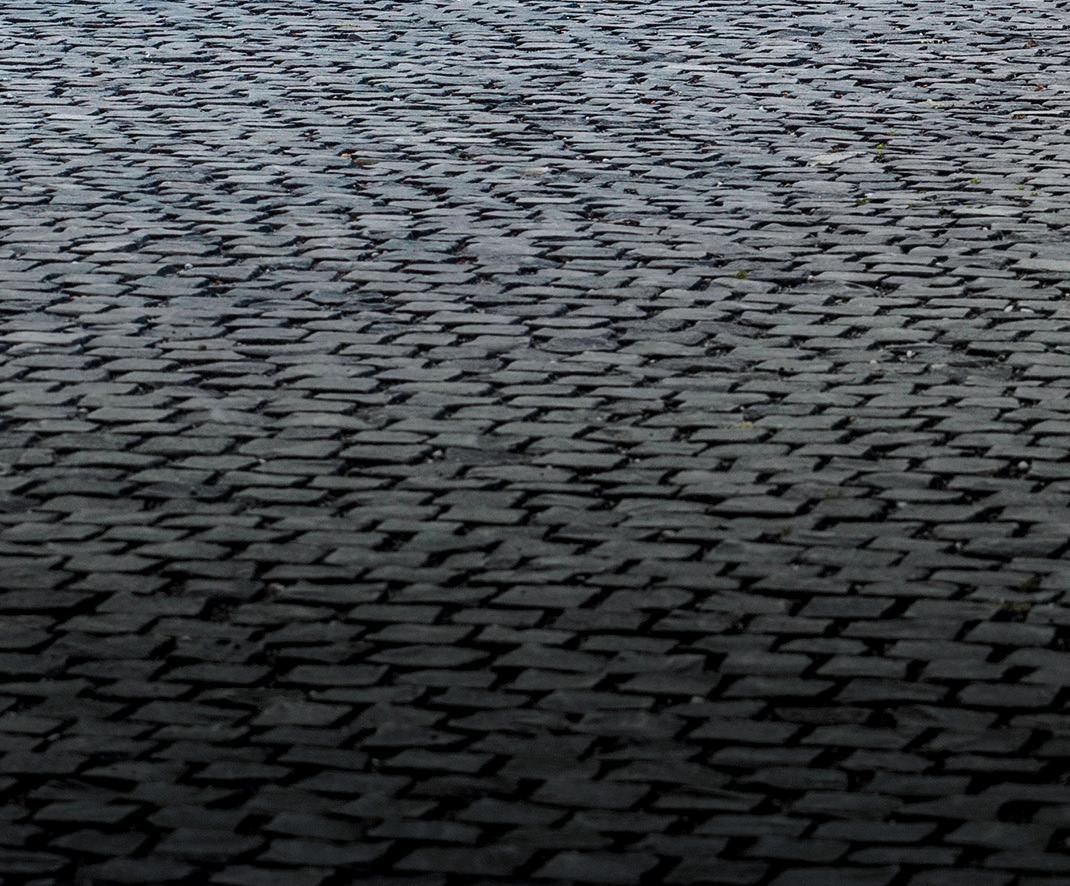

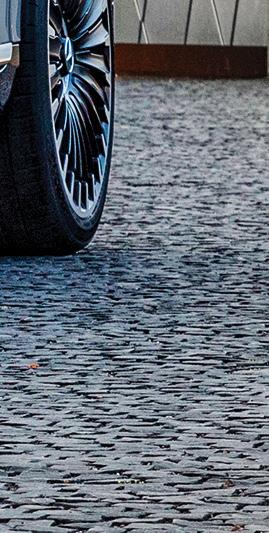

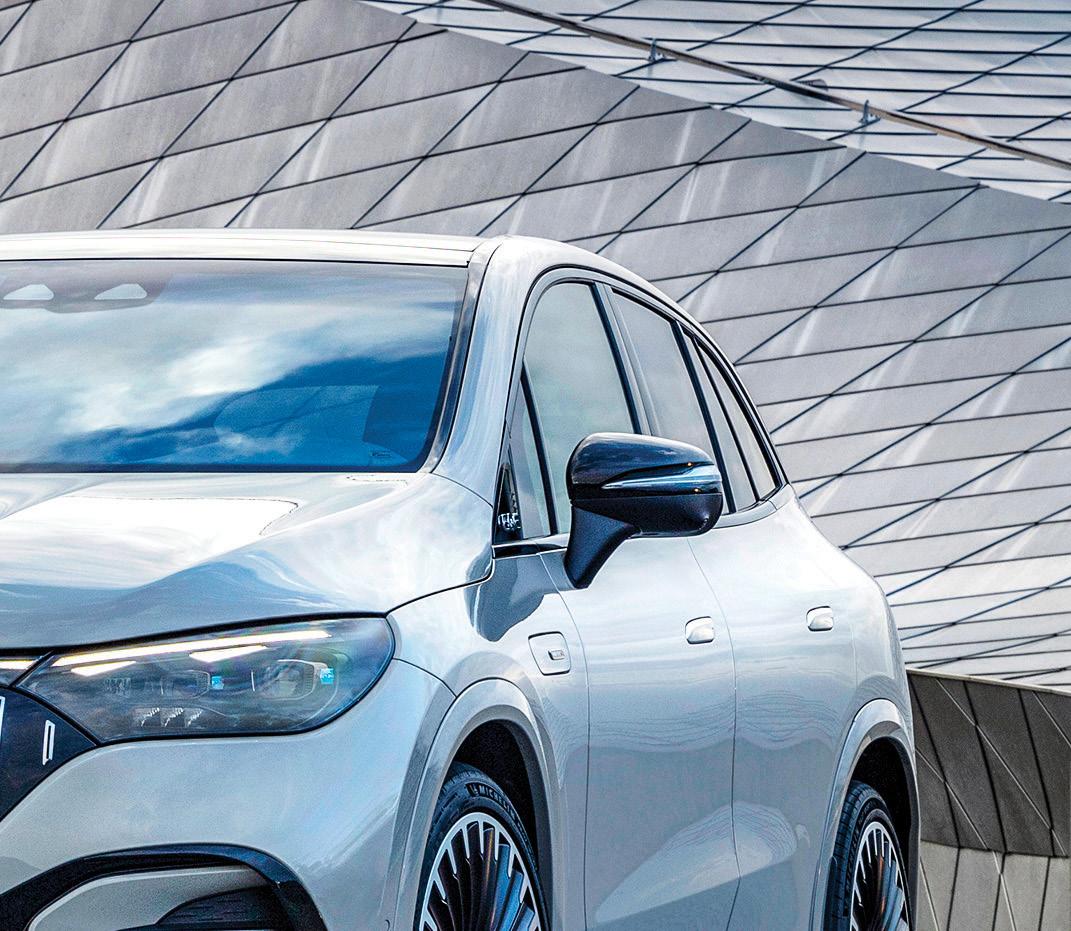

gulfbusiness.com 68 August 2023 Lifestyle / Auto Review
D (E) LUXE WHY THE 2024 MERCEDES-AMG EQE MARKS A GOLDEN AGE OF PREMIUM EVs
TRULY
Mercedes-AMG unveiled its EQS and EQE electric sedans in 2021 and 2022, respectively.
Now we have AMG’s first electric SUV, the 2024 EQE, which begins deliveries this autumn. It comes with all-wheel drive, seating for five and two electric motors providing 677 horsepower – more than most sports cars. Pricing has yet to be announced.

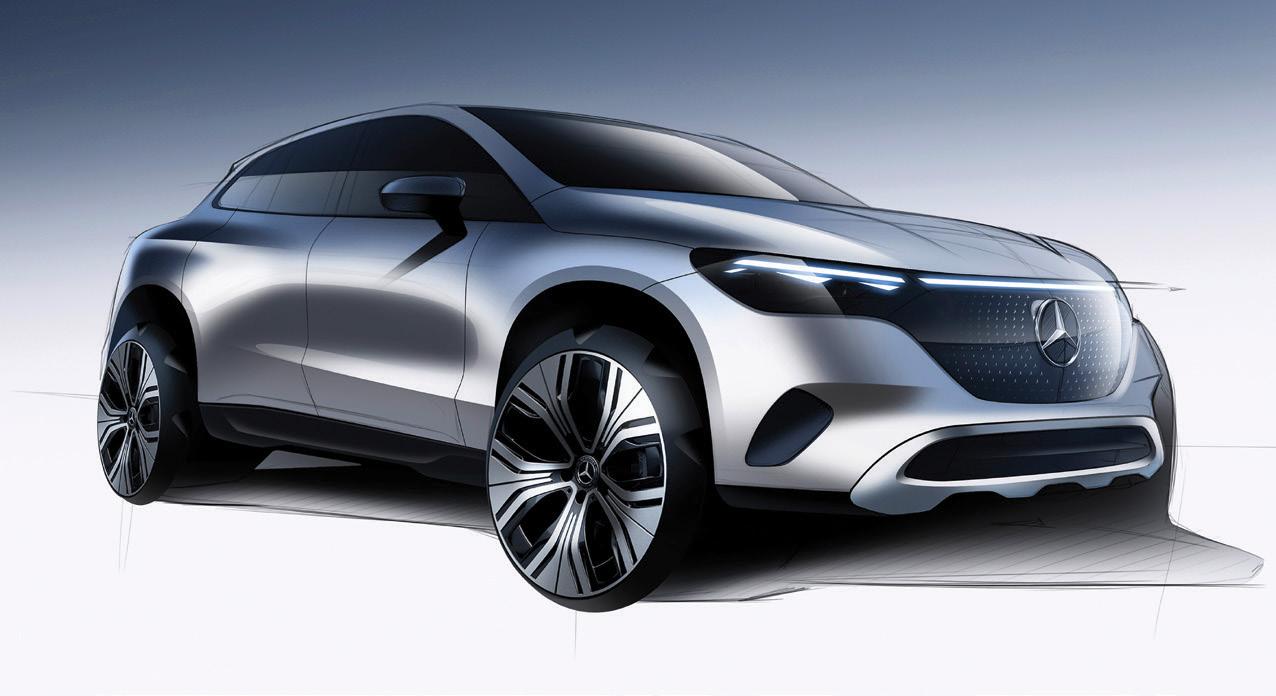
Its body style looks like most other midsize luxury SUVs: smoothed like an innocuous jelly bean. But with high-end, state-of-the-art technologies under the hood and in the cabin, the EQE spells the dawn of the golden age of electric vehicles.
THE LOOKS OF IT
Mercedes-Benz is in the midst of the most exciting time in its 97-year history. It’s
making vans with interiors like yachts and $200,000 stealth-wealth sedans. It will soon be adding ChatGPT to its infotainment system and will become the first German automaker to adopt Tesla’s charging plug, allowing future Mercedes owners to use Tesla’s Supercharger network. (Mercedes drivers will gain access to more than 12,000 of the chargers across North America beginning in 2024.) And it’s released some of the most inspiring concept cars in recent memory.
When I first saw it, the EQE looked like it would fall pretty far down on that list of cool things. Every edge that could’ve made it look dynamic has instead been patted down like an indeterminate mound of so t butter. Remove the oblong grille stamped with vertical struts, the oversize Mercedes three-pointed star plastered in the middle of it and the AMG emblem on the hood,
and the EQE would be di cult to place.
But then I got inside. I drove it all over Los Angeles like a busy parent running late to soccer practice. A ter a week, I may have fallen in love. Not a passionate or obsessive love, but a comfortable love. Not a fling. That’s why I say the EQE signifies the start of the halcyon days for EVs. Electric SUVs in particular present the biggest potential market for EV makers. Last year more than half of the 25 bestselling vehicles in the US were SUVs. But until recently, drivers who wanted an electric version faced o erings from tech startups whose vehicles lacked the refinement, quality and consistency required in anything priced and sold as “luxury”–and they o ten were positioned as such. (Others, such as the Ford Mustang MachE, Hyundai Ioniq 5 and Volkswagen ID.4, have received positive reviews, though
gulfbusiness.com August 2023 69 Pics: Mercedes-AMG
“It will soon be adding ChatGPT to its infotainment system and will become the first German automaker to adopt Tesla’s charging plug, allowing future Mercedes owners to use Tesla’s Supercharger network”
those aren’t luxury SUVs.) Both Audi and BMW already produced a decent electric SUV in the past year. Jaguar has been making its own since 2018. Mercedes-Benz introduced the electric EQB in 2021. Now that Mercedes-AMG has added the EQE, we’ve reached a happy grouping. The luxury electric SUV segment is blossoming.
TECH DONE RIGHT
The best thing about the interior of the EQE – and about the whole vehicle, really – is the big control center, which Mercedes calls the MBUX Hyperscreen. I call it the best infotainment system currently on the market.

It looks like a single curved screen that’s embedded in the dashboard and extends from A-pillar to A-pillar inside the car, but it’s actually three screens under a single glass cover that makes them look like one.

I loved the magic screen’s ability to deflect glare from the sun and resist prints after repeated sticky-finger jabs onto its surface. Those points alone set it on a level superior to most.
I used it to listen to news as I drove to the newsroom. I ran through its multiple massaging and comfort settings on my way home. I searched its precise, intuitive maps to get to Musso & Frank on Hollywood
Boulevard and a bespoke leather atelier on Melrose. Those functions, of course, aren’t new to Mercedes. But now, thanks to new software, they’re always easily accessible, adapted to my preferences and set in the top screen level of the computer rather than buried behind lesser-used functions. That so-called zero layer – preferred icons upfront — meant I never had to flip through multiple screens to find the task I wanted. Bluetooth synced instantly (even the passenger has a screen to control the car’s creature comforts as well). There’s something delightful in making hands-free phone calls while navigating the tonier
gulfbusiness.com 70 August 2023 Lifestyle / Auto Review
“The best thing about the interior of the EQE – and about the whole vehicle, really – is the big control centre, which Mercedes calls the MBUX Hyperscreen. I call it the best infotainment system currently on the market”
corners of Beverly Hills. I think it’s the only time I don’t mind talking on the phone.
BEHIND THE STEERING WHEEL
The steering wheel is another highlight. As with the Mercedes-AMG S63 Hybrid, if you tend to eschew new technology, you may think it’s gone overboard with buttons. But give it a chance. I had plenty of time to contemplate it because, as you know, “driving in LA” is code for “sitting in traffic.”
If you ever want some quality time to sit motionless, head east on Santa Monica Boulevard at rush hour. You’ll have plenty of opportunities to sit still. Or kill
time exploring the functions in your car’s tech systems.

Wrapped in Nappa leather and microfibre with a flattened bottom and a perforated grip, the wheel has aluminum paddles for selecting power recuperation levels. Menus on the left side can be programmed with roughly 15 information and setting options. This had the obvious benefit of allowing me to control pretty much everything in the car without moving my hands from 9 and 3.
The EQE has five drive modes, which can be selected using steering wheel buttons. Sport and SportPlus were the loudest, though I used them more for their extra
oomph as I pressed the accelerator than for their enhanced synthetic “engine” note. (You can use either steering wheel buttons or the central display to select sound settings including “balanced,” “sport,” and “powerful.”)
The EQE boasts oodles of torque and power enough to hit 60 mph in 3.4 seconds and a top speed of 149 mph. It has active rear-axle steering that enhances handling and allows a better turning radius; ridestabilisation systems minimise body roll and aid precision when turning corners. So it feels nimble for its size and weight. It surprised me how quickly it would drop all other traffic as I accelerated up highway on-ramps. But in general it lacks any sense of driving personality; I’ve yet to encounter an EV that doesn’t. Its electromechanical power steering is instantaneously responsive but forfeits a tangible connection with the car; even the click of the direction indicators is simulated, not the result of an actual mechanical act. The EQE gives fast, if soulless, compliance.
Which doesn’t bother me at all. A family SUV should be compliant. Who cares if it doesn’t make me feel obsessed every time I get behind the wheel? That’s what sports cars are for. The EQE delivers exactly what it promises: smooth, strong power, highquality creature comforts and the best infotainment in its category. It’s the best we’ve seen yet in a luxury electric SUV. Let the good times roll.
Bloomberg MENUS ON THE LEFT SIDE CAN BE PROGRAMMED WITH ROUGHLY 15 INFORMATION AND SETTING OPTIONS RIDE-STABILISATION SYSTEMS MINIMISE BODY ROLL AND AID PRECISION WHEN TURNING CORNER THE EQE BOASTS OODLES OF TORQUE AND POWER ENOUGH TO HIT 60 MPH IN 3.4 SECONDS AND A TOP SPEED OF 149 MPH gulfbusiness.com August 2023 71
SUPER THE
SIX





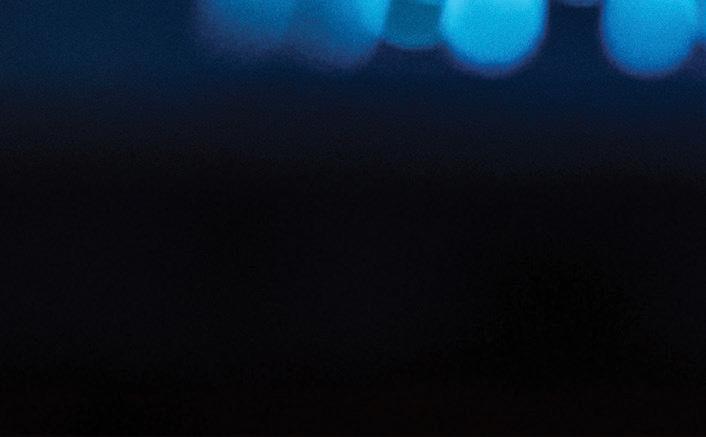

THE LATEST GENERATION OF LAPTOPS BUILT FOR BUSINESS AND CREATIVE PROFESSIONALS ARE CONSIDERABLY THINNER AND FAR MORE POWERFUL THAN EVER BEFORE. WE LOOK AT THE LATEST LINE-UP OF ‘WORKHORSES’ THAT DELIVER ON POWER, PERFORMANCE, PORTABILITY, FEATURES AND EVEN SUSTAINABILITY











 BY NEESHA SALIAN
BY NEESHA SALIAN


gulfbusiness.com 72 August 2023 Pic: Getty Images
The



helps reduce blue light exposure for added comfort during extended usage


ACER: NEW SWIFT EDGE 16 WITH AMD RYZEN 7040
Acer’s latest o ering in the Swi t Edge series comes with an ultra-thin and lightweight magnesium alloy chassis that measures only 12.95 mm (0.51 inches) in thickness and weighs a mere 1.23kg.
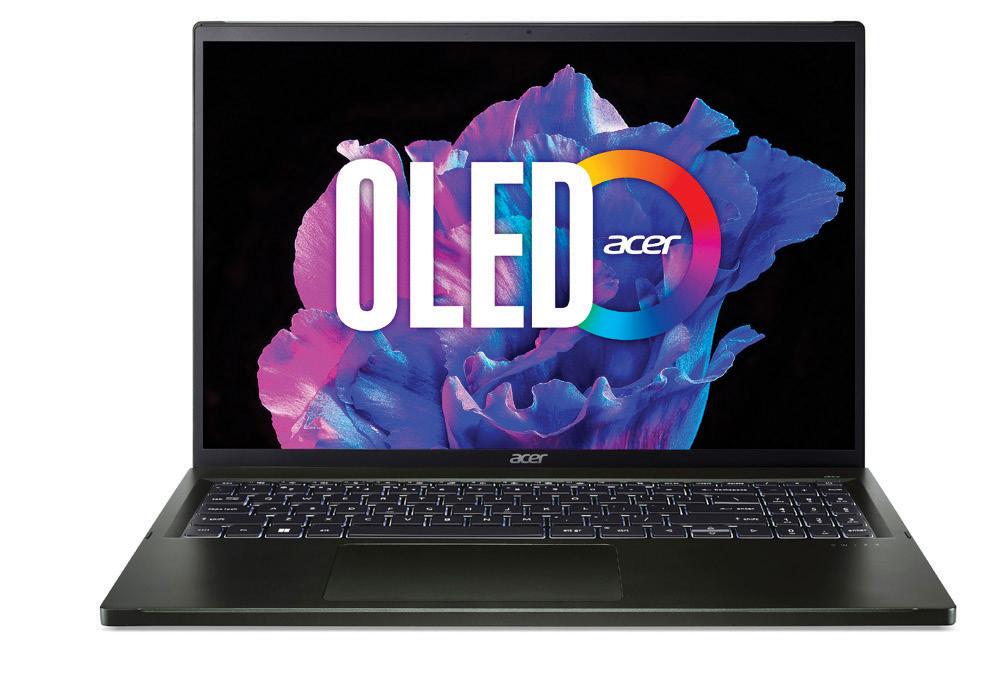
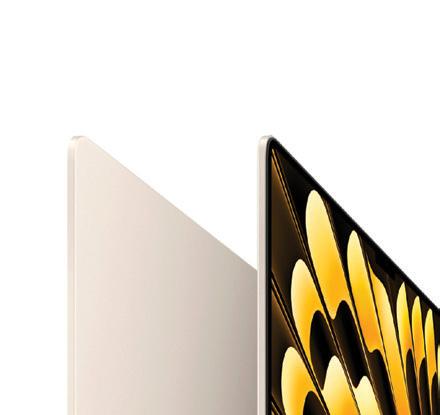
The laptop is powered by AMD Ryzen 7040 Series processors, ensuring next-gen performance and images with support for up to AMD Radeon 780M graphics. Furthermore, select models feature AMD Ryzen AI, enabling the device to handle modern AI demands with ease.
What will catch your eye is its cool 16-inch 3.2K OLED display, which has an upgraded 120Hz refresh rate and 100 per cent DCI-P3 colour gamut support, delivering true-to-life colours and stunning visuals. The TÜV Rheinland Eyesafe-certified display helps reduce blue light exposure for added comfort during extended usage. The laptop runs on Windows 11 and o ers compatibility with Wi-Fi 7, Microso t Pluton, and various smart features. With Window Studio E ects, users can put their best face forward during video conferences with the 1440p QHD webcam, featuring automatic framing, gaze correction and advanced background blur. Features such as temporal noise reduction and PurifiedVoice with AI noise reduction further enhance video call experiences. acer.com

APPLE: M2 MACBOOK AIR 15-INCH




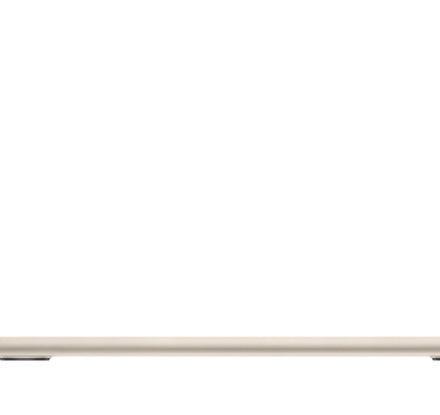
The world was introduced to the first-ever 15-inch MacBook Air in June. Featuring a wide 15.3-inch liquid retina display, power-packed M2 processor, up to 18 hours of battery life, and a six-speaker sound system, this laptop is designed for both work (preferably for content creators) and play (avid gamers).


The ‘fanless’ model measures only 11.5mm, making it the world’s thinnest 15-inch laptop, and weighs 1.49kg, so it’s incredibly portable. Its formidable 8-core CPU is impressive; M2 also delivers 100GB/s of memory bandwidth and supports up to 24GB of fast unified memory, making multitasking and working with complex workloads super smooth and easy.
The 1080p FaceTime HD camera is ideal for FaceTime calls and video conferencing. Combined with the processing might of the advanced image signal processor on M2, users will look sharp on video calls. A three-mic array also captures clean audio, using advanced beamforming algorithms, so users come through loud and clear on video calls.
Eco warriors will love the new MacBook Air. It incorporates recycled materials across its components and more than 99 per cent of the packaging is fibre-based, which aligns with the company’s goal of completely removing plastic from its packaging by 2025. apple.com


The ‘fanless’ model measures only 11.5mm, making it the world’s thinnest 15-inch laptop
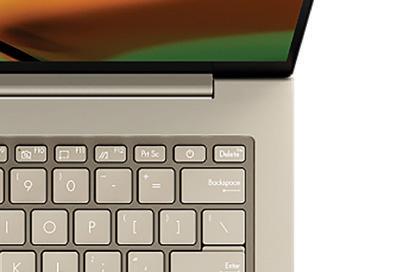


ASUS: ZENBOOK 14X OLED

At 16.5mm thin and weighing 1.5kg with a 14.5 inch OLED screen, this laptop is ideal for business execs and creative professionals on the go. With a ceramic-style cover in beige, and an 89 per cent screen ratio, the laptop is great to look at; you’ll be happy to pull it out of your bag to show it o . Available with up to 13th Generation Intel Core i9-13900H processors and NVIDIA GeForce RTX 3050 graphics, it provides best-in-class performance. Its gamut of connectivity ports combined with USB-C easy charge means you are never out of options for powering up.
The precision-engineered 180° ErgoLi t hinge makes sharing content easy, while the ASUS ScreenPad bosters productivity for those on the move.
The ASUS device features a Corning Gorilla Glass display and is certified with US military grade toughness – perfect for people on the move. asus.com
Lifestyle / Technology
Pics: Supplied gulfbusiness.com August 2023 73
The precisionengineered 180° ErgoLift hinge makes sharing content easy
TÜV Rheinland Eyesafecertified display
Lifestyle / Technology
HP: ELITEBOOK 1040 G9

The ‘2-in-1’ Notebook PC is a premium business laptop designed to meet the demands of dynamic workstyles and ever-changing business environments. One of the standout features of HP EliteBook 1040 G9 is its slim, lightweight design and portability.
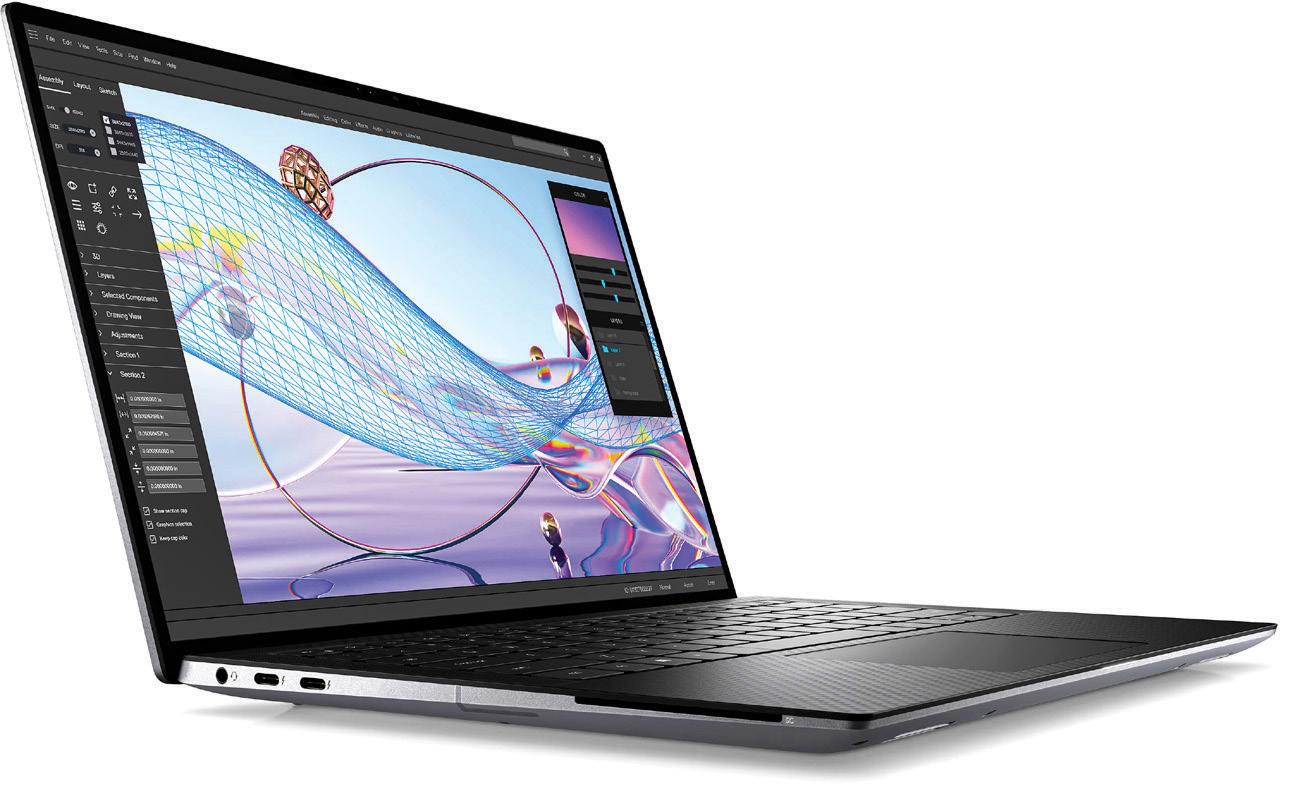
The laptop’s 14-inch screen with the ‘adaptive color’ feature adjusts automatically with the ambient light in the room to represent the true colour of the content being displayed; making for a better viewing experience. The notebook PC features HP Wolf Security for Business, which creates a hardware-enforced, always-on, resilient defence, providing advanced security against cyberthreats while keeping your data and personal information safe.
The Elitebook series features built-in 5G connectivity, providing even faster and more reliable connections. Another plus: HP has made sustainability a top priority, integrating a minimum of 30 per cent post-consumer recycled plastic in the bezel and at least 50 per cent post-consumer recycled plastic in the keycaps, as well as the outer box packaging and display bezel of this notebook. Additionally, the outer box packaging is entirely sourced from sustainable materials. hp.com
The laptop’s 14-inch screen with the ‘adaptive color’ feature adjusts automatically with the ambient light in the room

LENOVO: NVIDIA GEFORCE RTX 40 SERIES
The new intelligent privacy feature darkens the screen when you look away



DELL TECHNOLOGIES: PRECISION 5470 MOBILE WORKSTATION








The Precision 5470 is the world’s first laptop based on the 12th Gen Intel Core H-series processor. It comes with up to 64GB of DDR5 memory, up to 4TB of storage and up to NVIDIA RTX A1000 graphics.
More power means more heat, which is why Dell engineers developed a new thermal management system that sits within the compact laptop; it doesn’t comprise memory or the Thunderbolt ports. Patented technology helps the system run at high speeds needed for complex workflows.
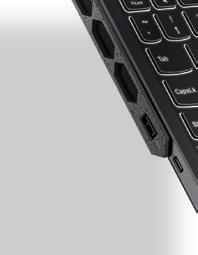

The laptop’s immersive 14-inch Infinity Edge display comes with TUV-certified ComfortView Plus, a hardware-based low blue light filter that doesn’t devour resources. It features a high-speed Wi-Fi 6E connection and an AI-based so tware that can “learn” work styles, automatically improving application performance, battery runtime, audio settings and privacy.

You will love the new intelligent privacy feature that darkens the screen when users look away, allowing users to conceal sensitive information when an onlooker is detected. It also provides the world’s first simultaneous multi-network connection for faster data and video downloads.
The laptop uses 100 per cent recycled or renewable materials in the packaging. dell.com




Lenovo’s new Legion laptops are bolstered by the formidable Nvidia GeForce RTX 40 series GPUs with support for artificial intelligence (AI)-driven experiences, making these machines appealing to creative professionals.


You can turn your room into a home studio powered by Nvidia Broadcast with livestreams enhanced with features such as noise and echo removal. These also help with video calls and voice chats. Other great features such as ‘auto frame’ automatically track your movements to ensure you stay in frame and ‘eye contact’ to make it look like you’re looking directly at the camera despite glancing sidewards.
Equipped with Max-Q, a suite of AI technologies aimed to optimise every aspect of the machine, the laptop has a thin and lightweight chassis, with features such as ‘dynamic boost’ for increased performance, ‘battery boost’ and ‘advanced optimus’ for enhanced battery life, and ‘WhisperMode’ to manage fan speeds and thermal performance. lenovo.com
Other great features such as ‘auto frame’ automatically track your movements to ensure you stay in frame
Pics: Supplied
74 August 2023









































































































































































































REGISTER YOUR INTEREST FIND OUT MORE GulfBusiness.com #WomenInBusiness GulfBusiness THE FIRST IN A SERIES OF WOMEN IN BUSINESS EVENTS FOR EVENT SPONSORSHIP AND GENERAL ENQUIRIES CONTACT manish.chopra@motivate.ae | mansi.khatwani@motivate.ae | sangeetha.js@motivate.ae
Experience the Future of Living!

Join



From smart homes and renewable energy solutions to urban planning and sustainable design, the possibilities are limitless!
Immerse yourself in the next generation of property and explore over 300 exhibitors onsite from world-class developers, consultants, facilitators, designers, architects, �nancial institutions, PropTech developers, governments, and top-level industry experts.
Don’t miss the most anticipated event of the year!
@csglobalksa cityscapeglobal @csglobalksa cityscapeglobal.com Foundation Par tners Destination Par tner Sponsored by Co-Organised by 10 - 13 September 2023
Scan here to register for your free pass
Riyadh Exhibition & Convention Center Malham - Kingdom of Saudi Arabia
us
Uncover the
for a captivating journey into the future of living.
latest advancements that transform the way we live, work, and connect with our living spaces.






















































































































































































































 Alan O’Neill Managing director of Kara, change consultant and speaker
Alan O’Neill Managing director of Kara, change consultant and speaker














 BY DEFINITION
BY DEFINITION









































































































































 Photo: Getty Images/cagkansayin
Photo: Getty Images/cagkansayin





















































































































































 Aston Martin Valour
Aston Martin Valour
 Carolina
Carolina













 BY NEESHA SALIAN
BY NEESHA SALIAN



































 BY NEESHA SALIAN
BY NEESHA SALIAN






















































































































































































































